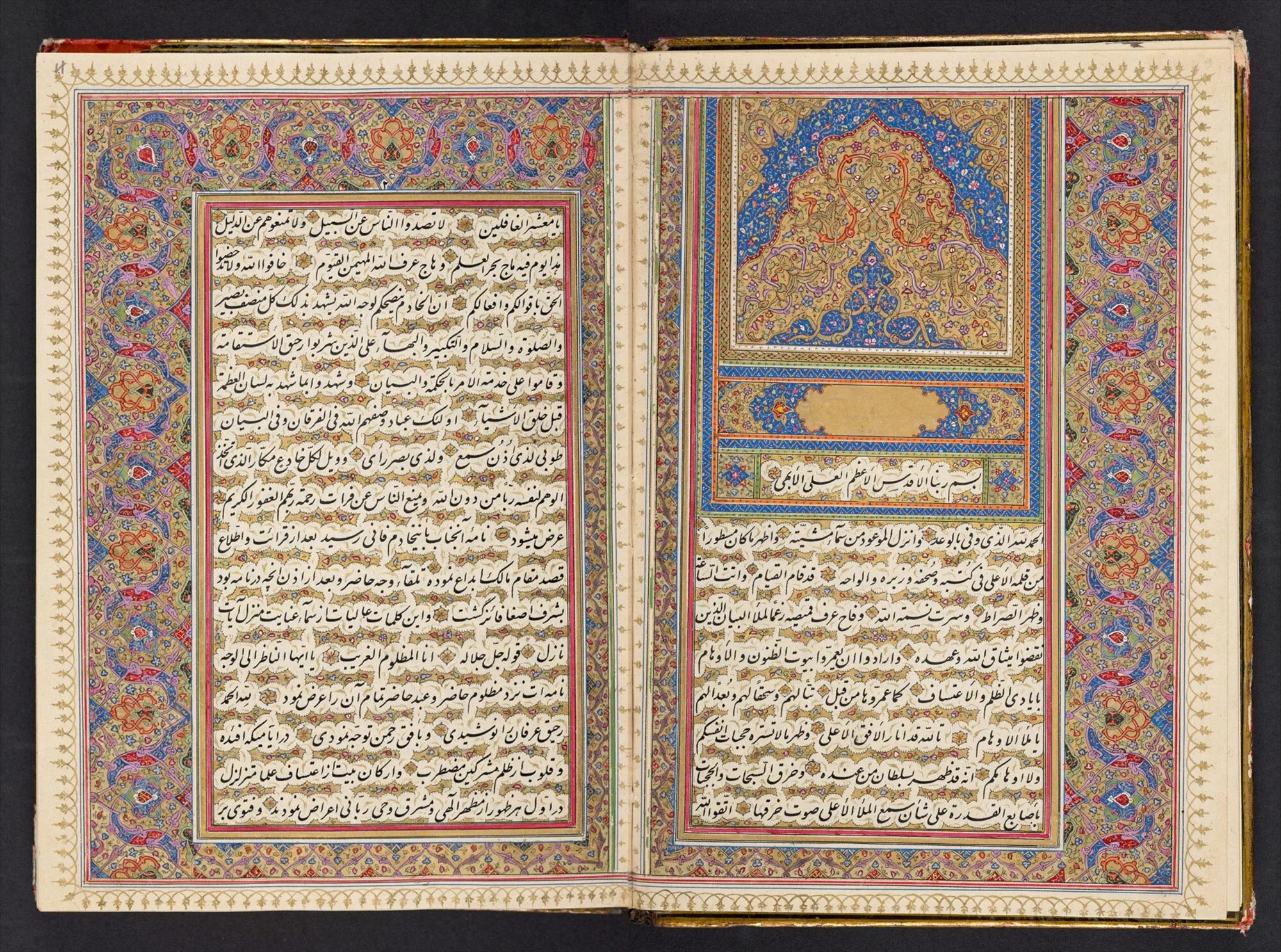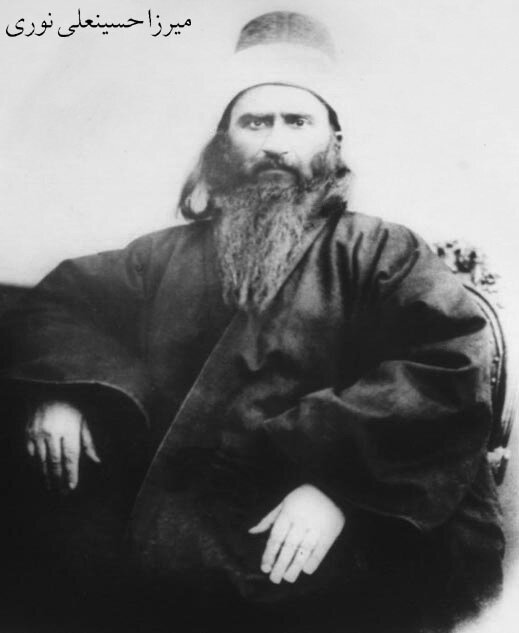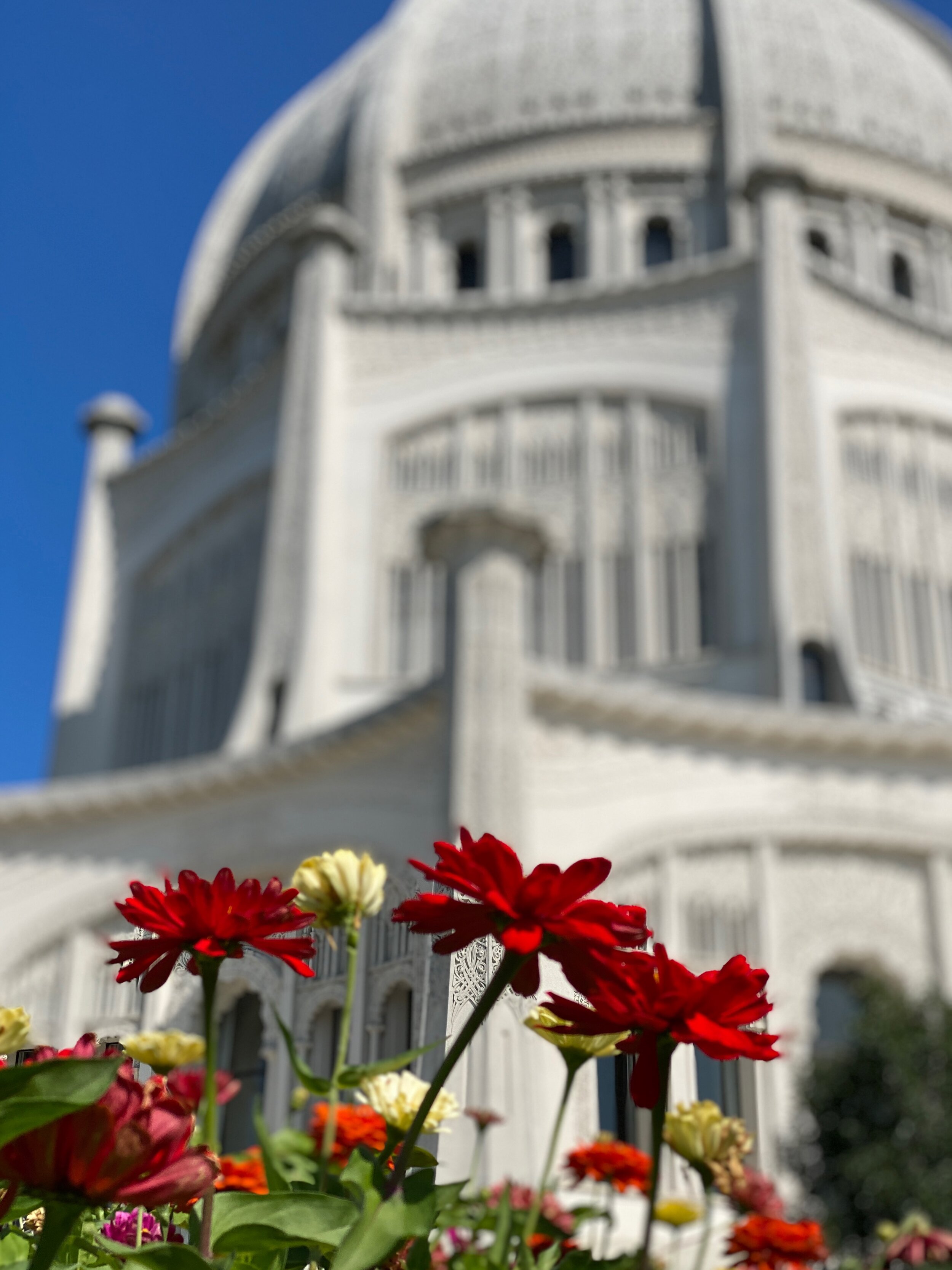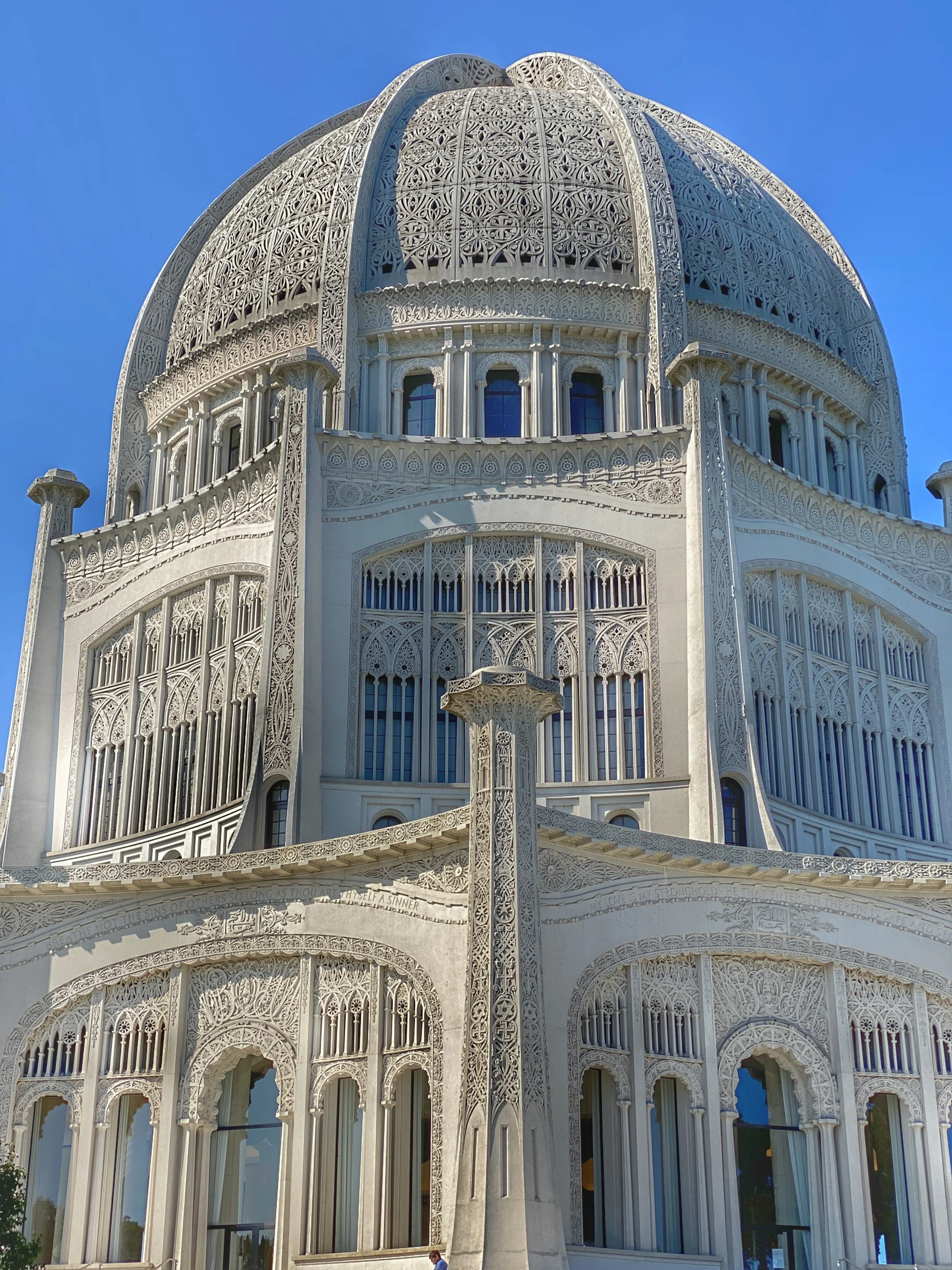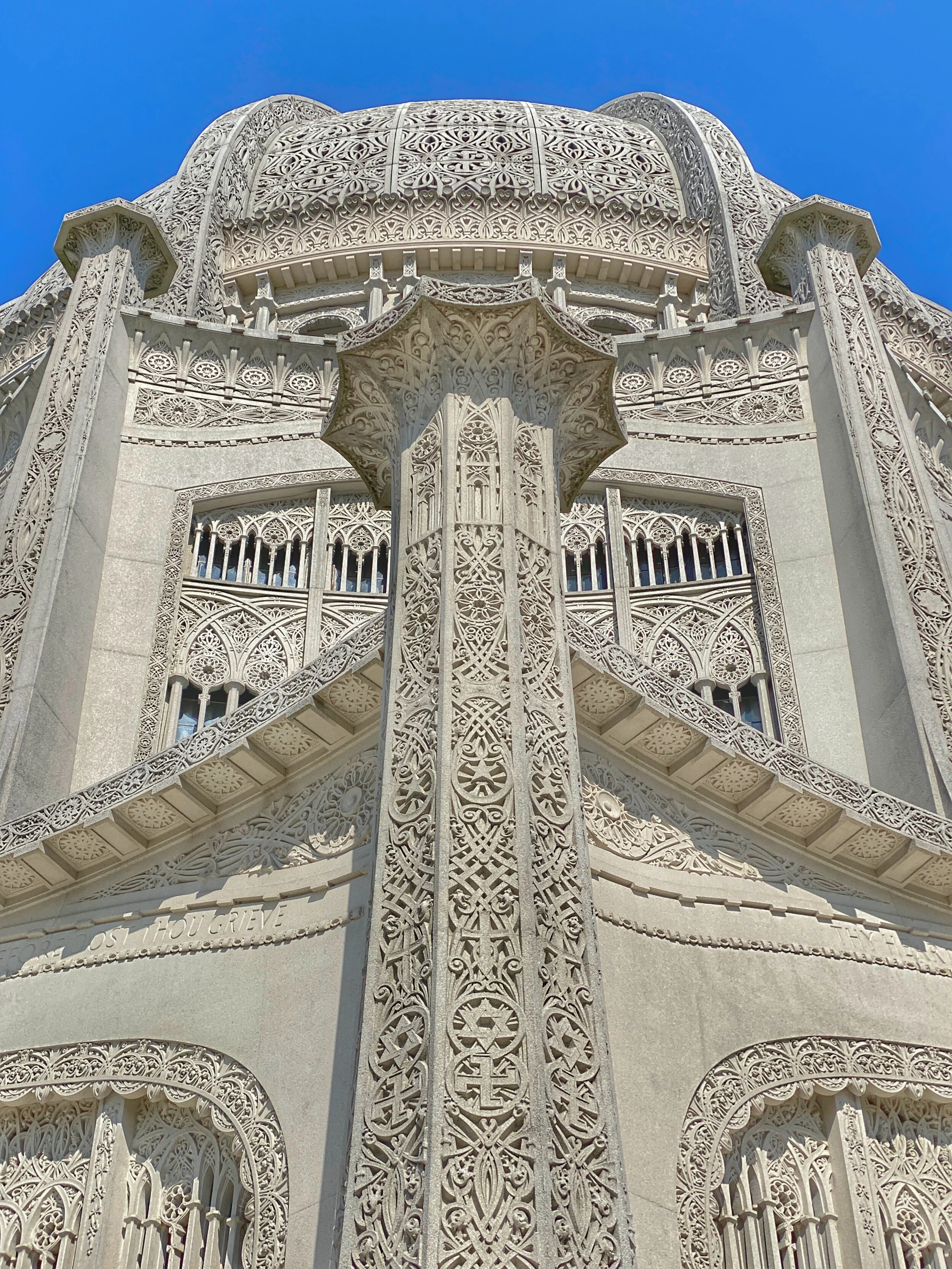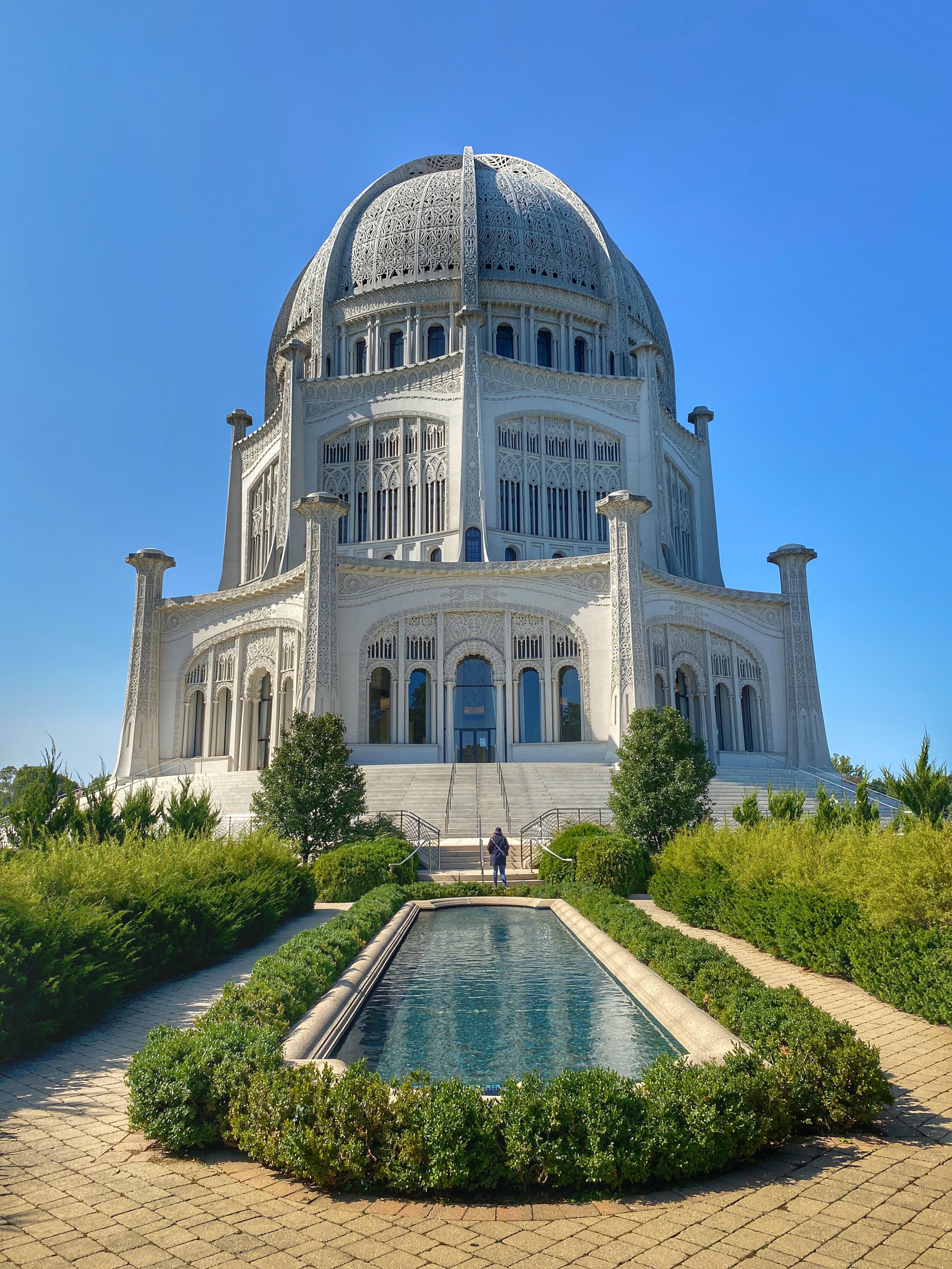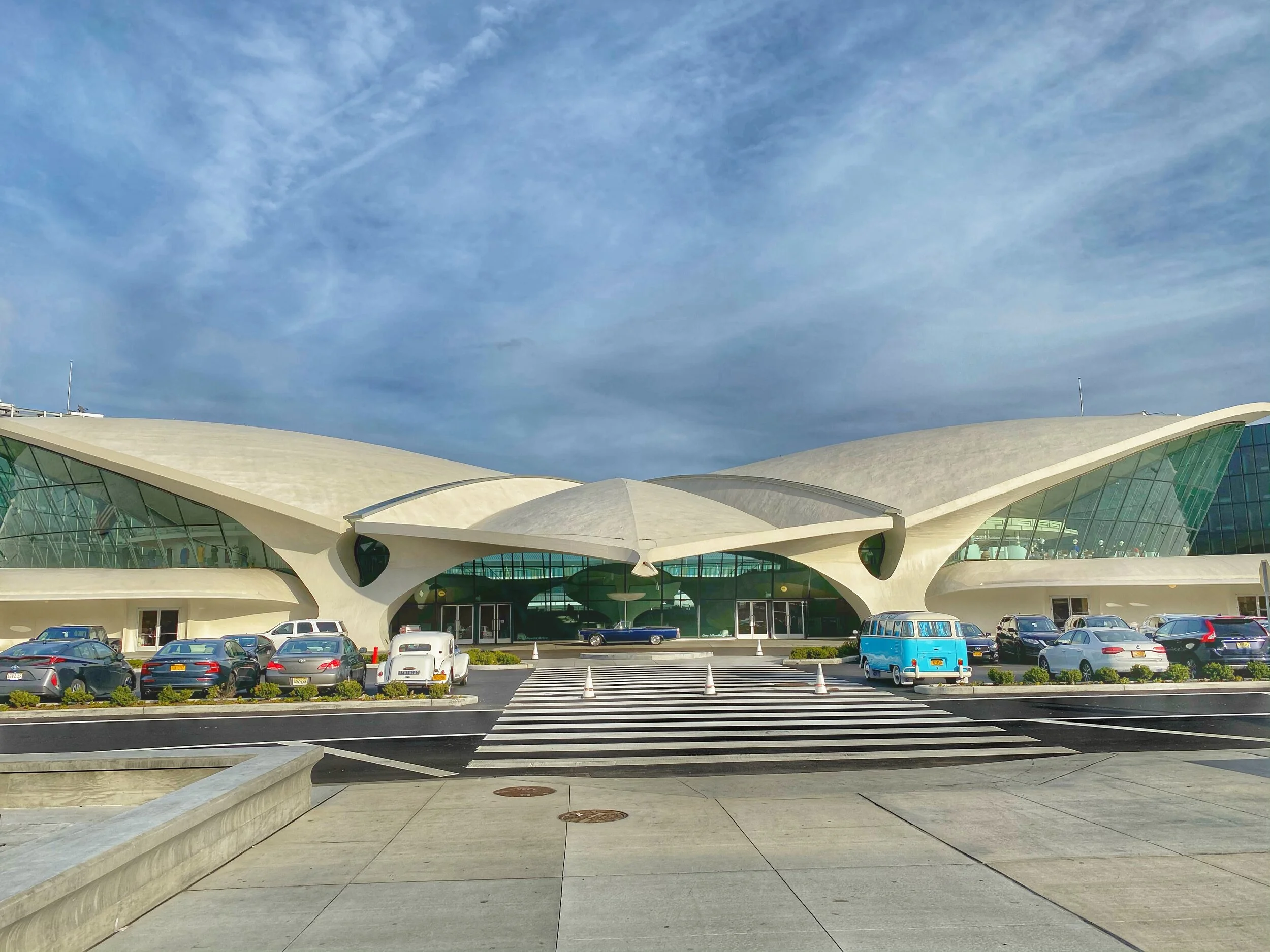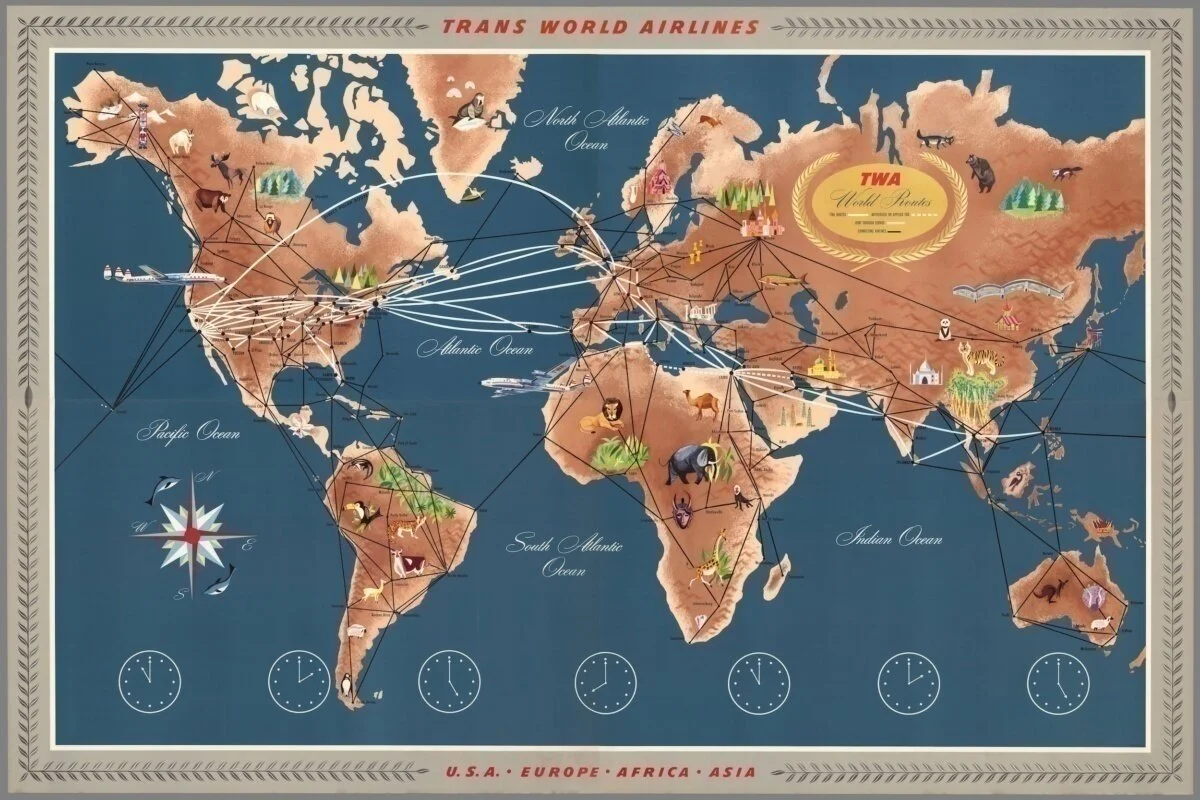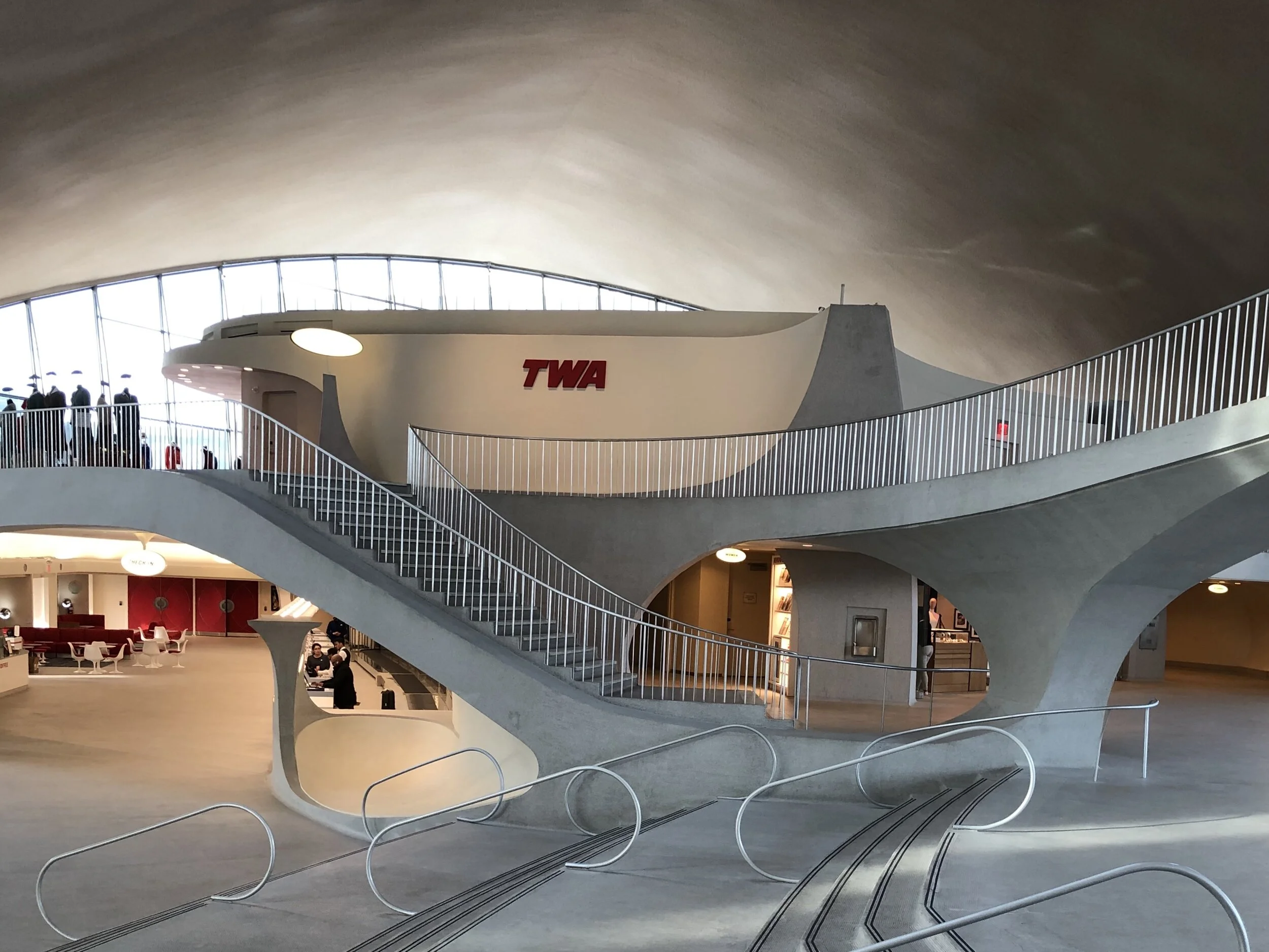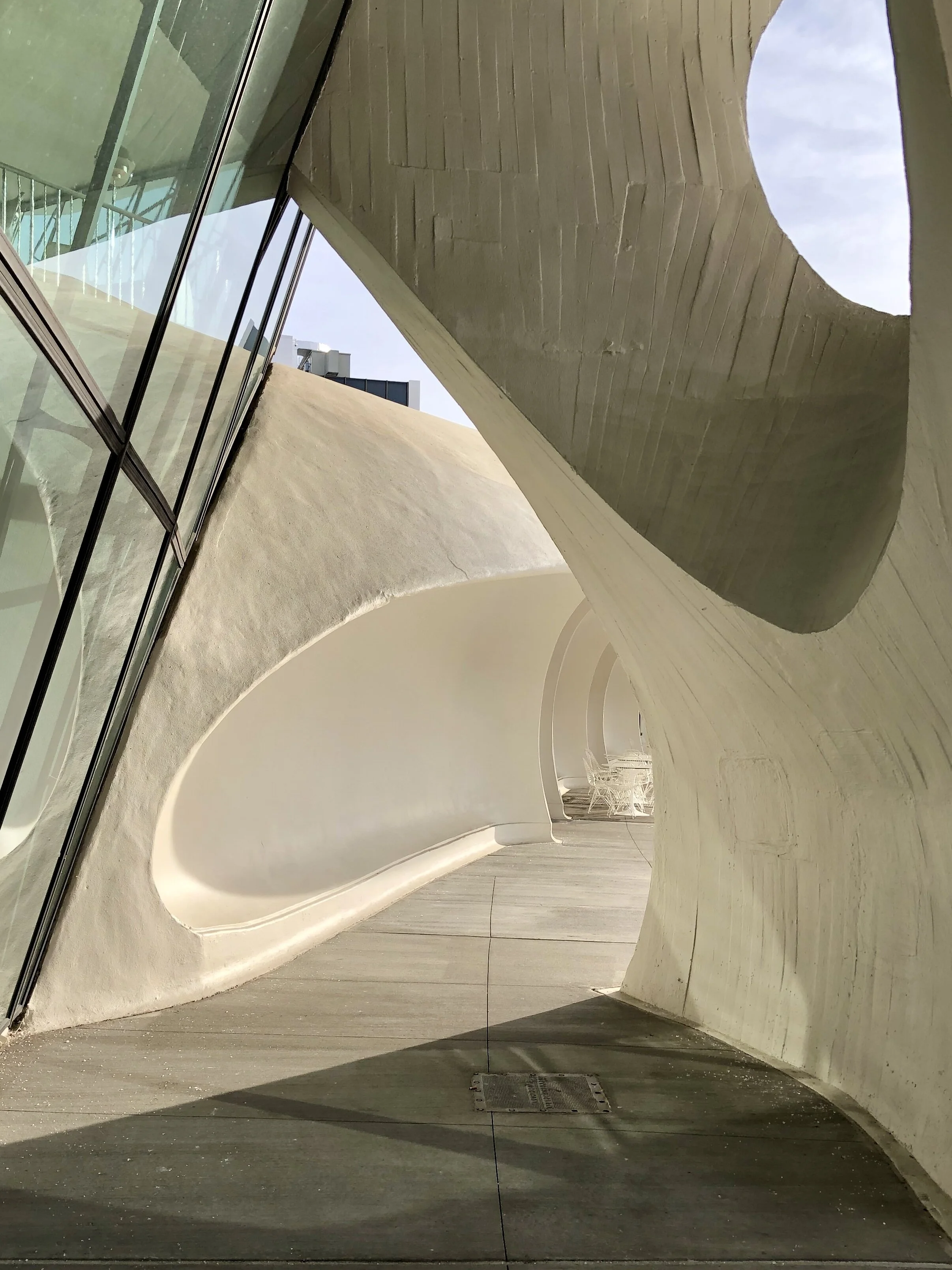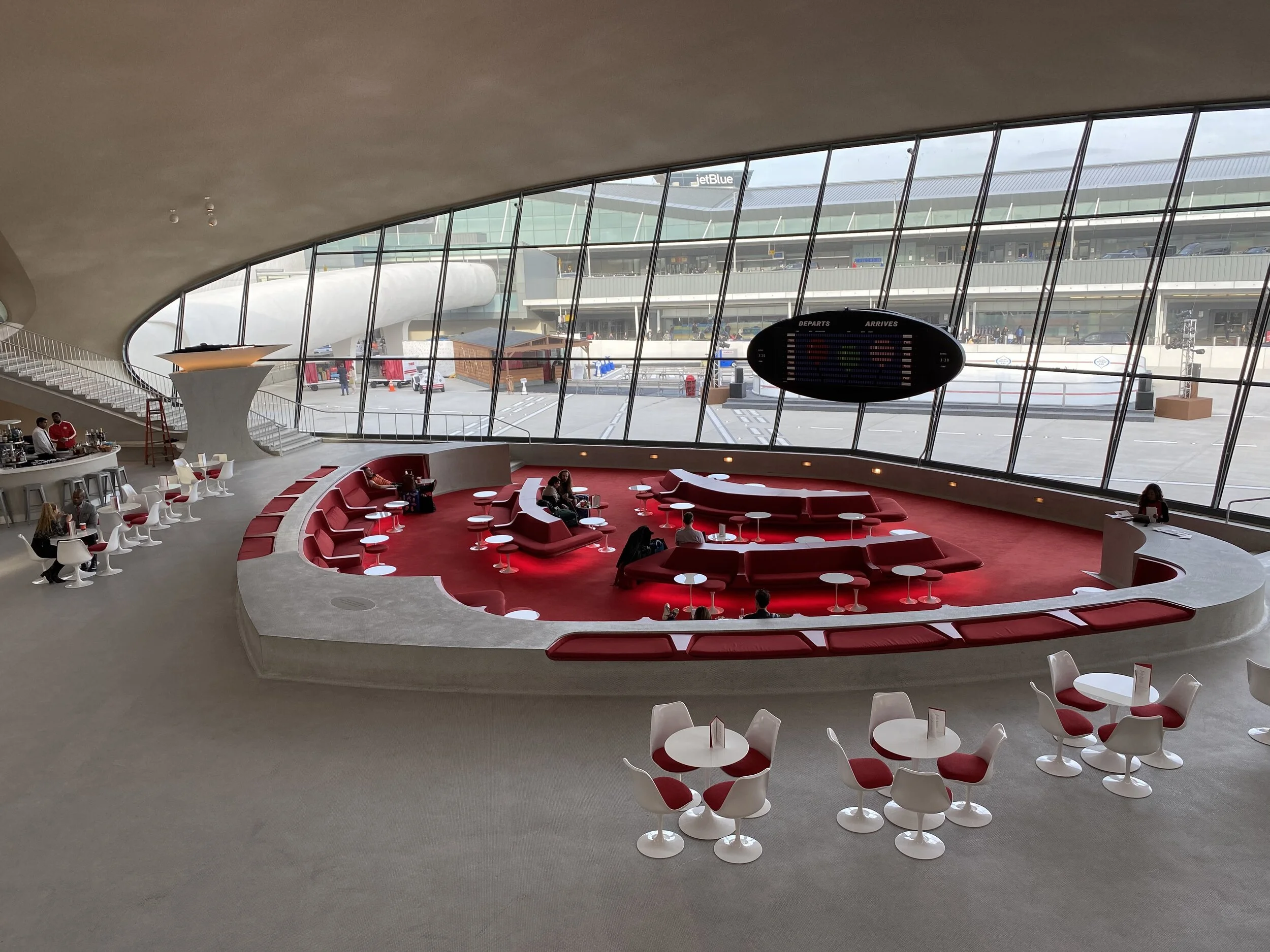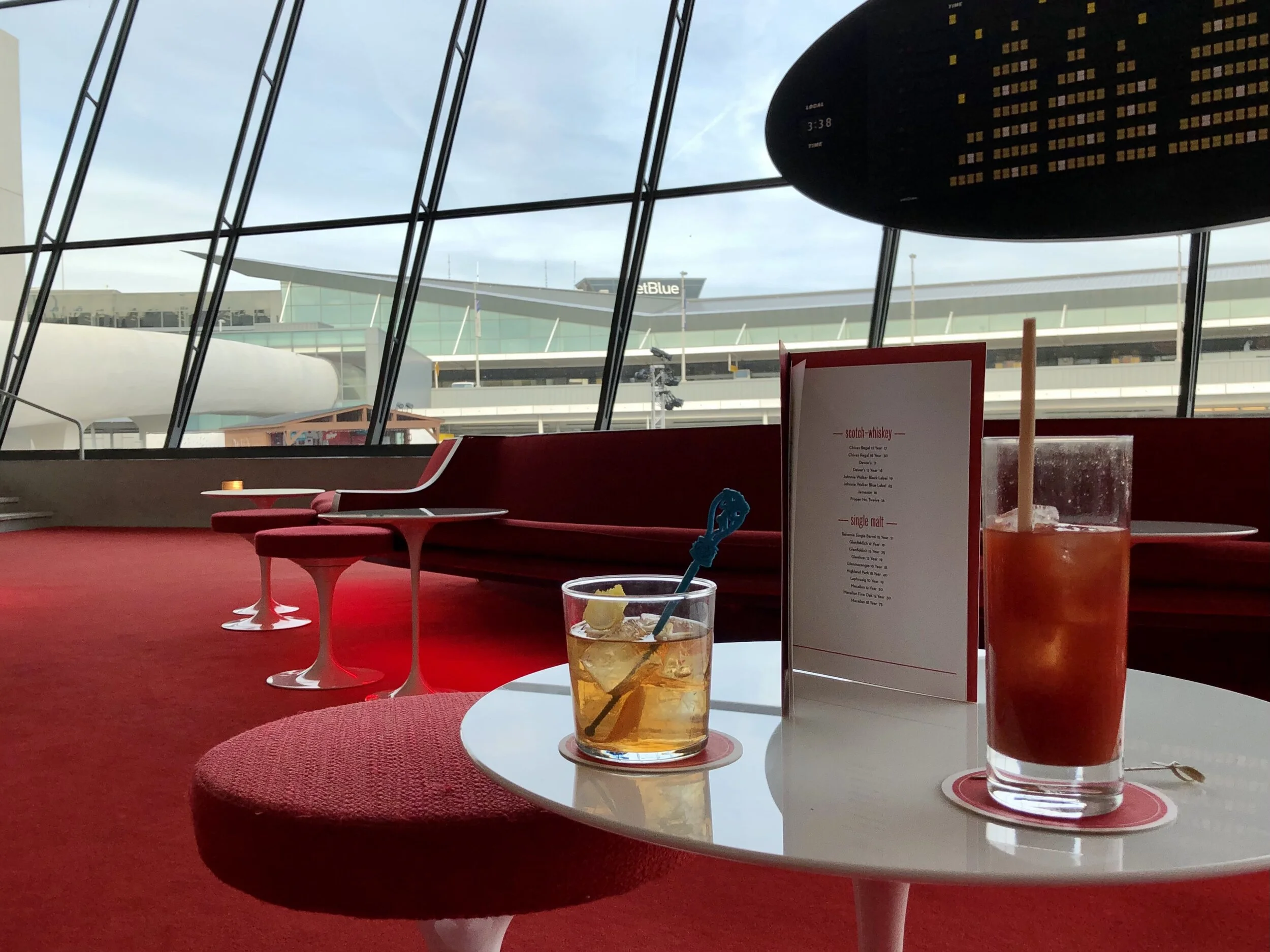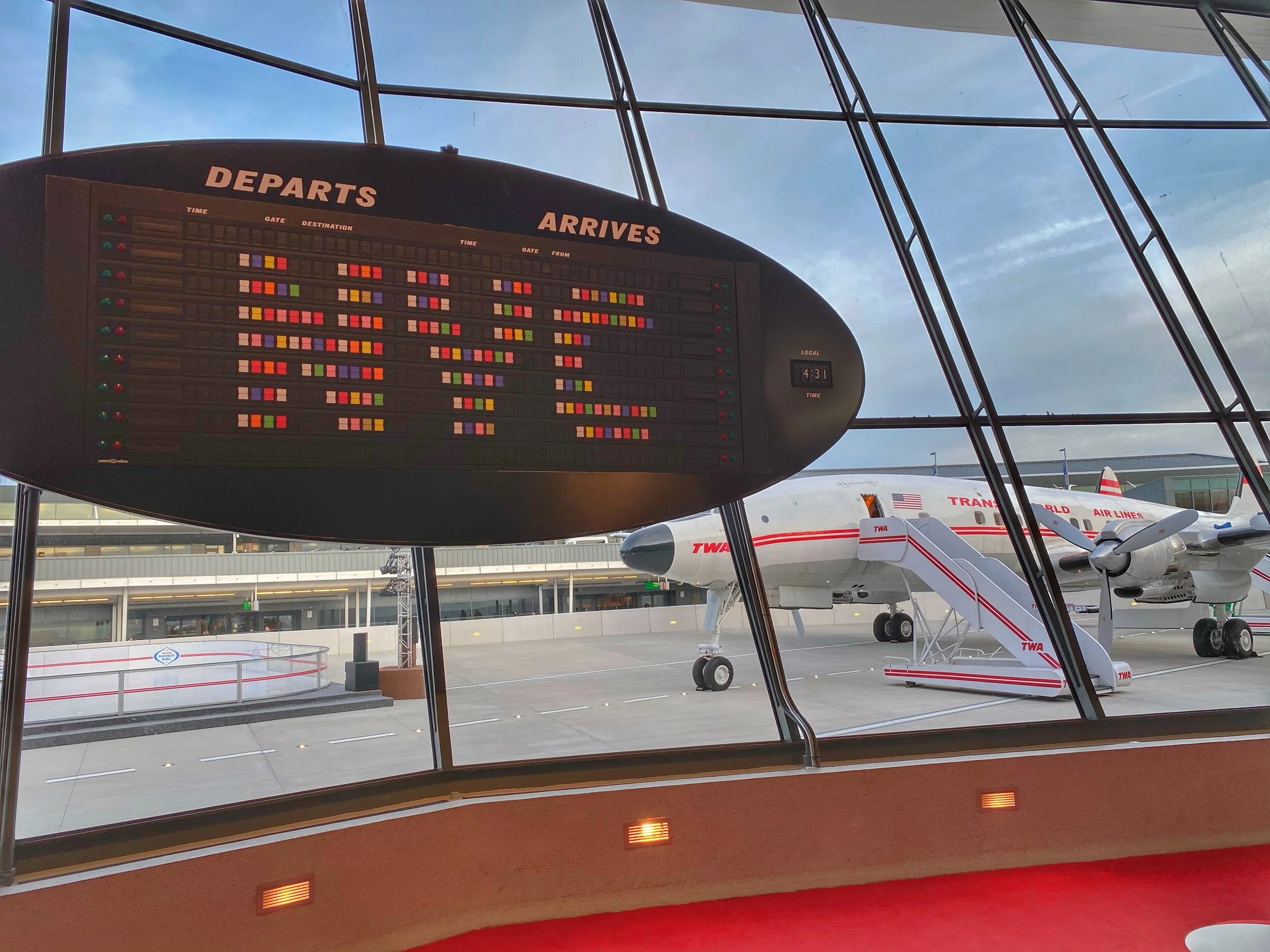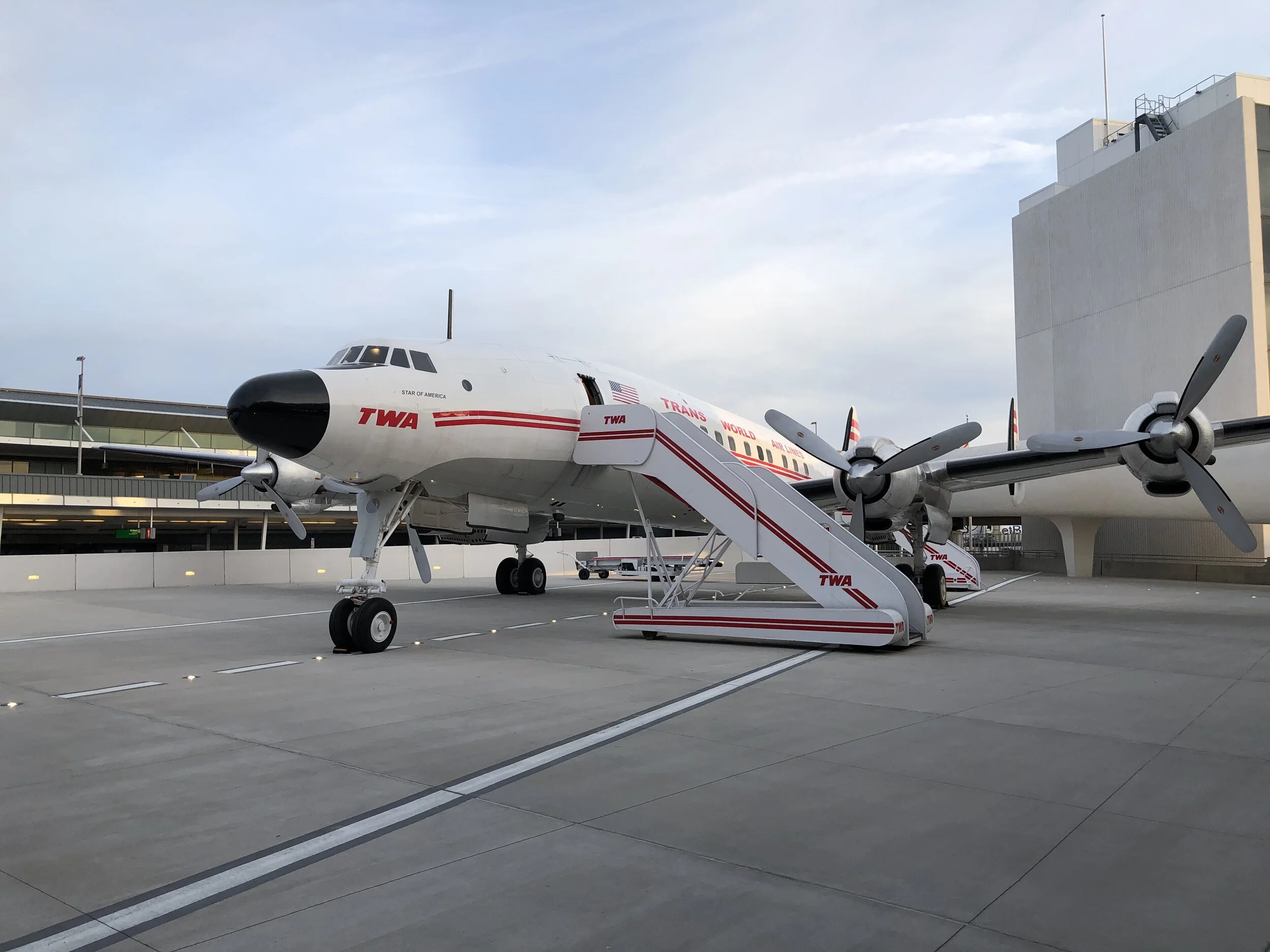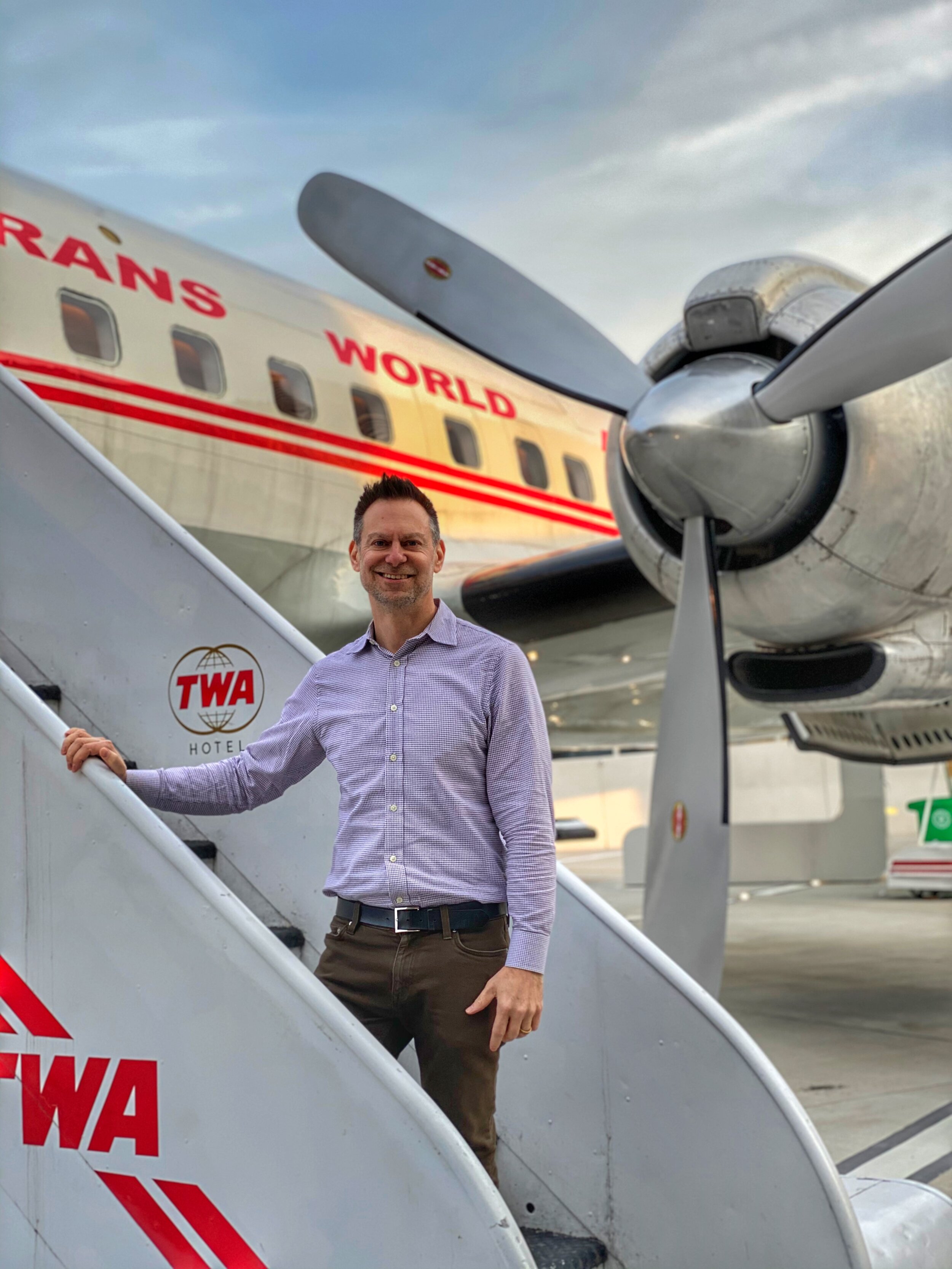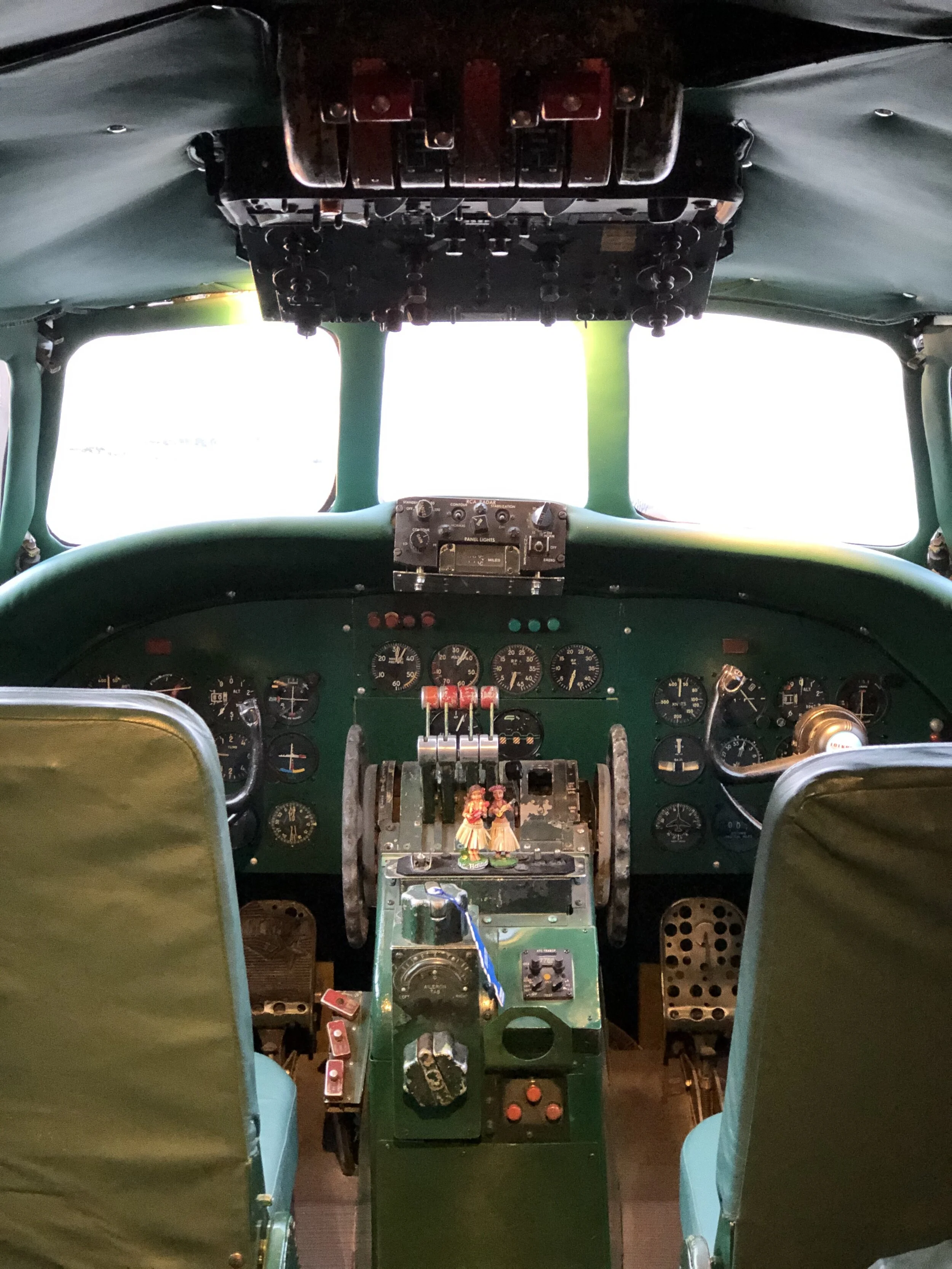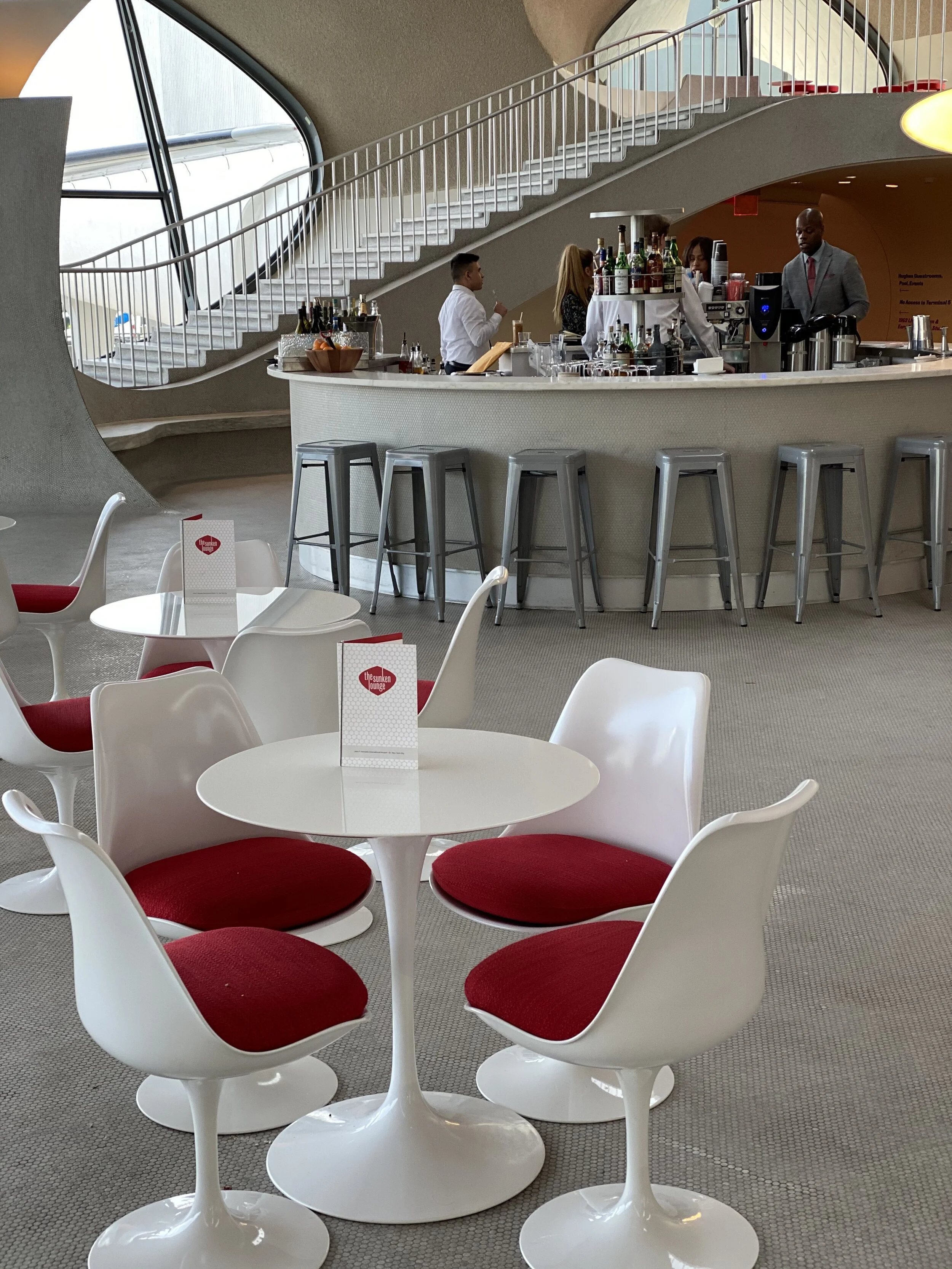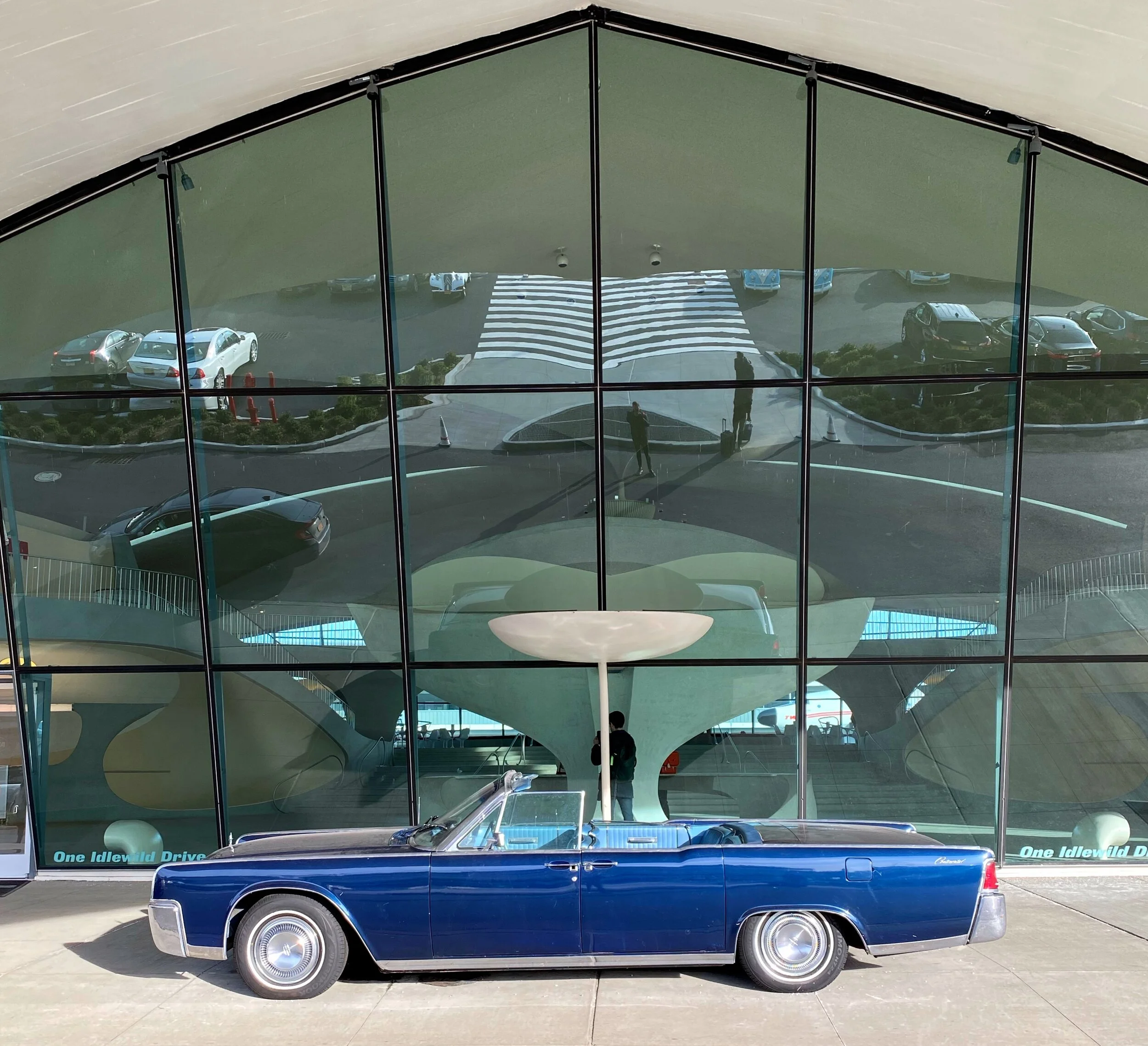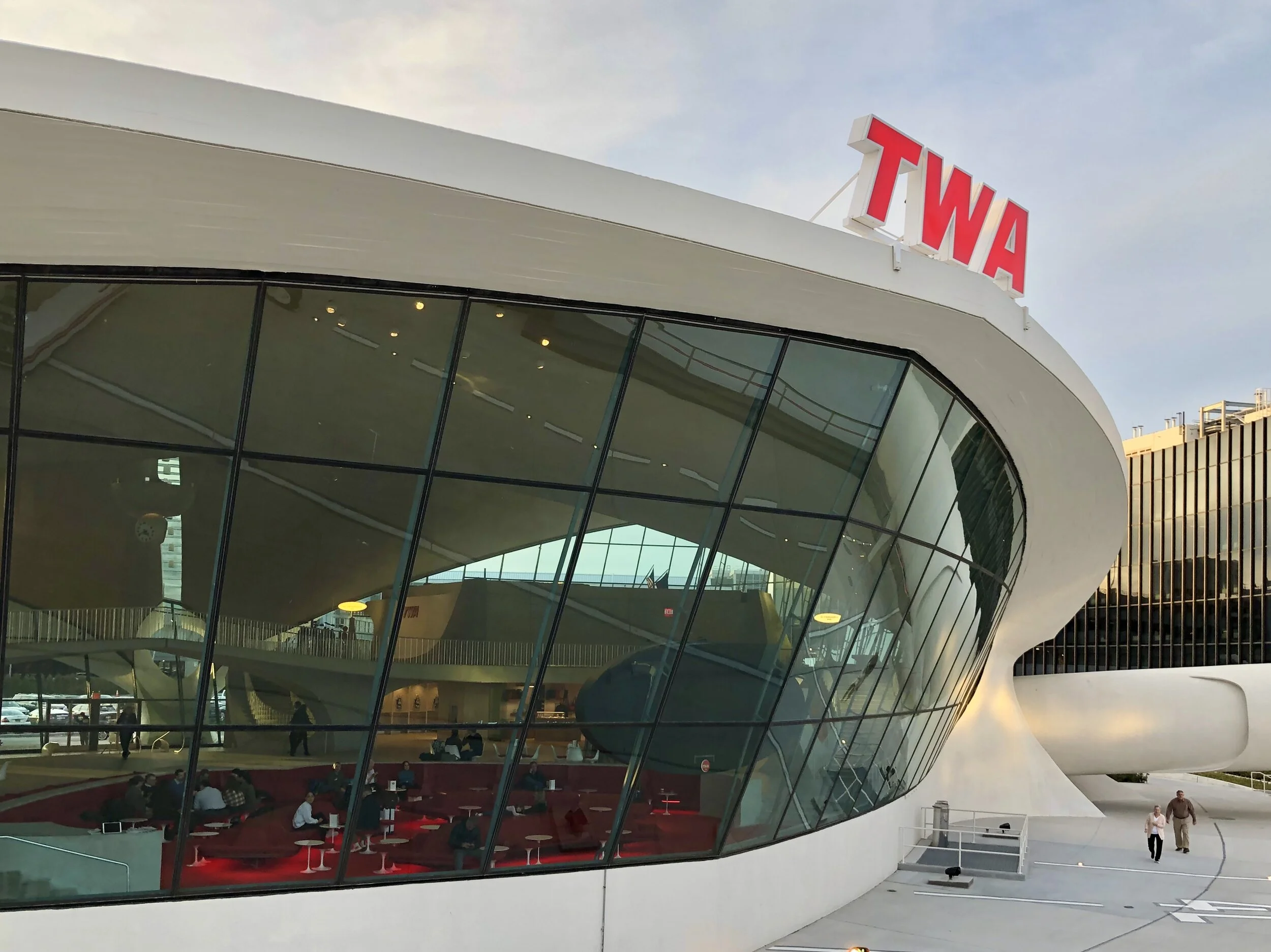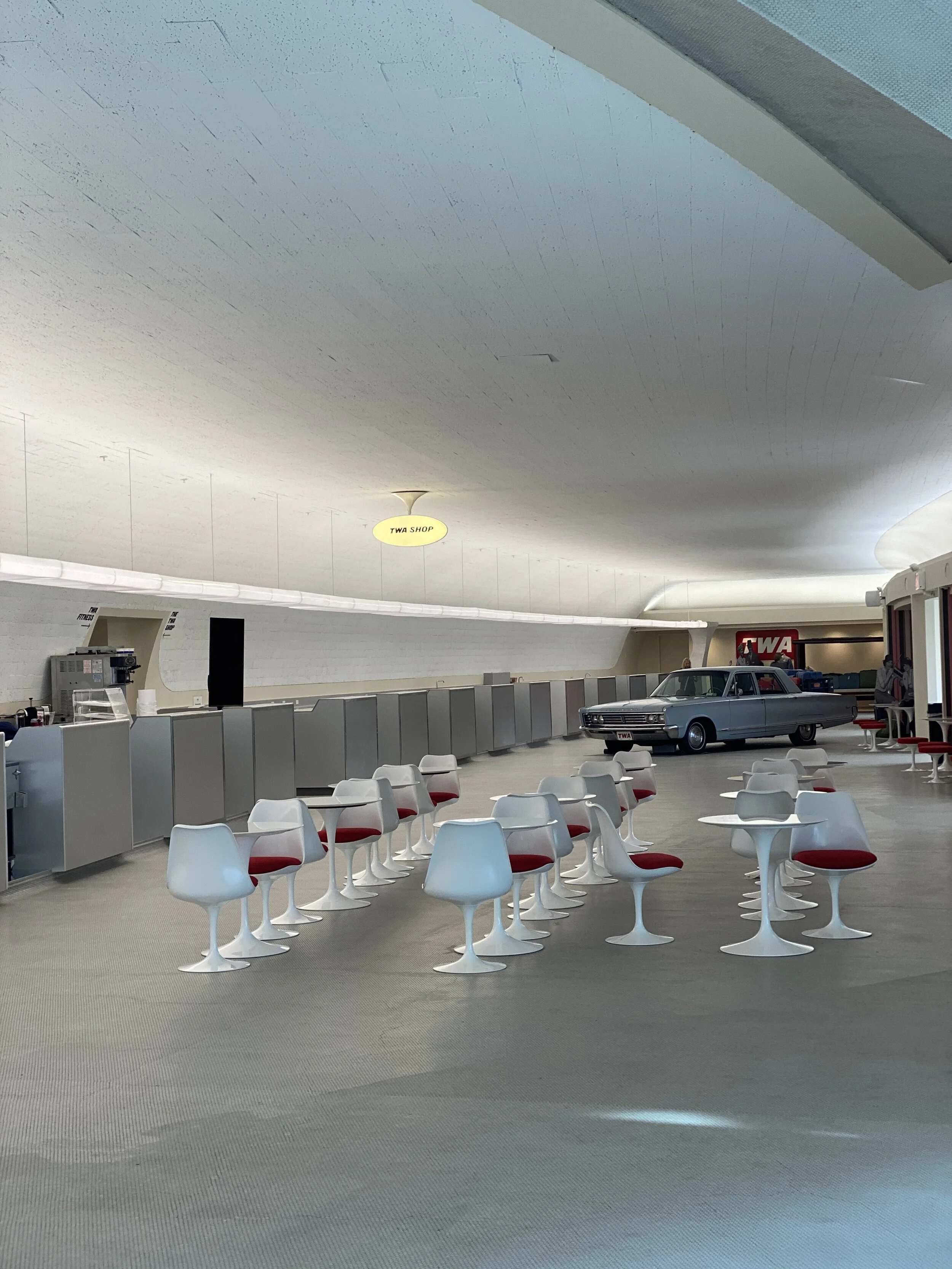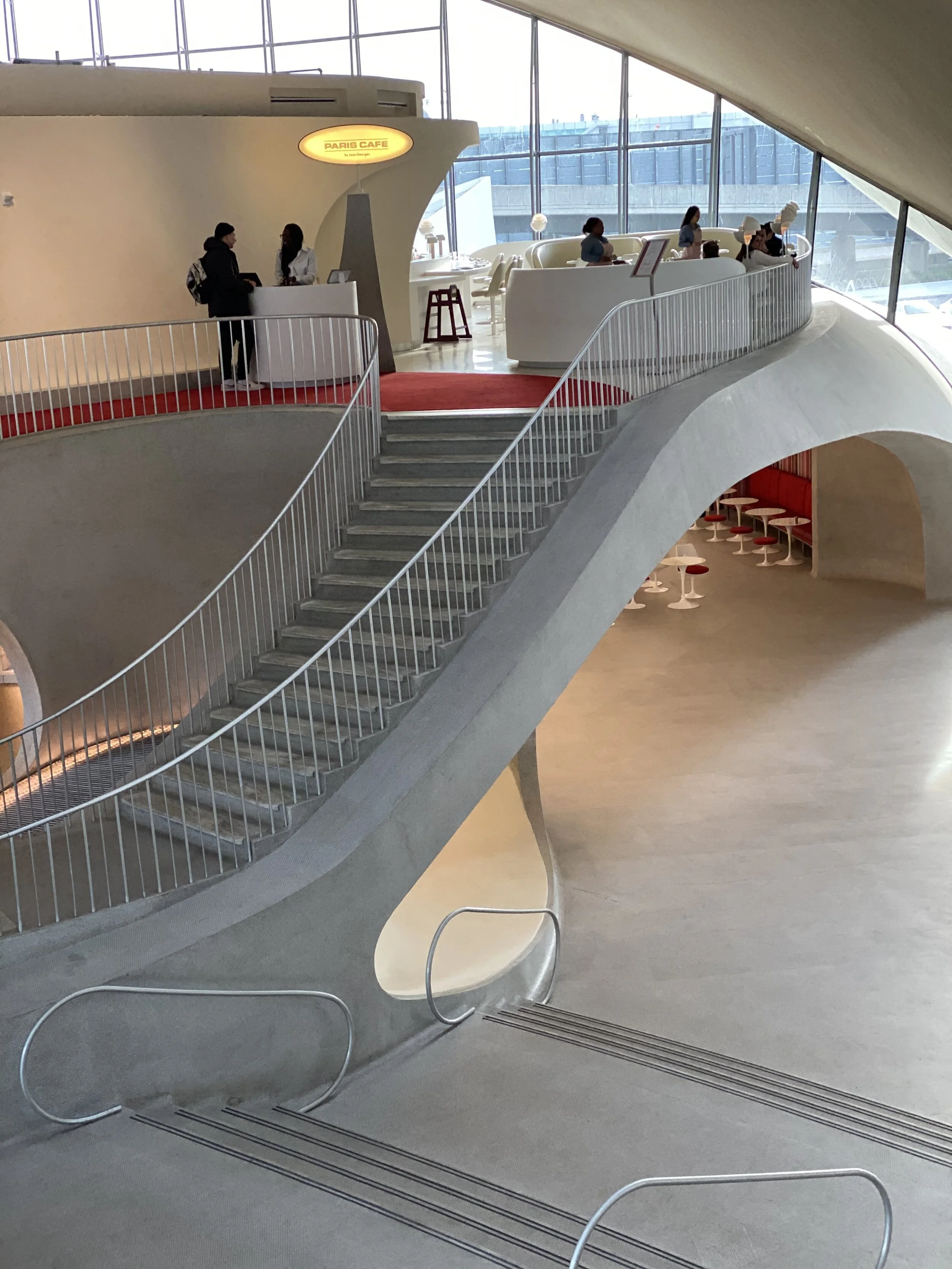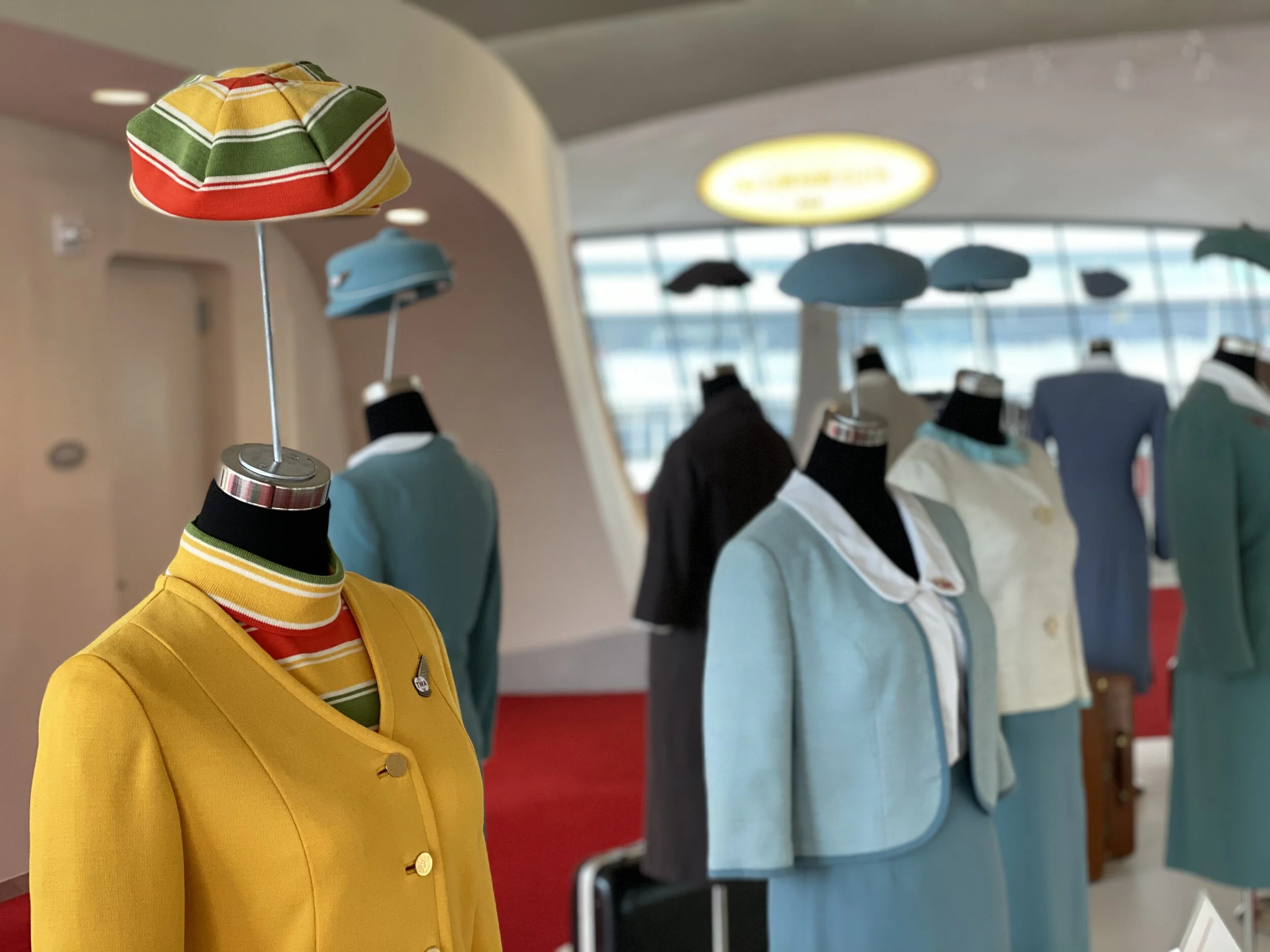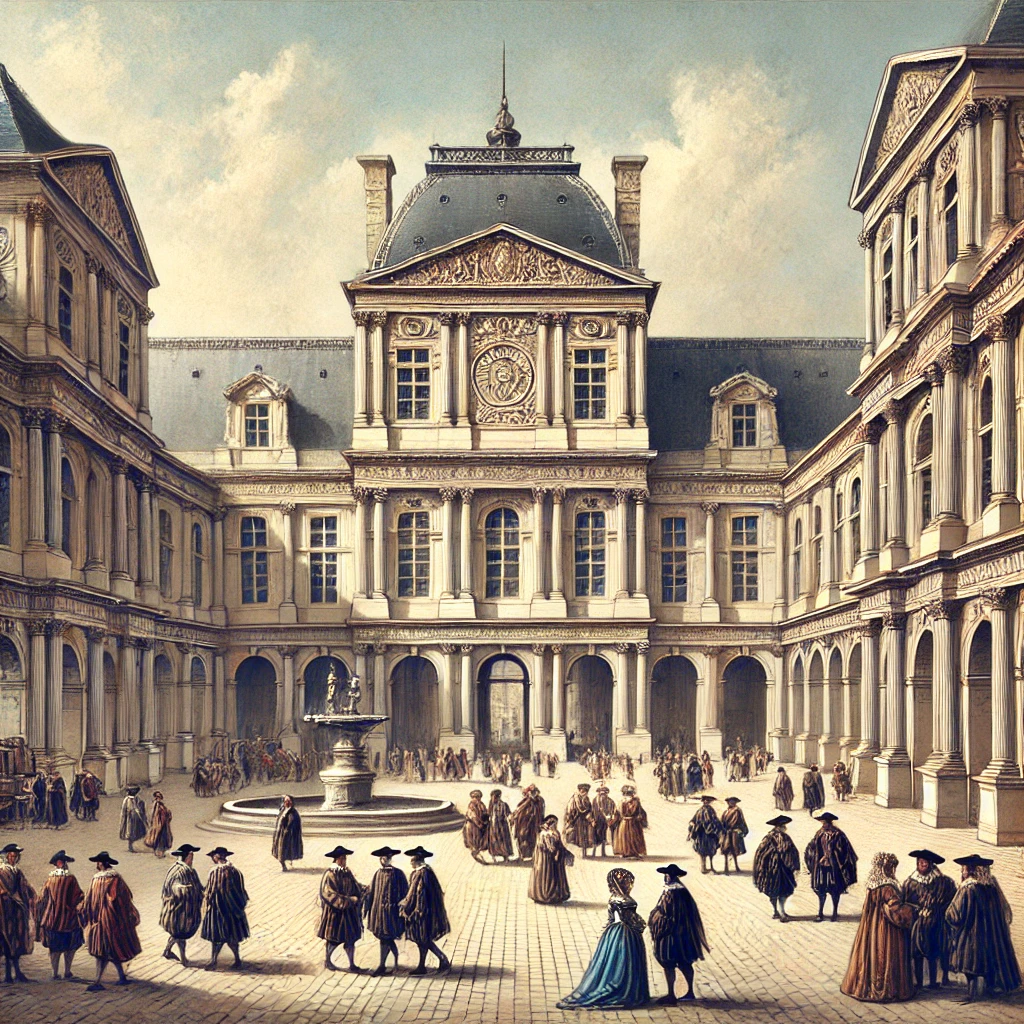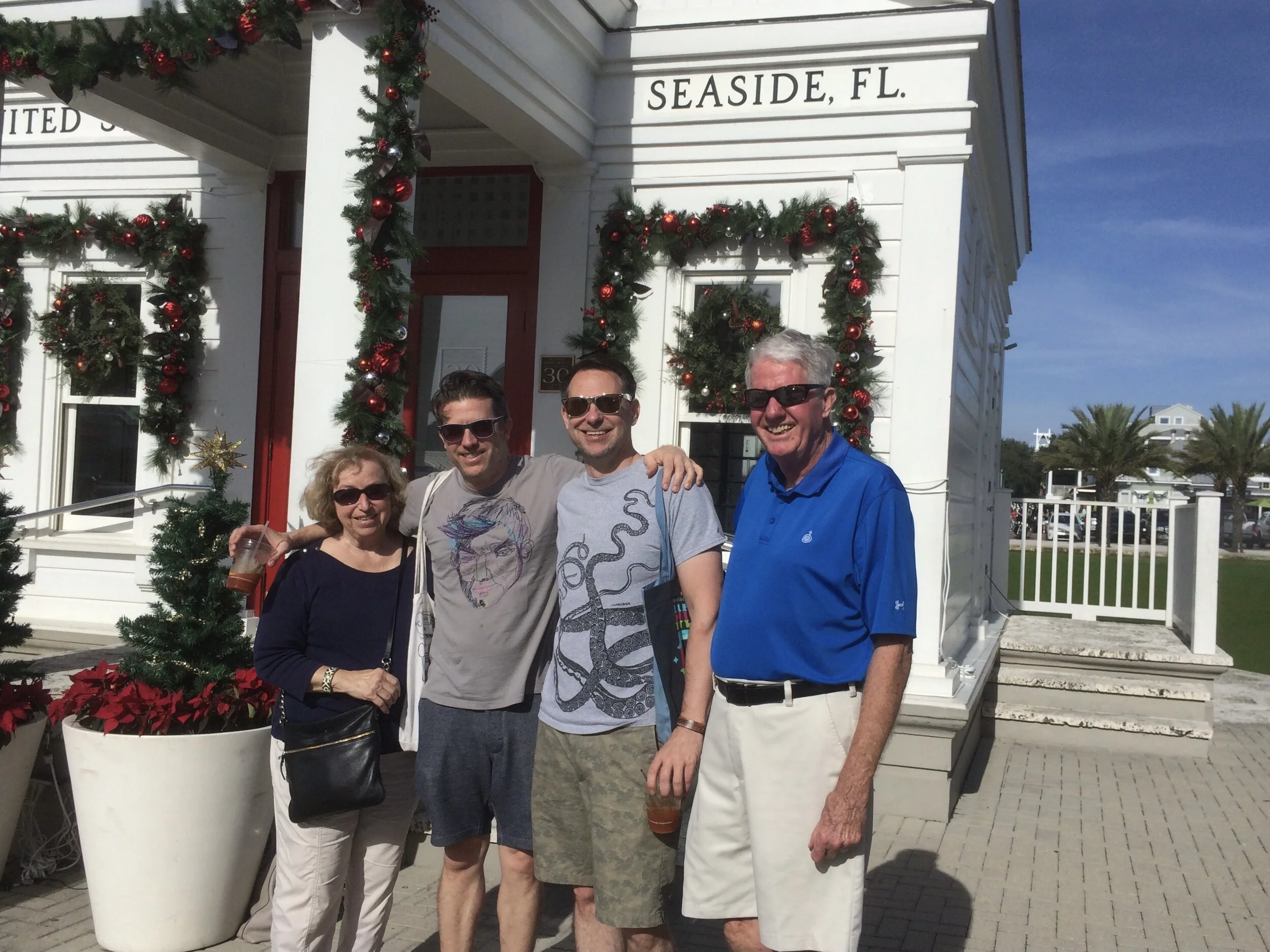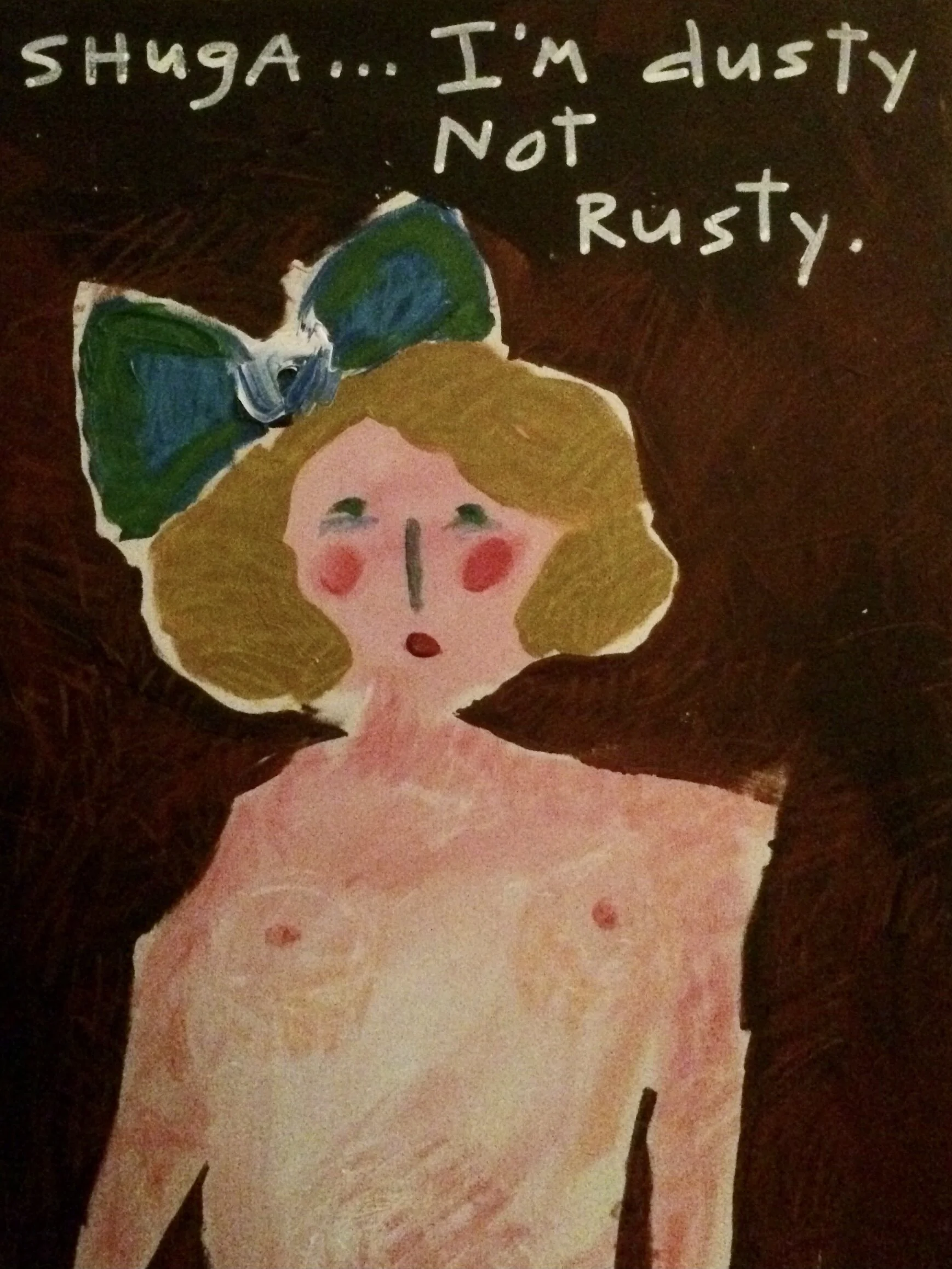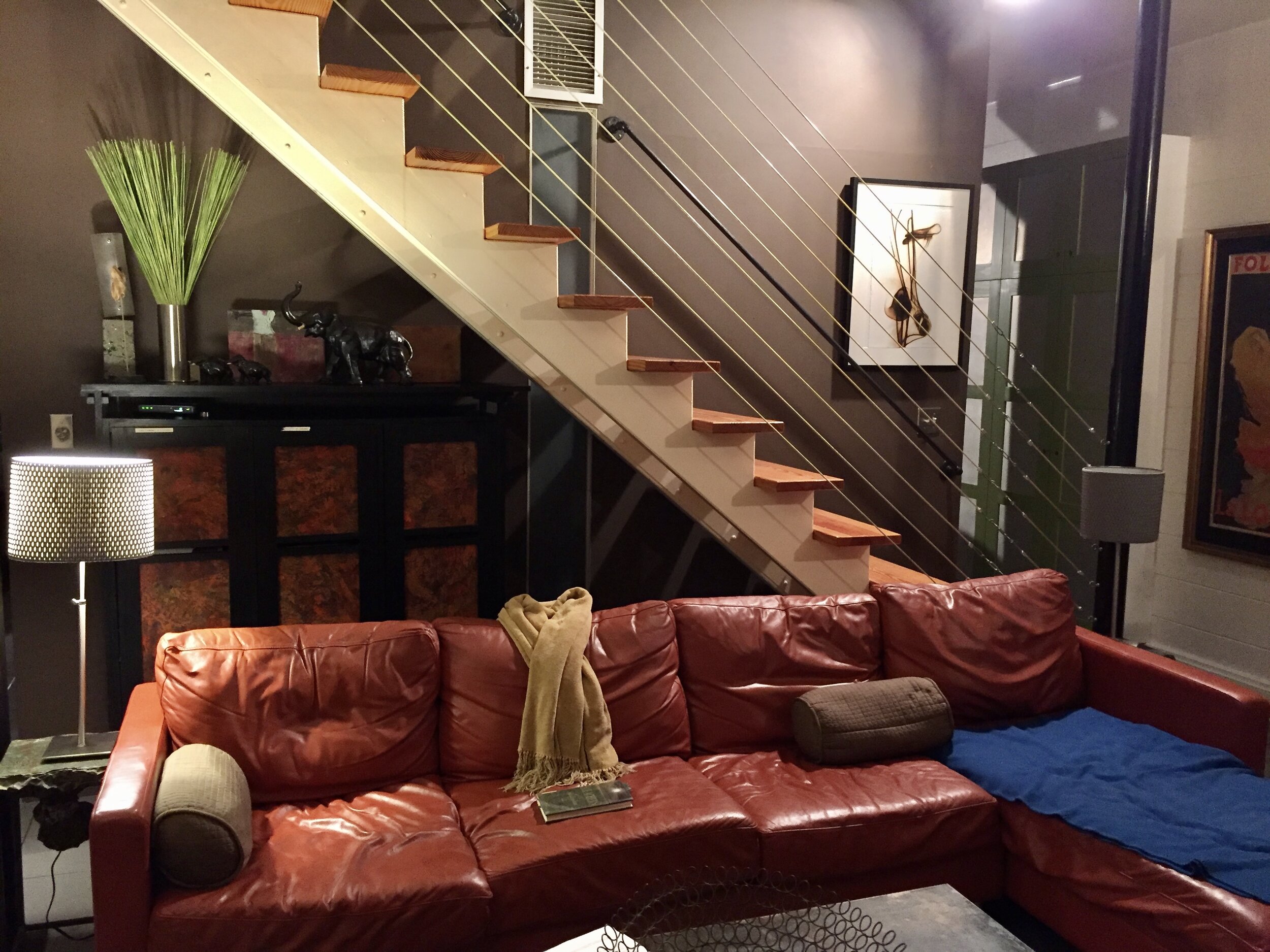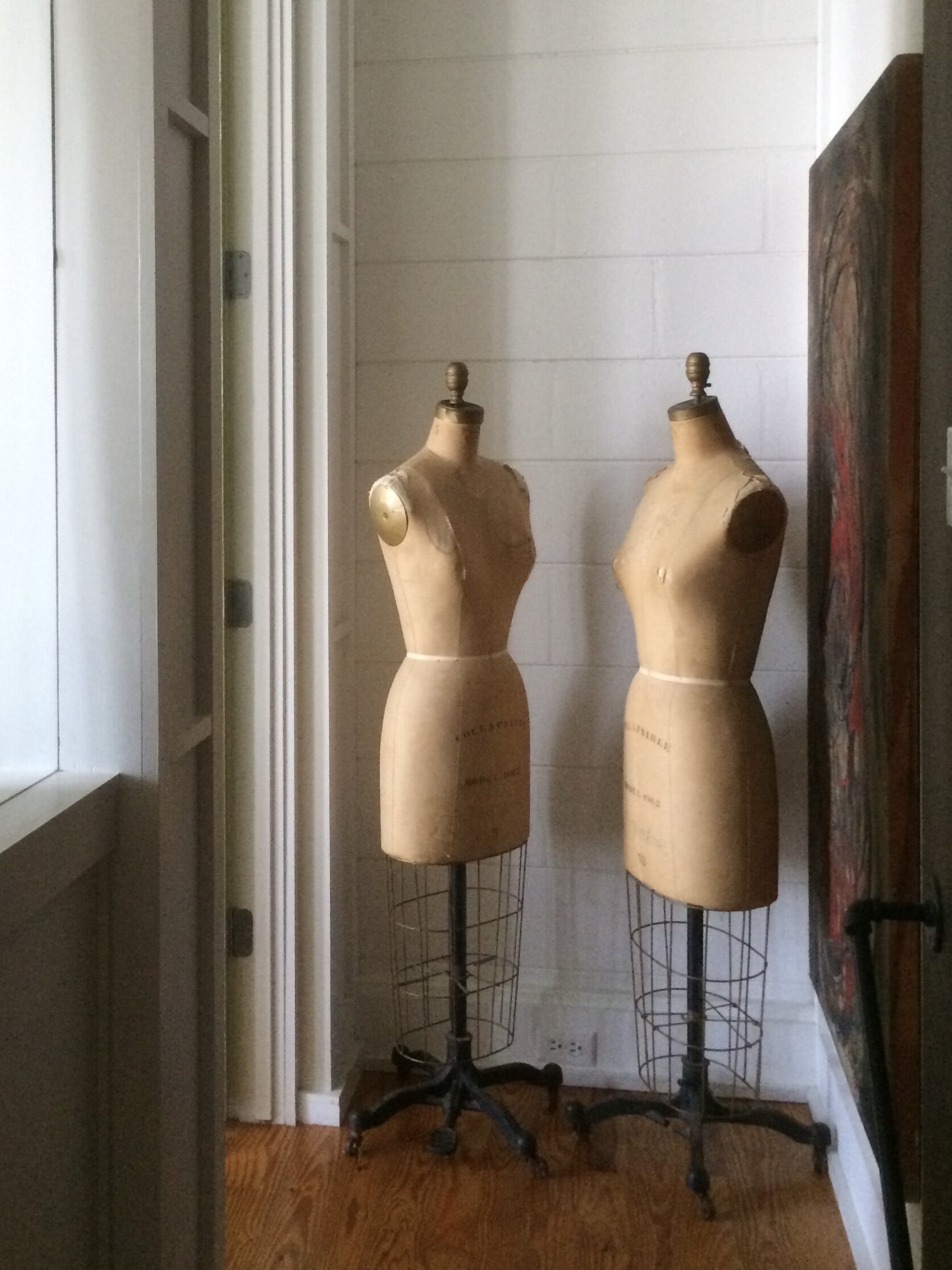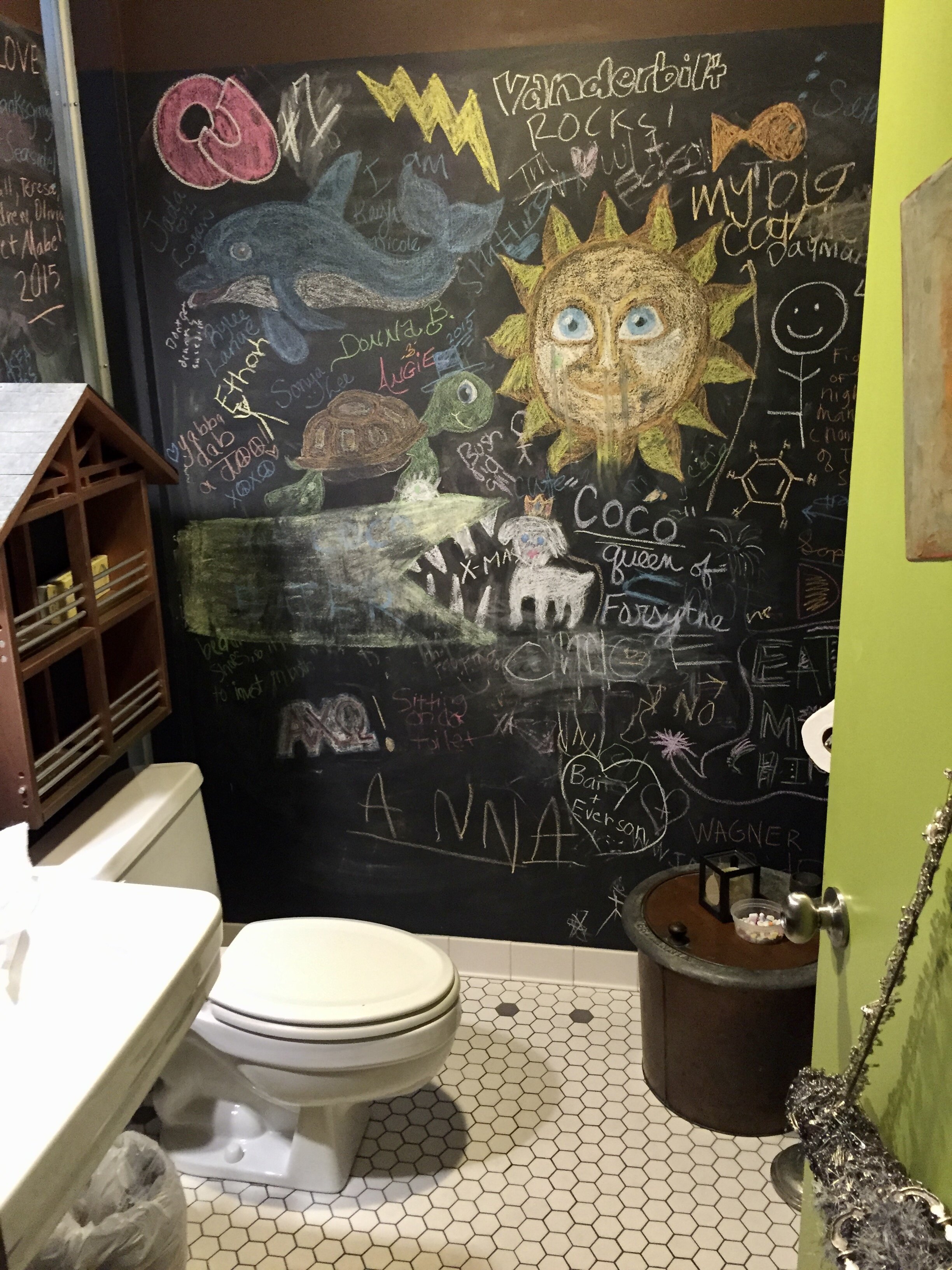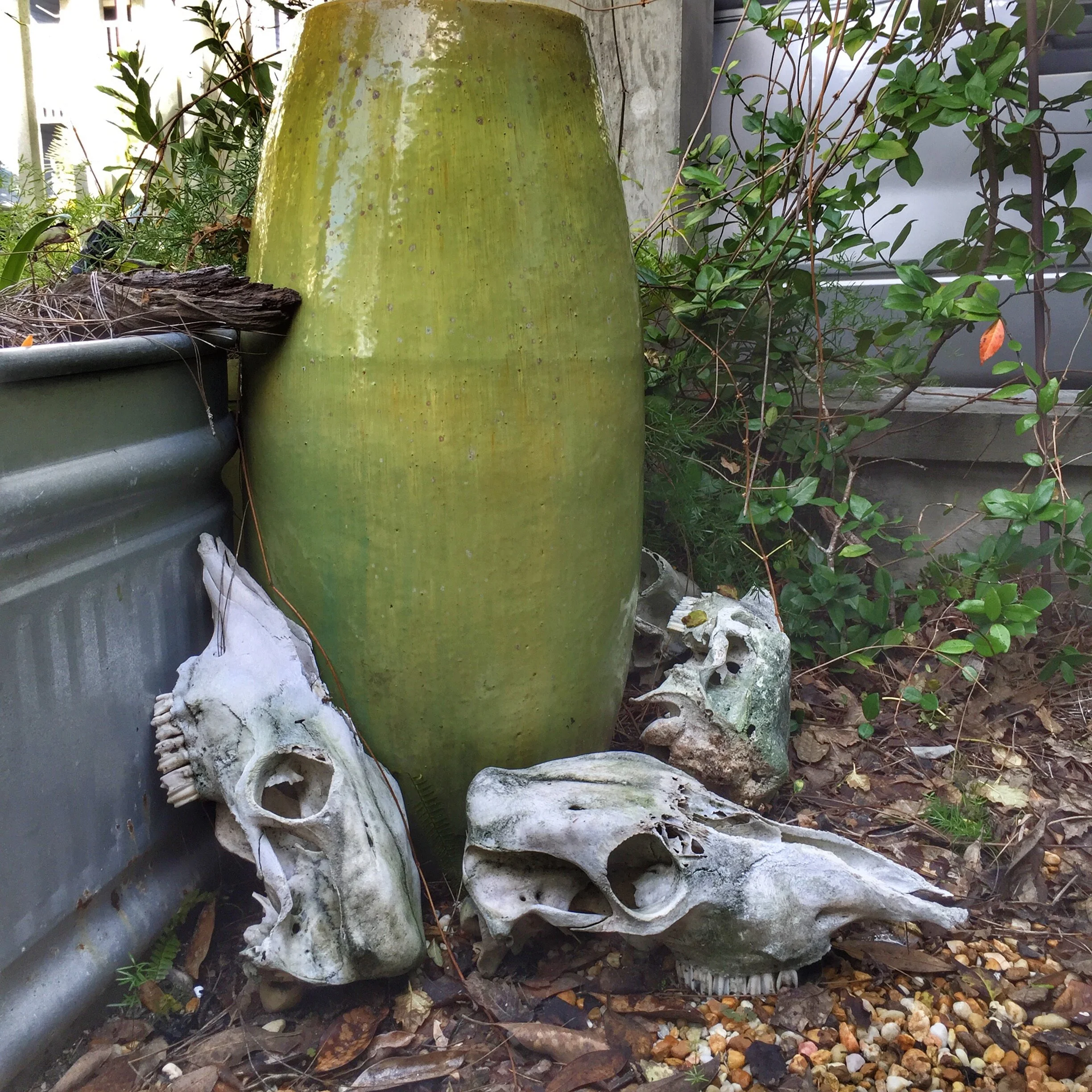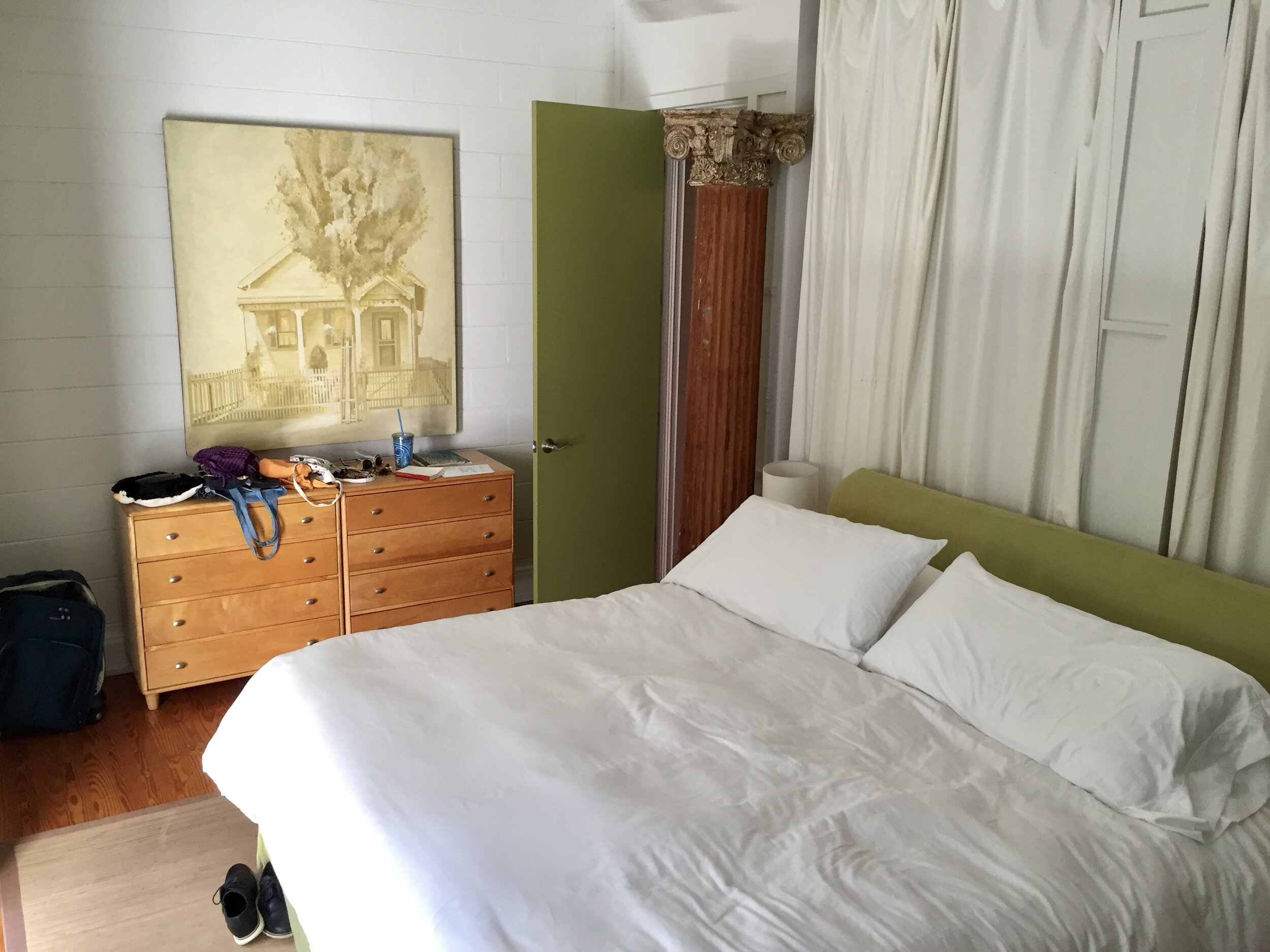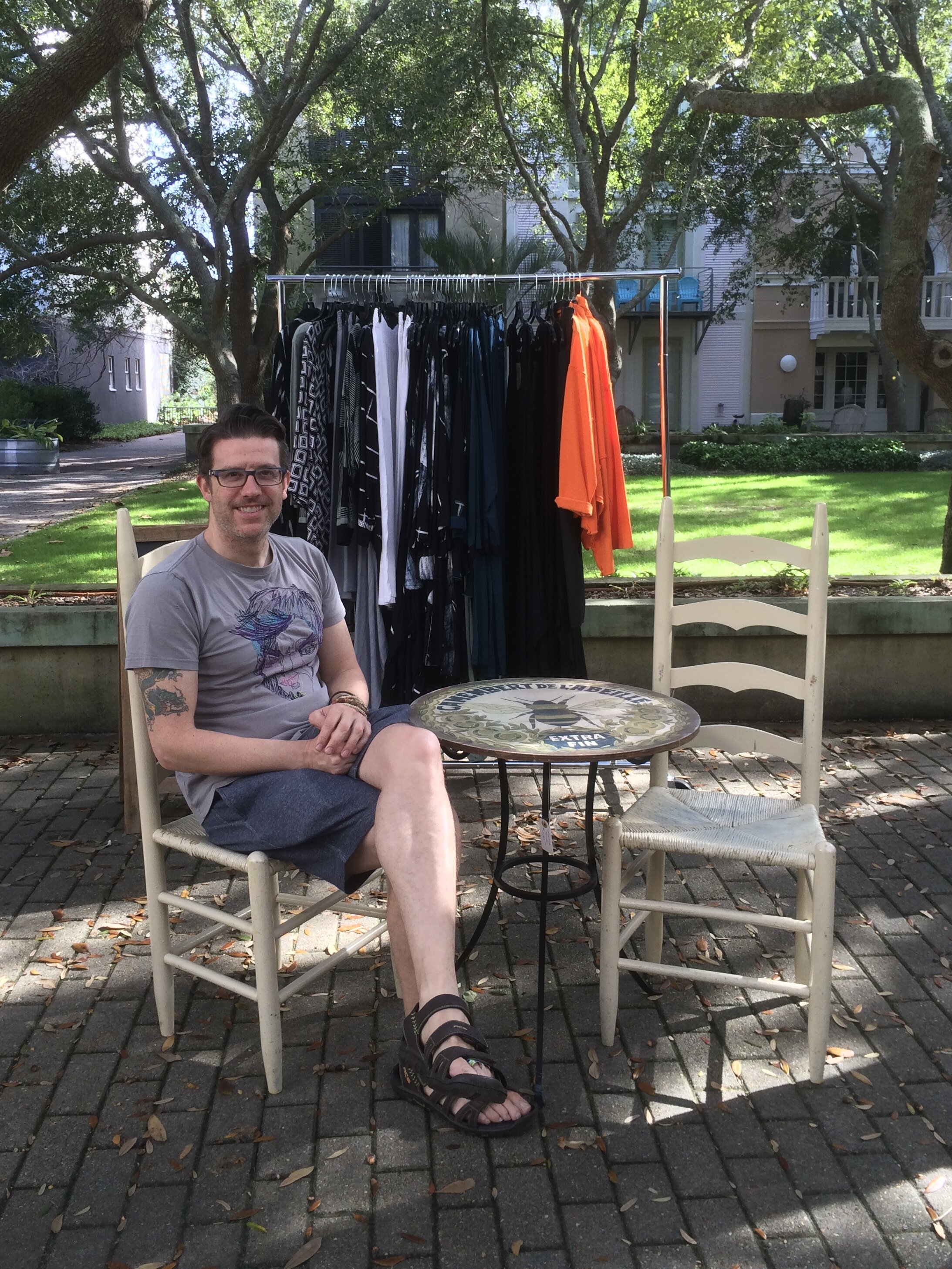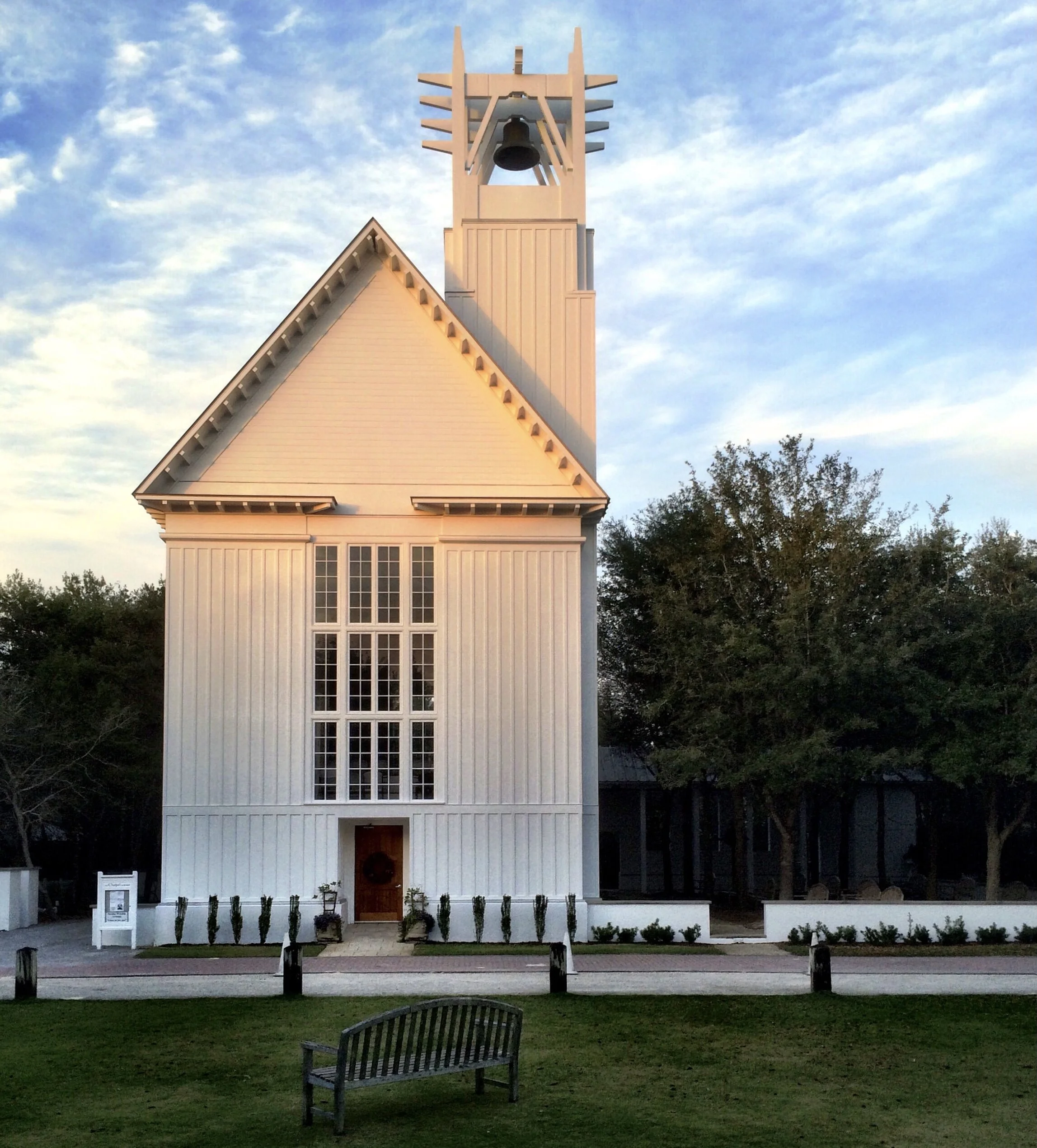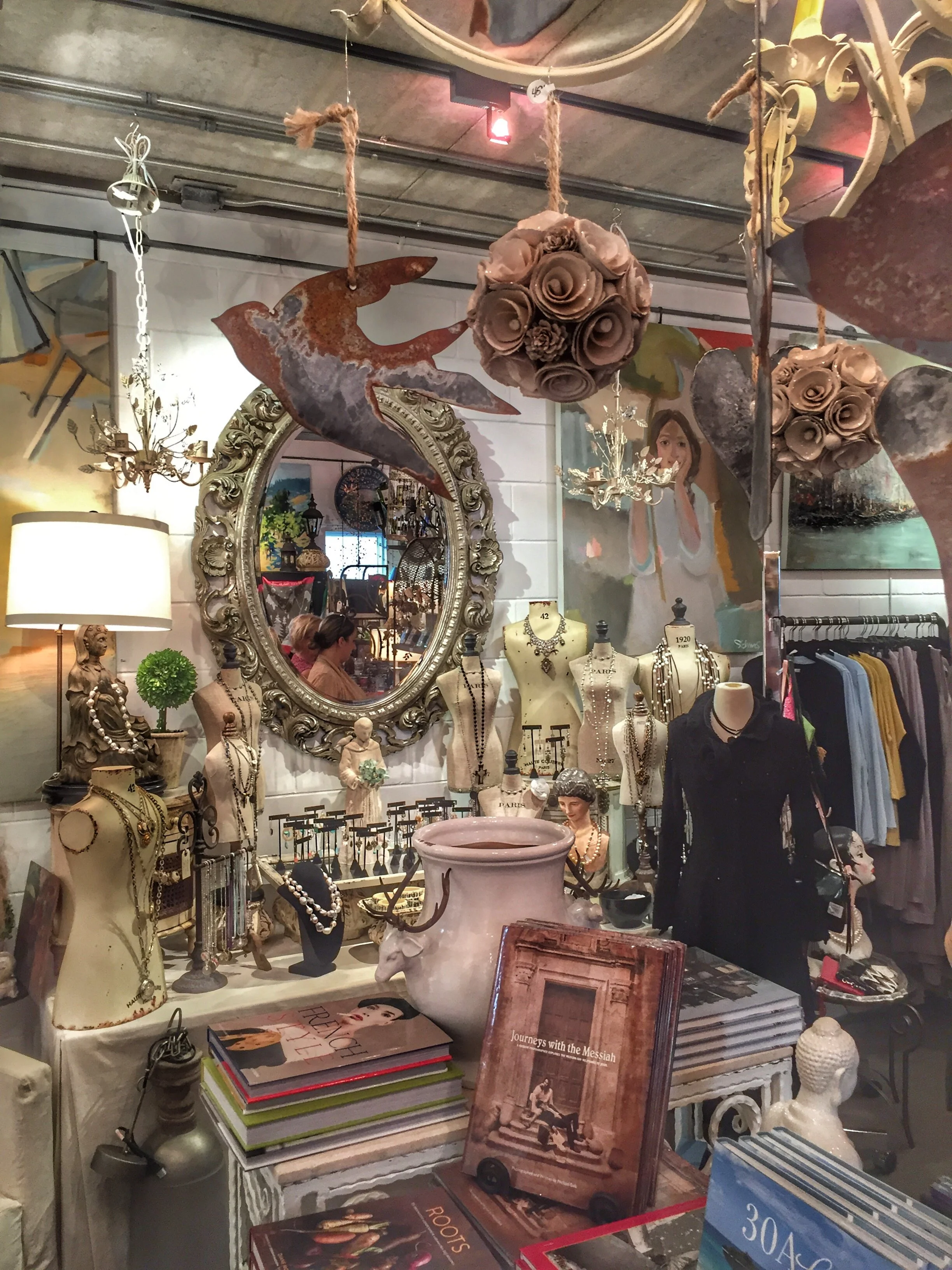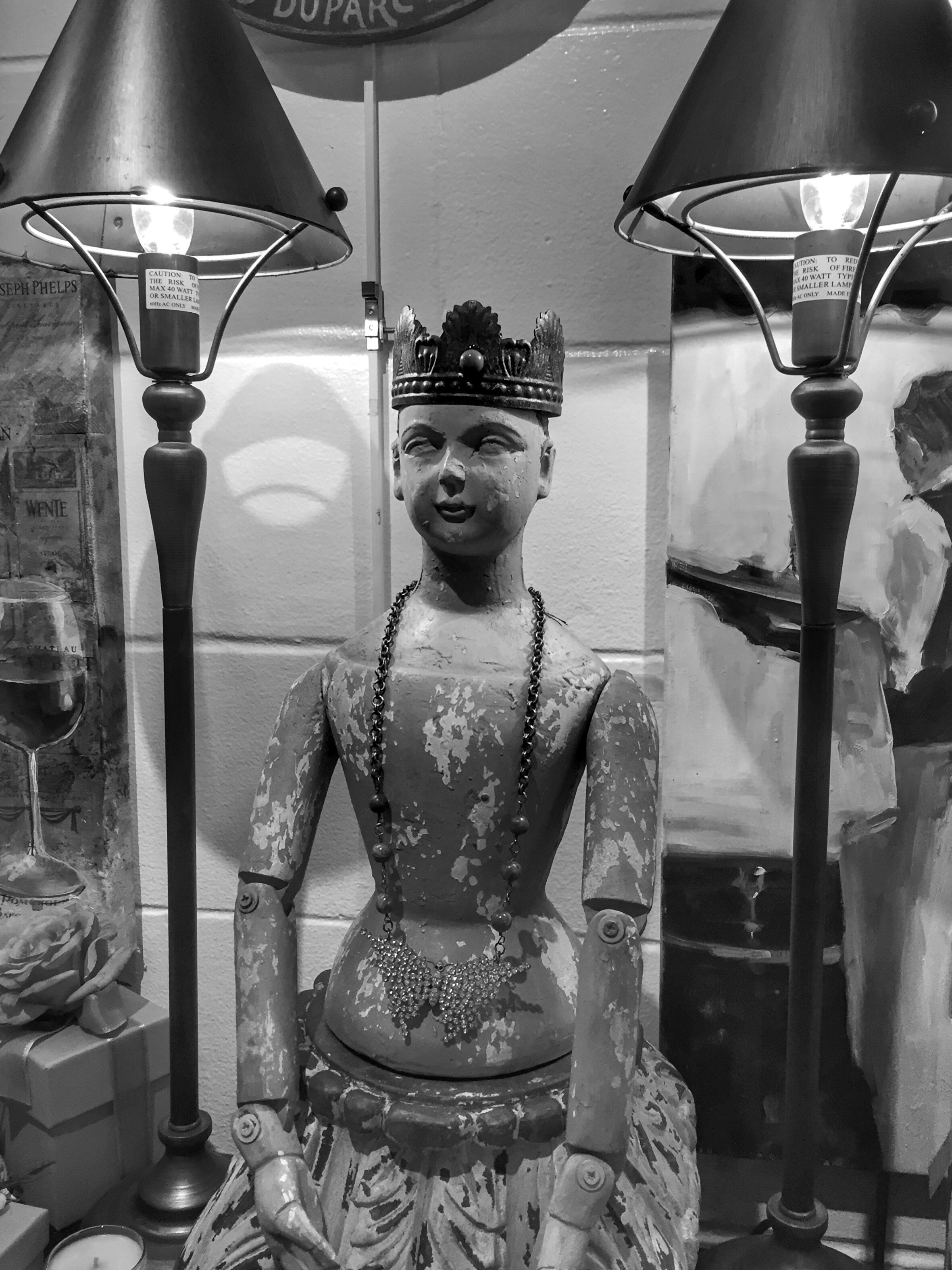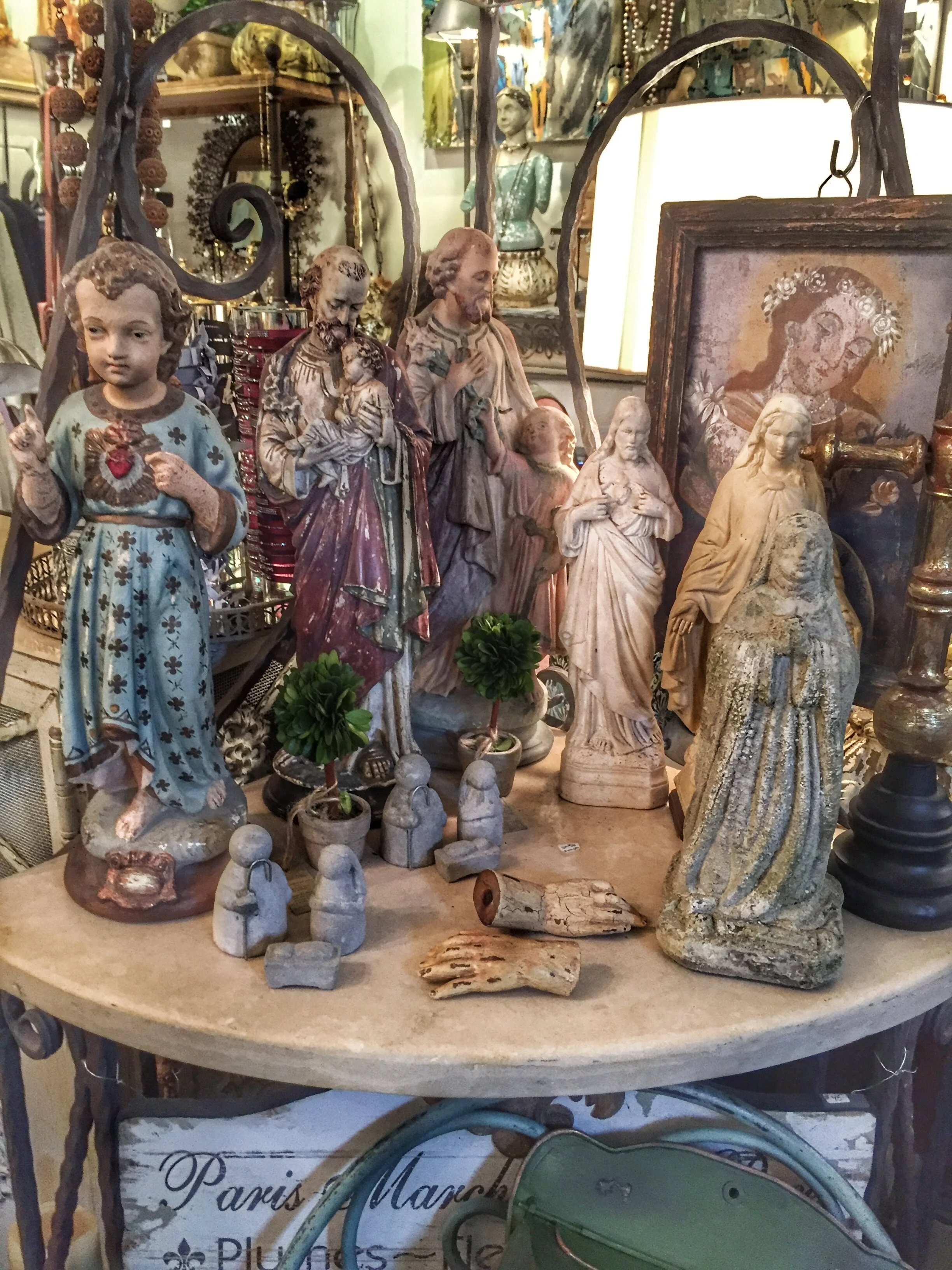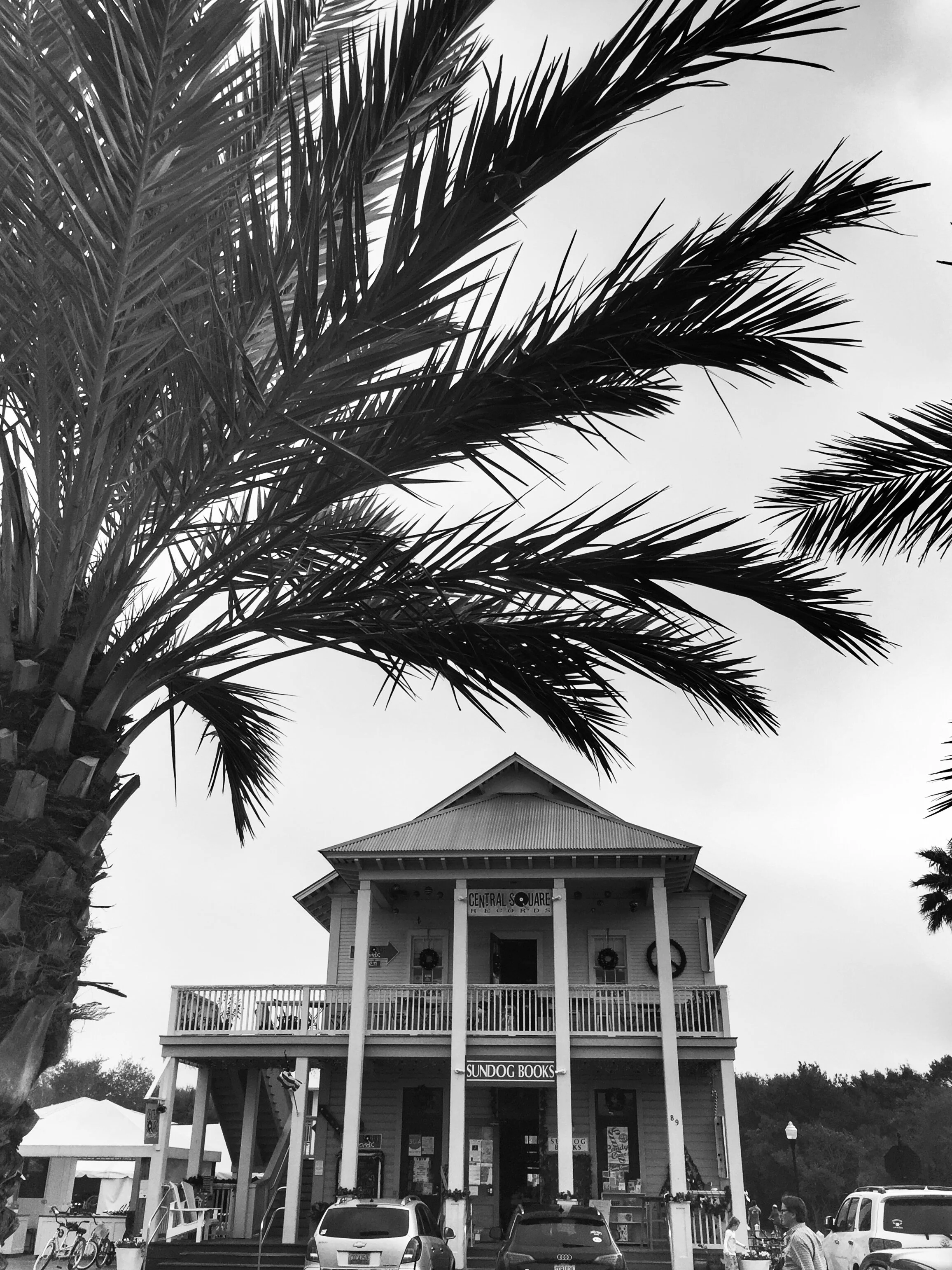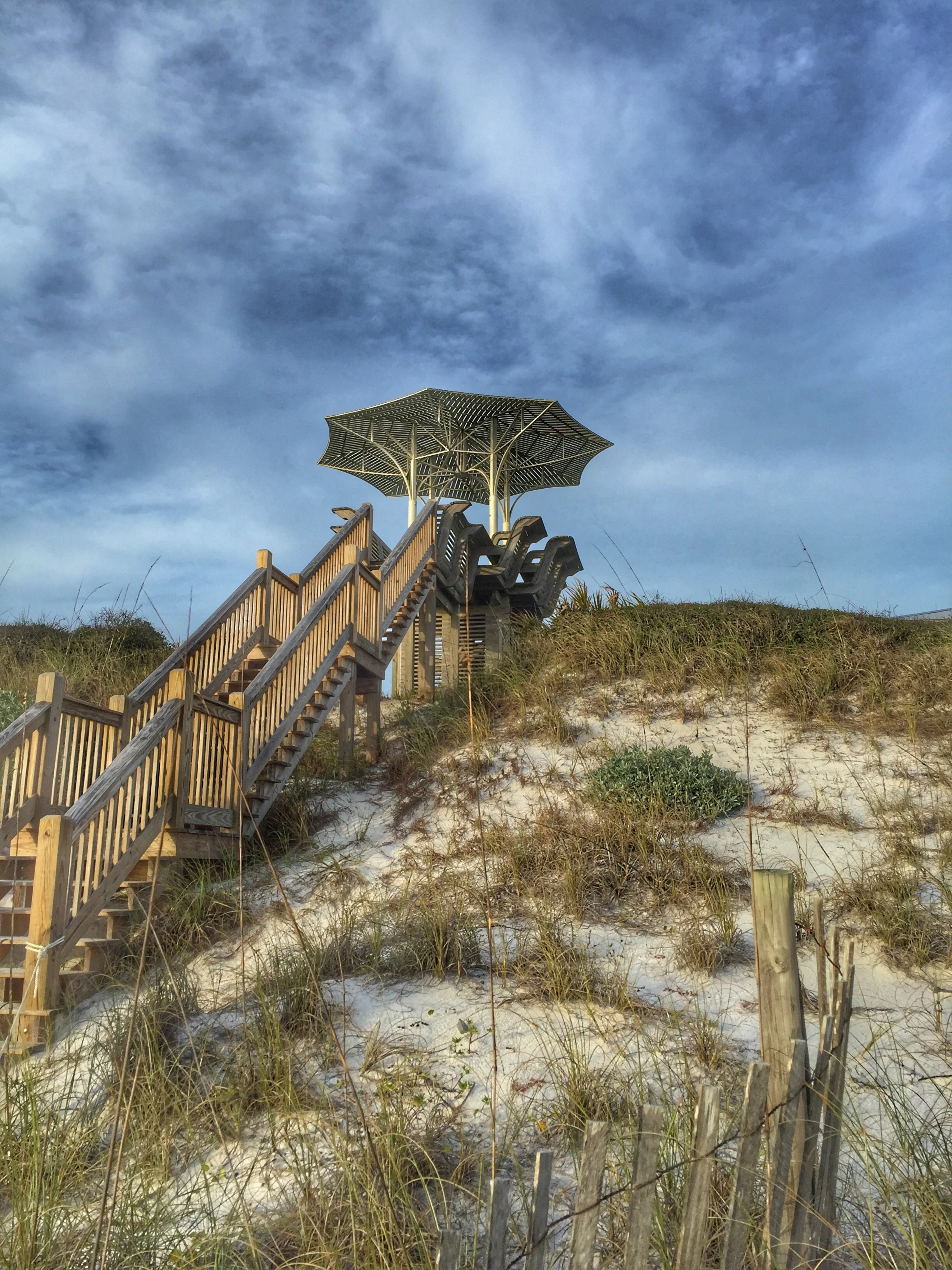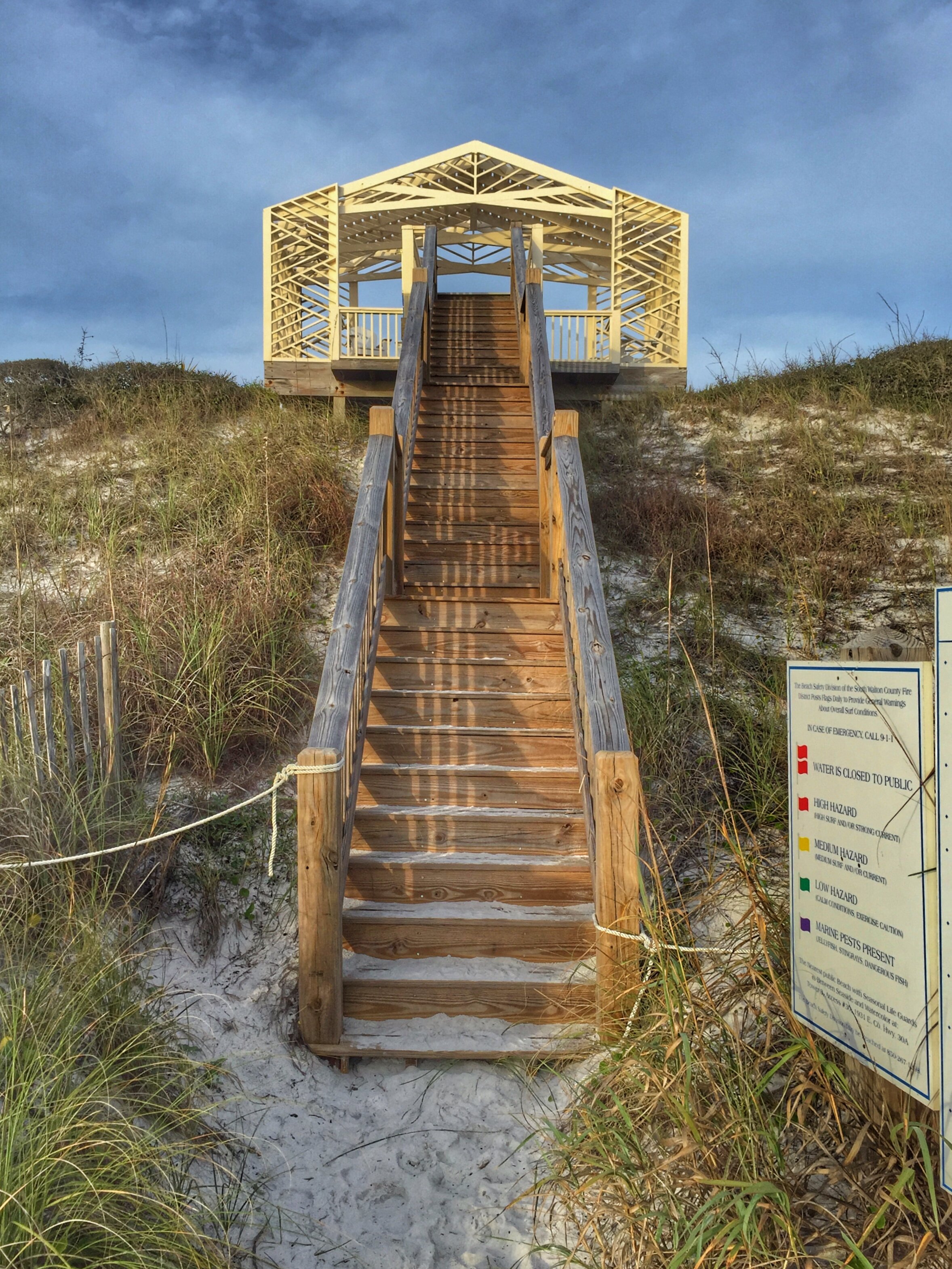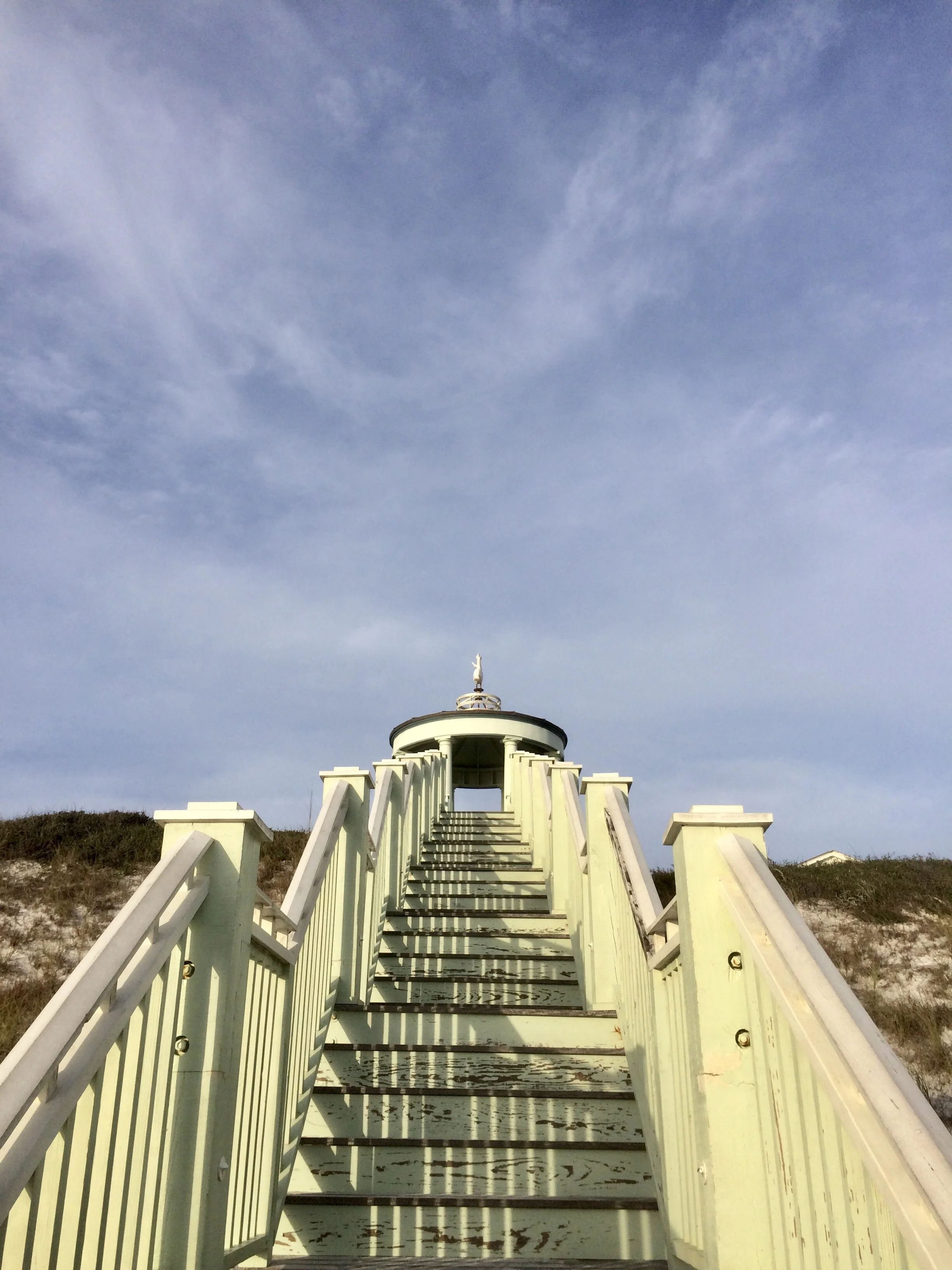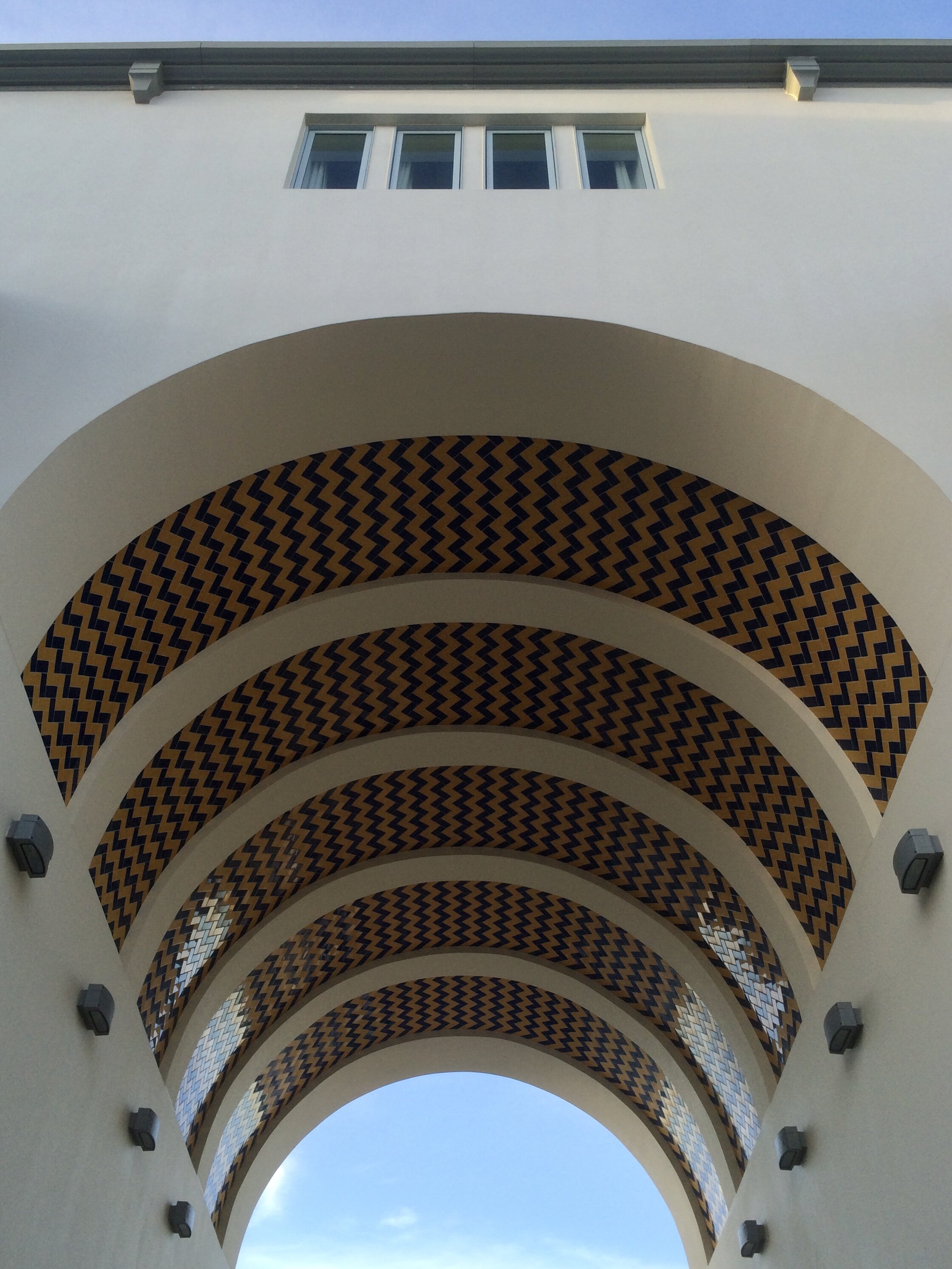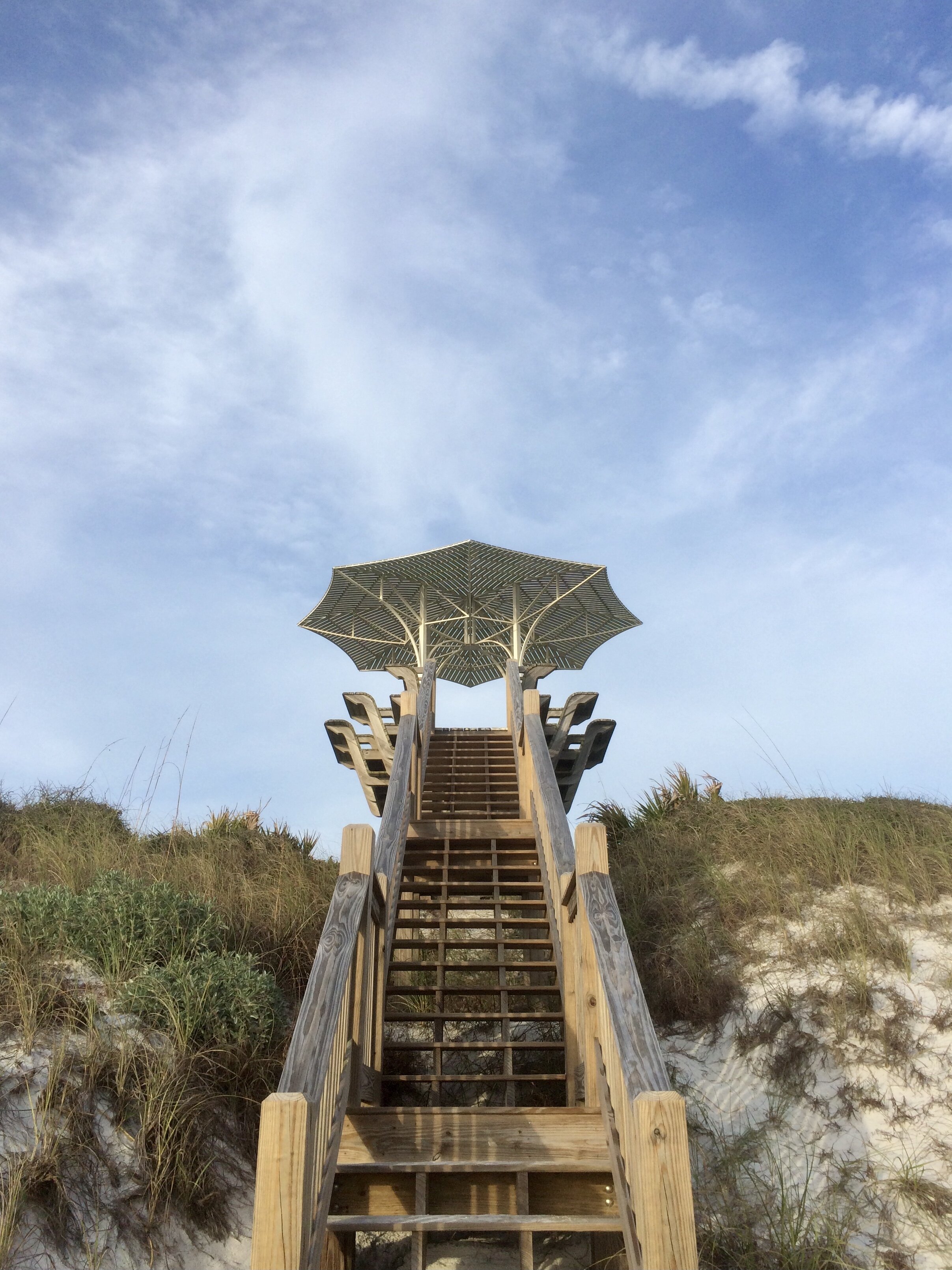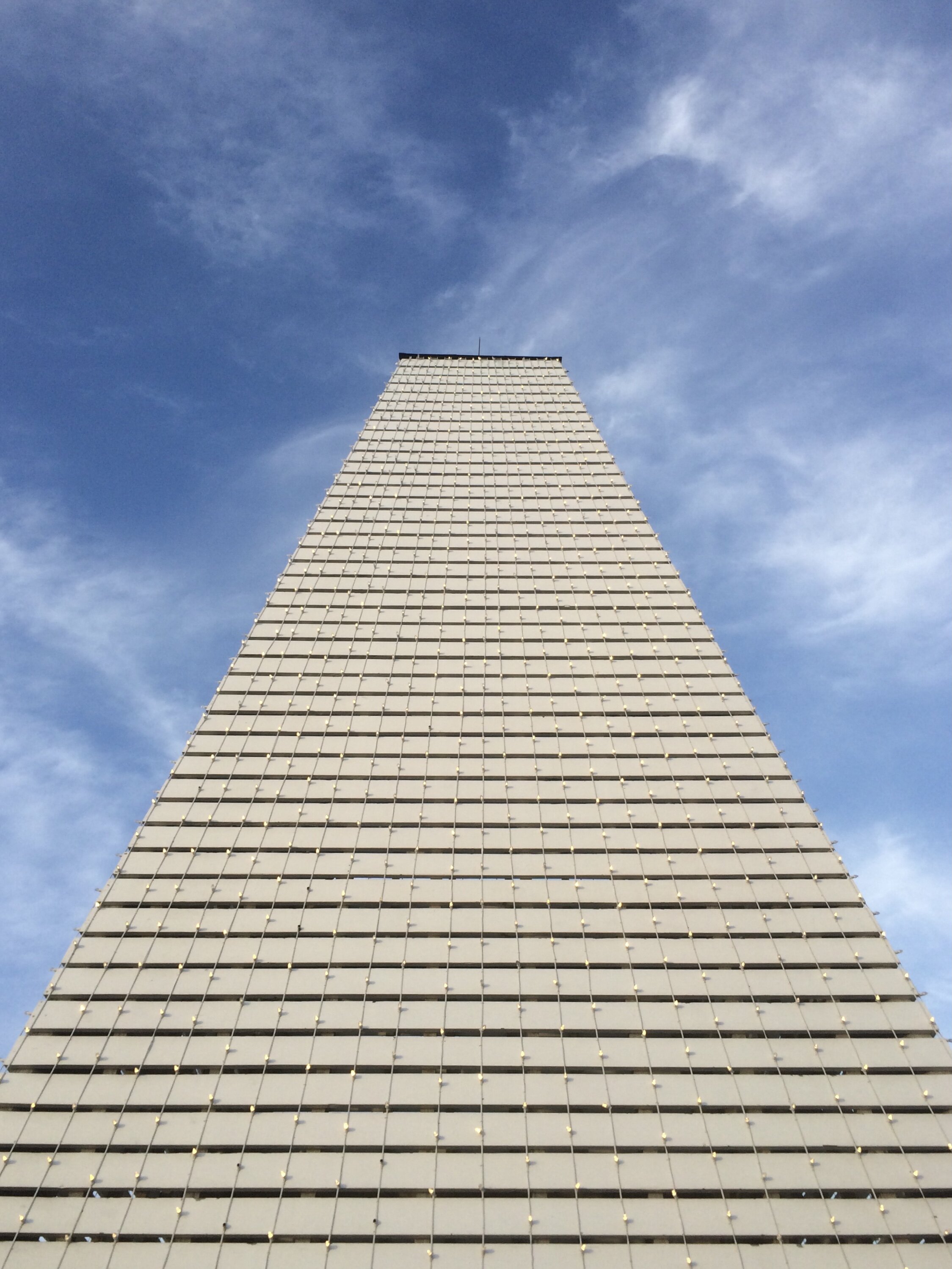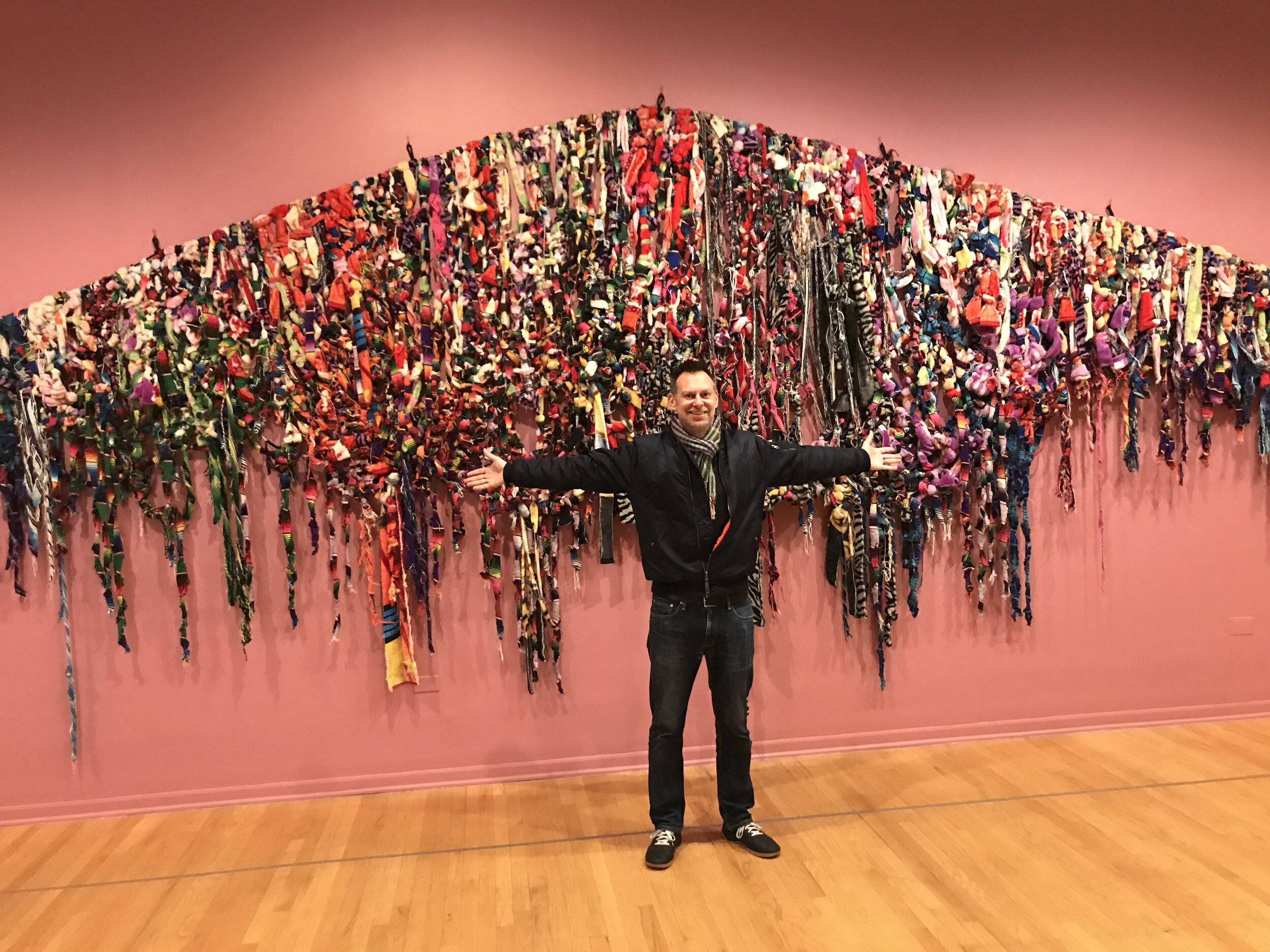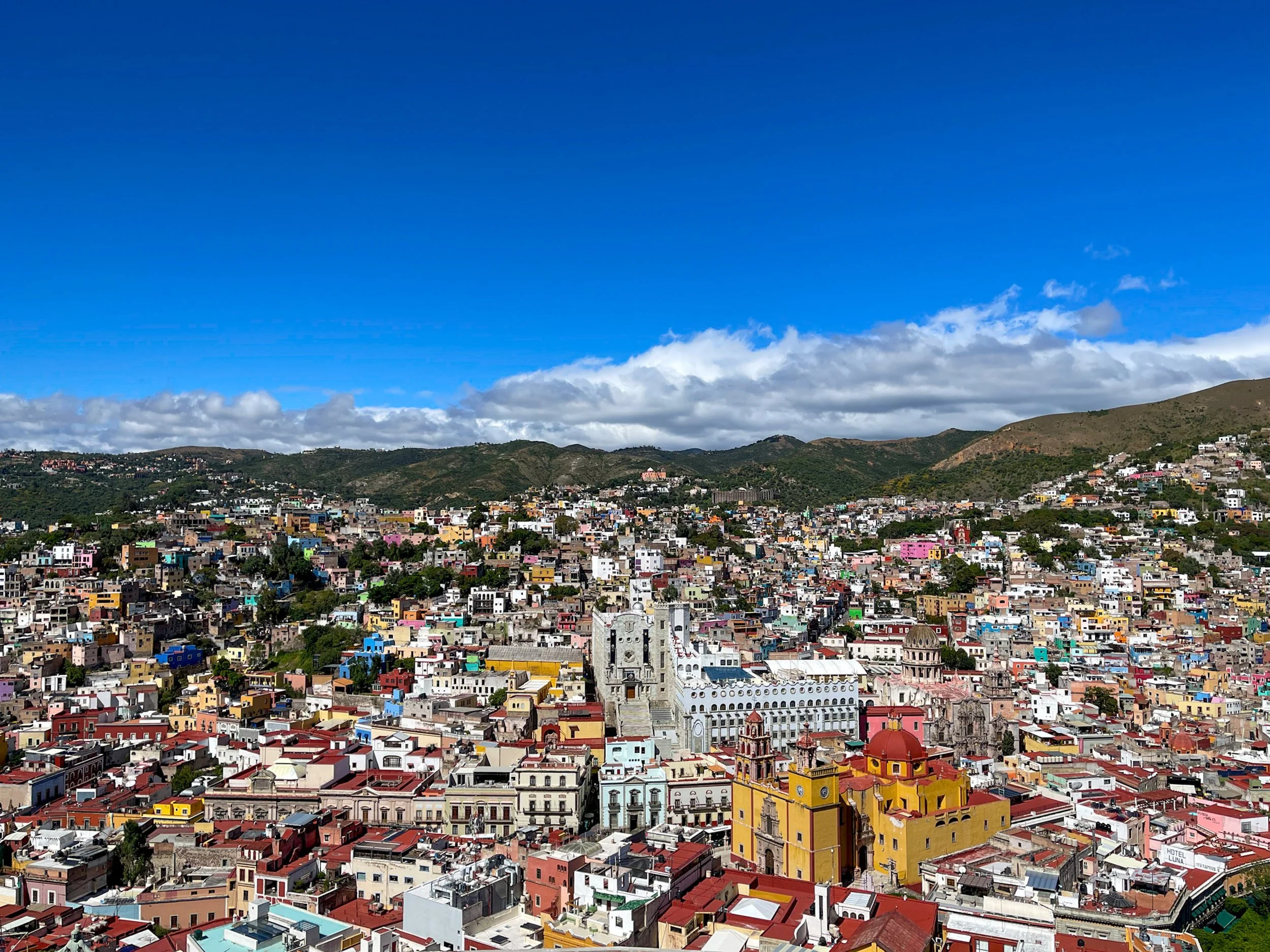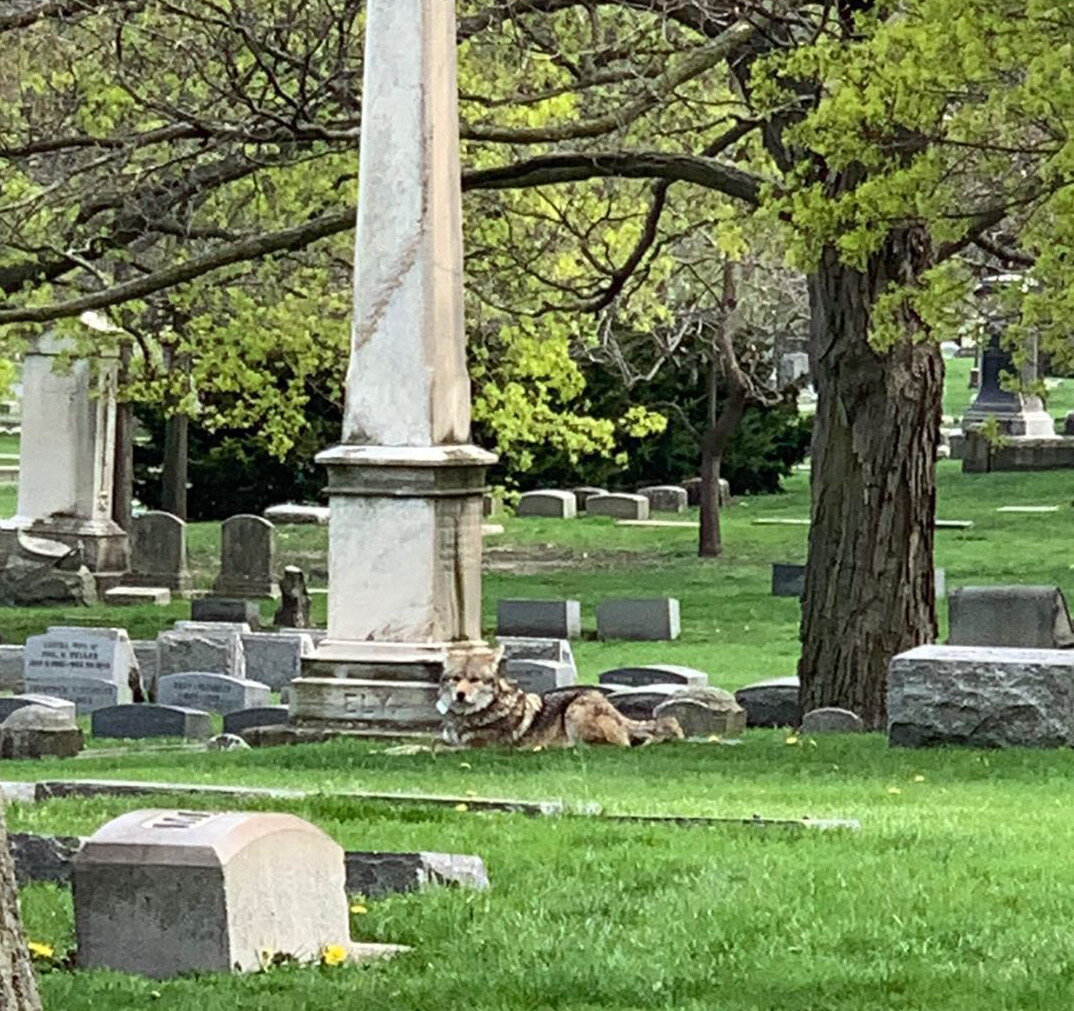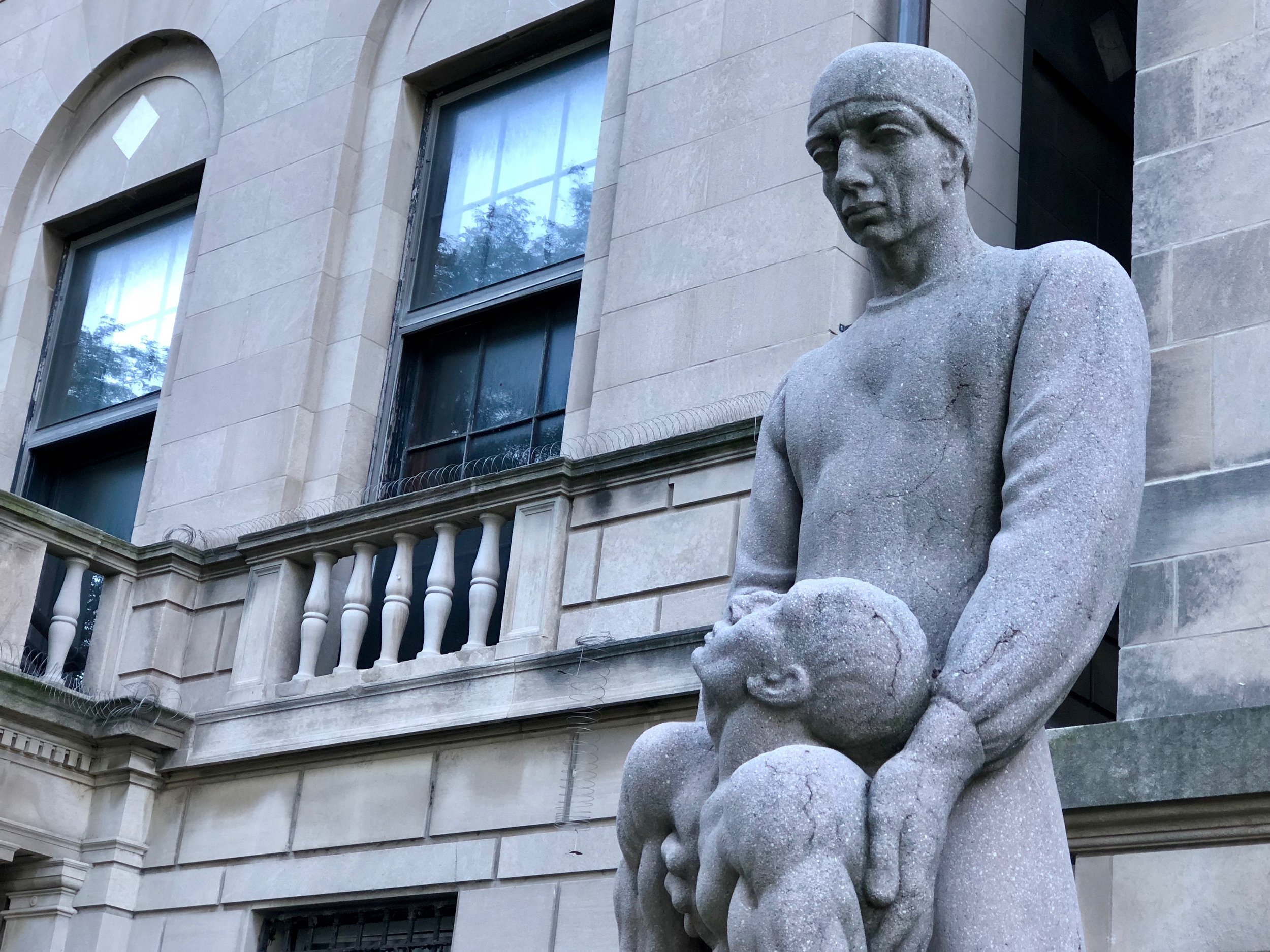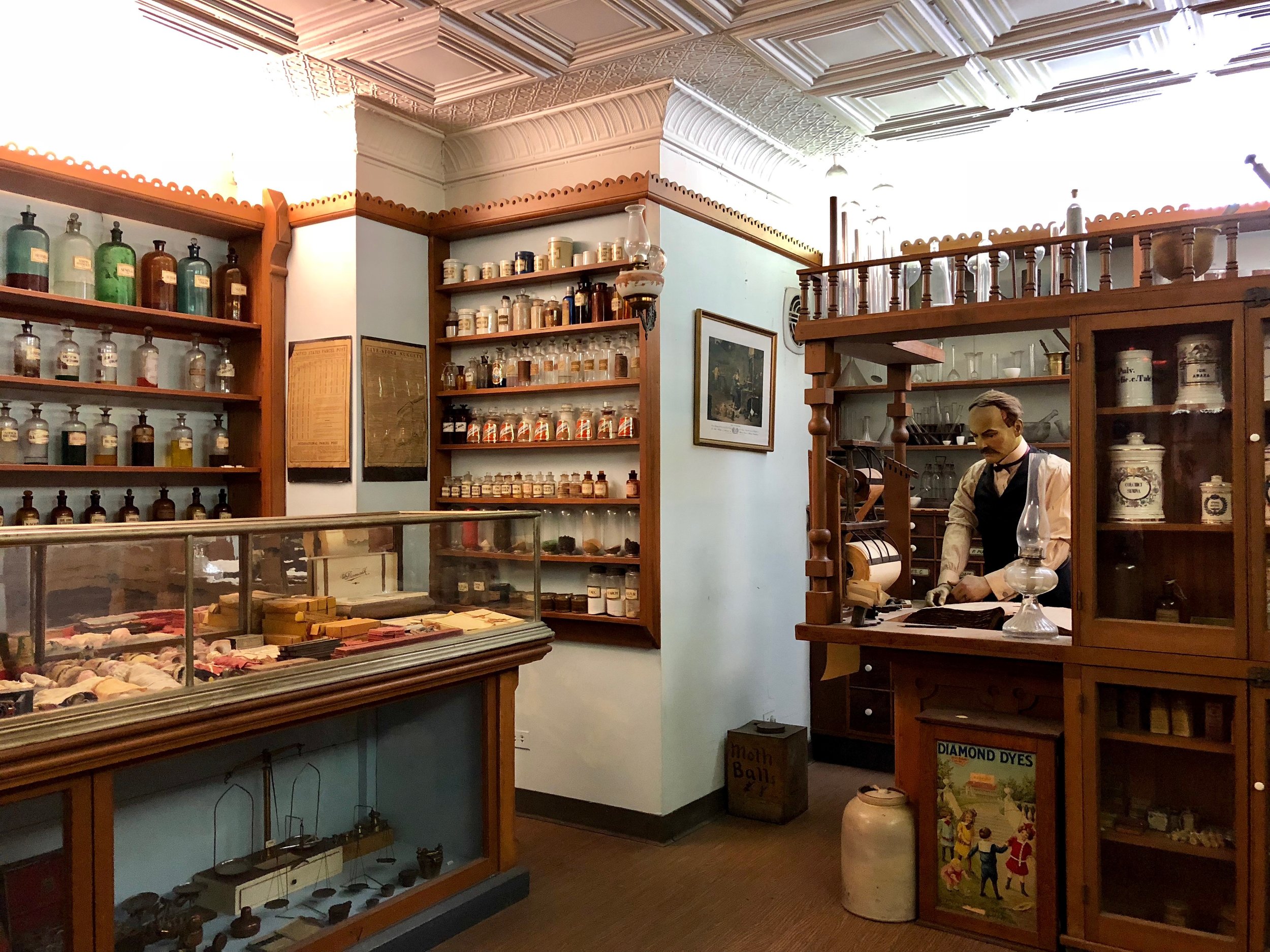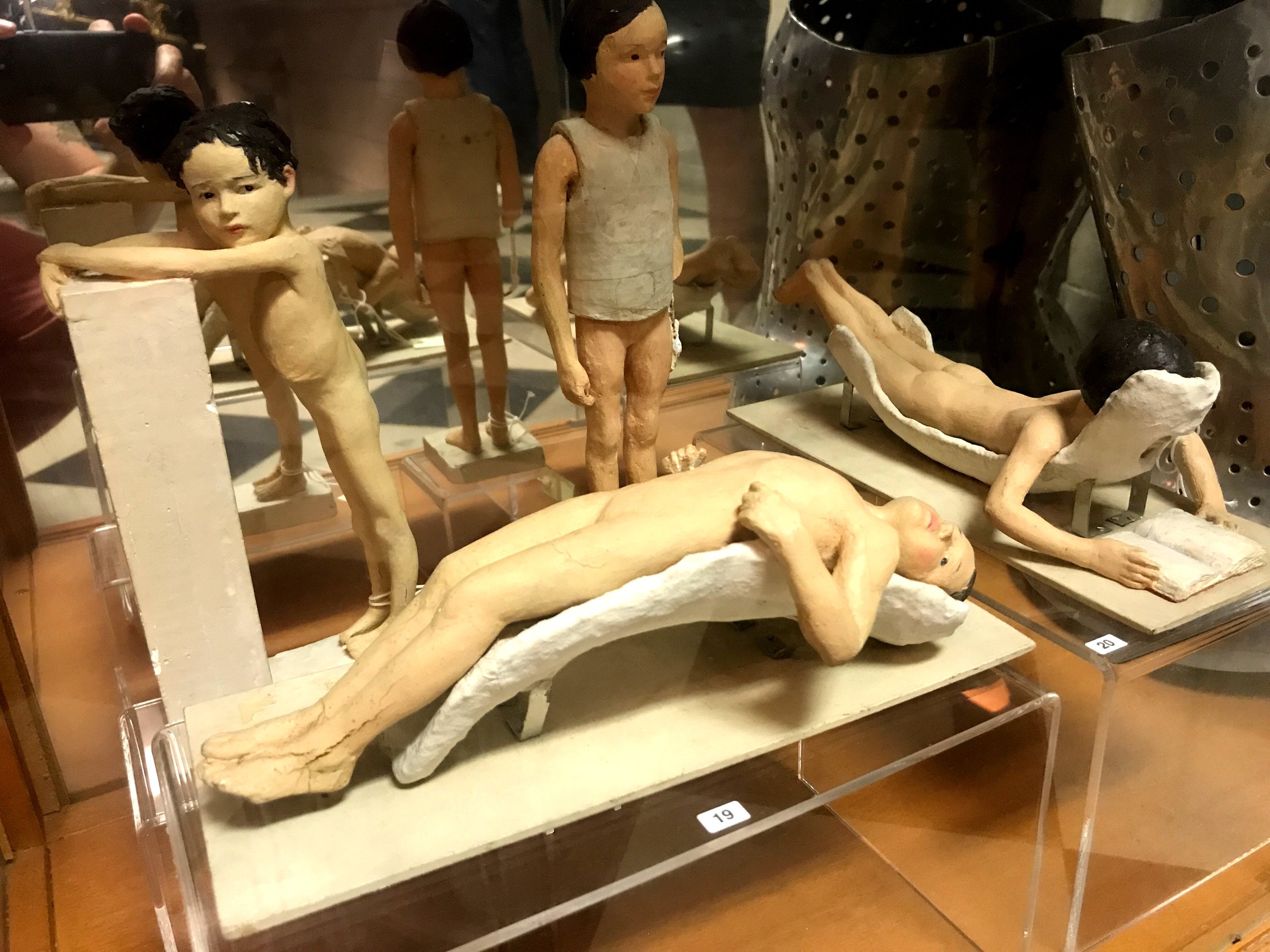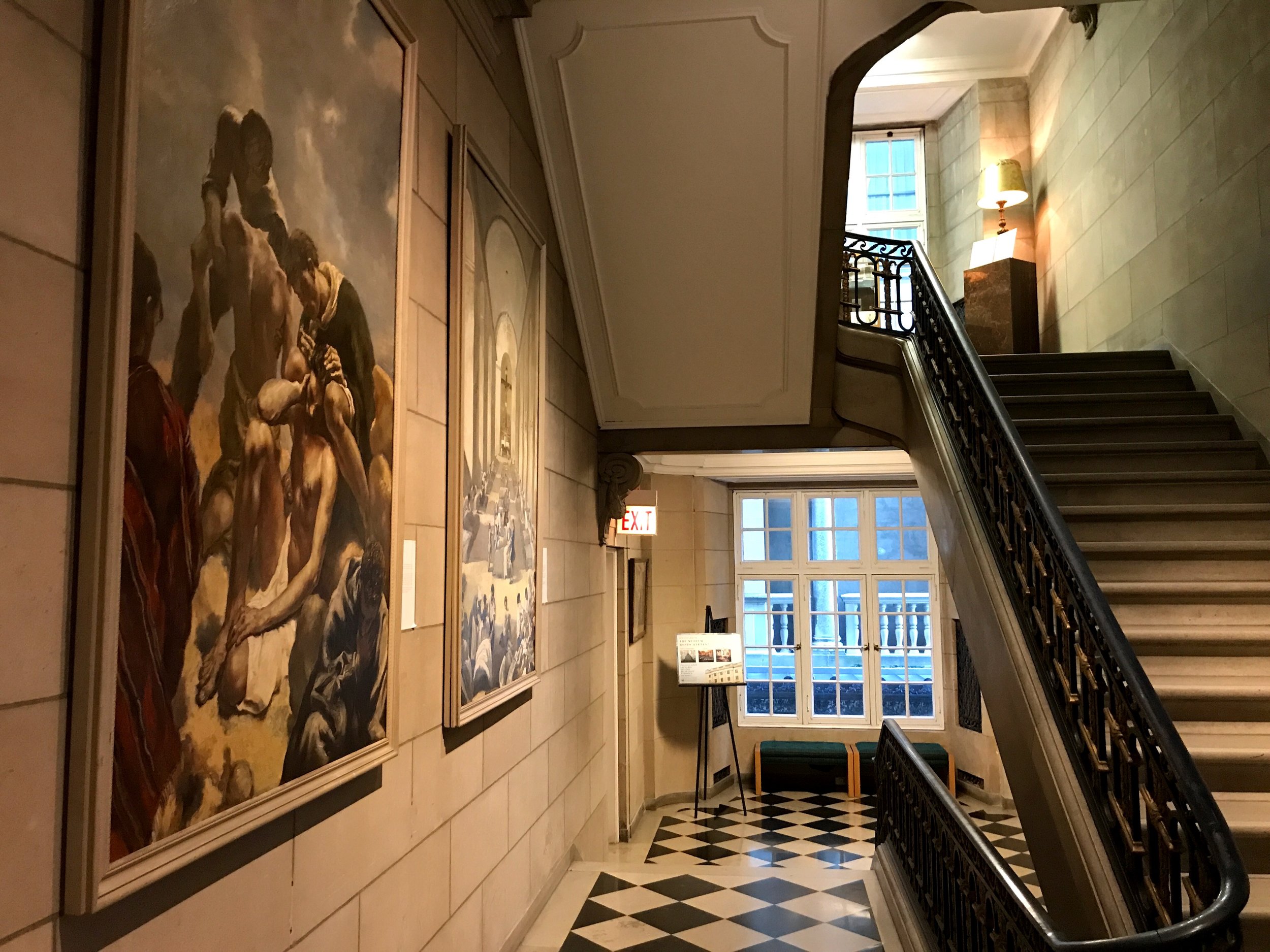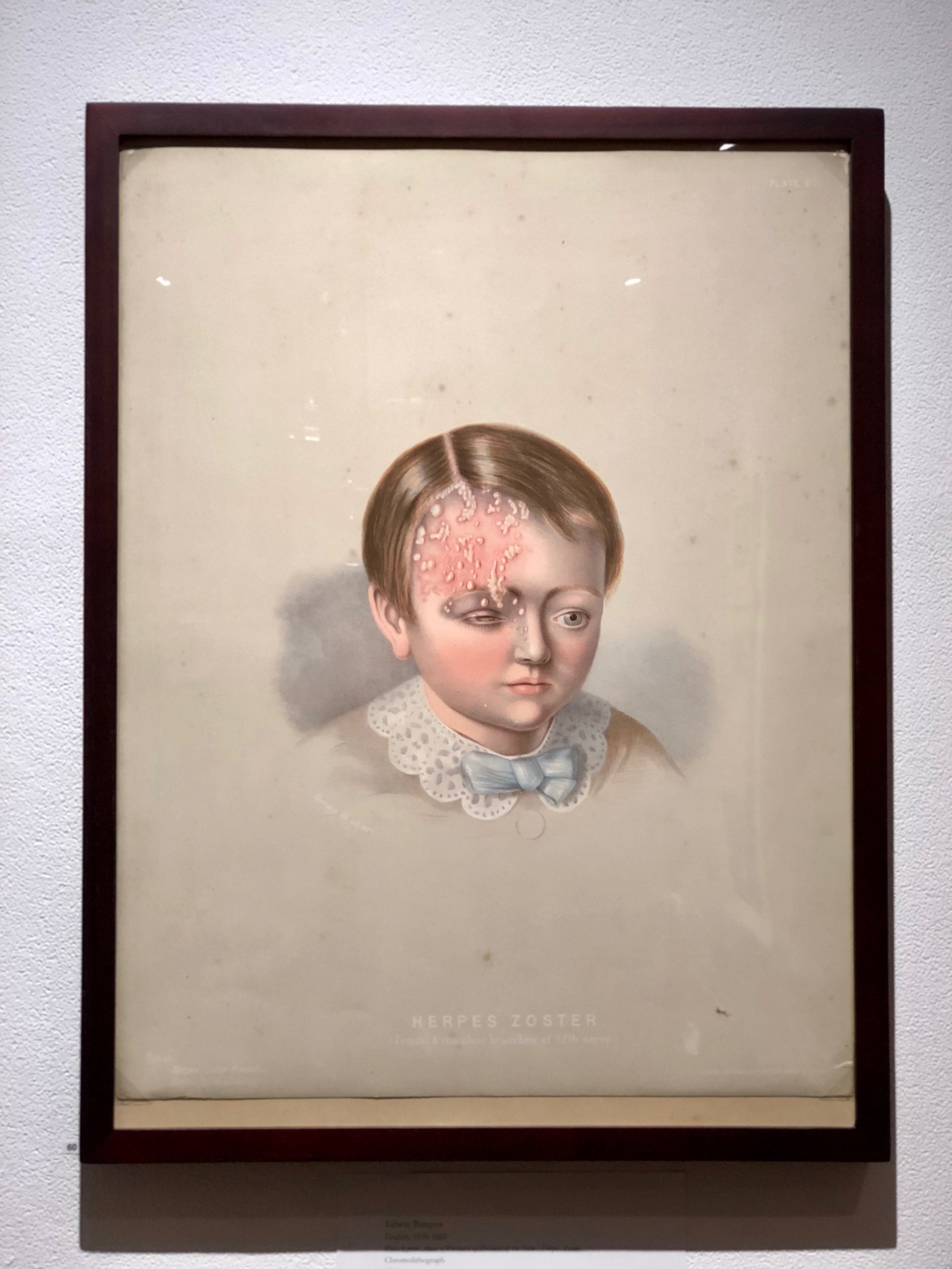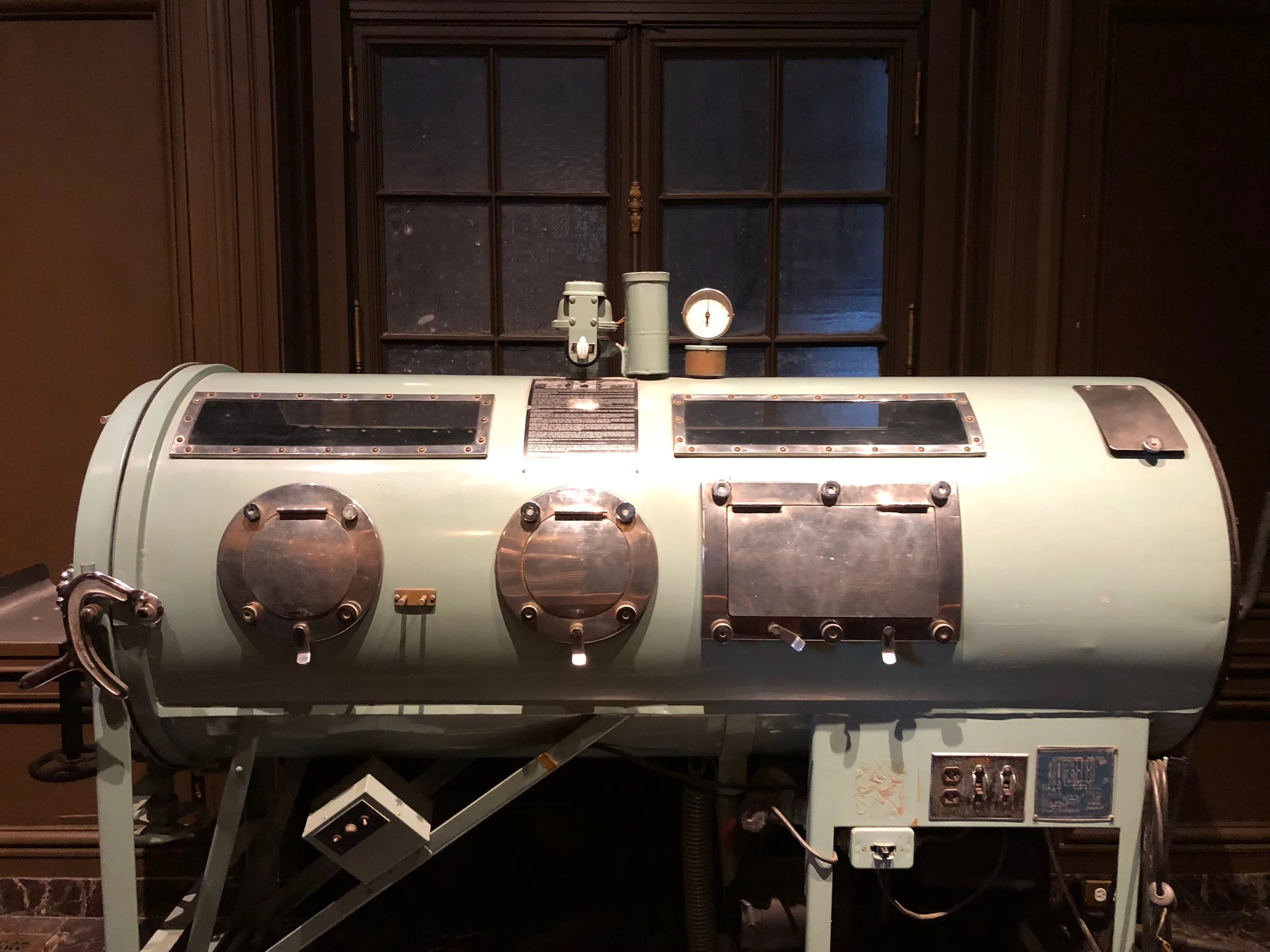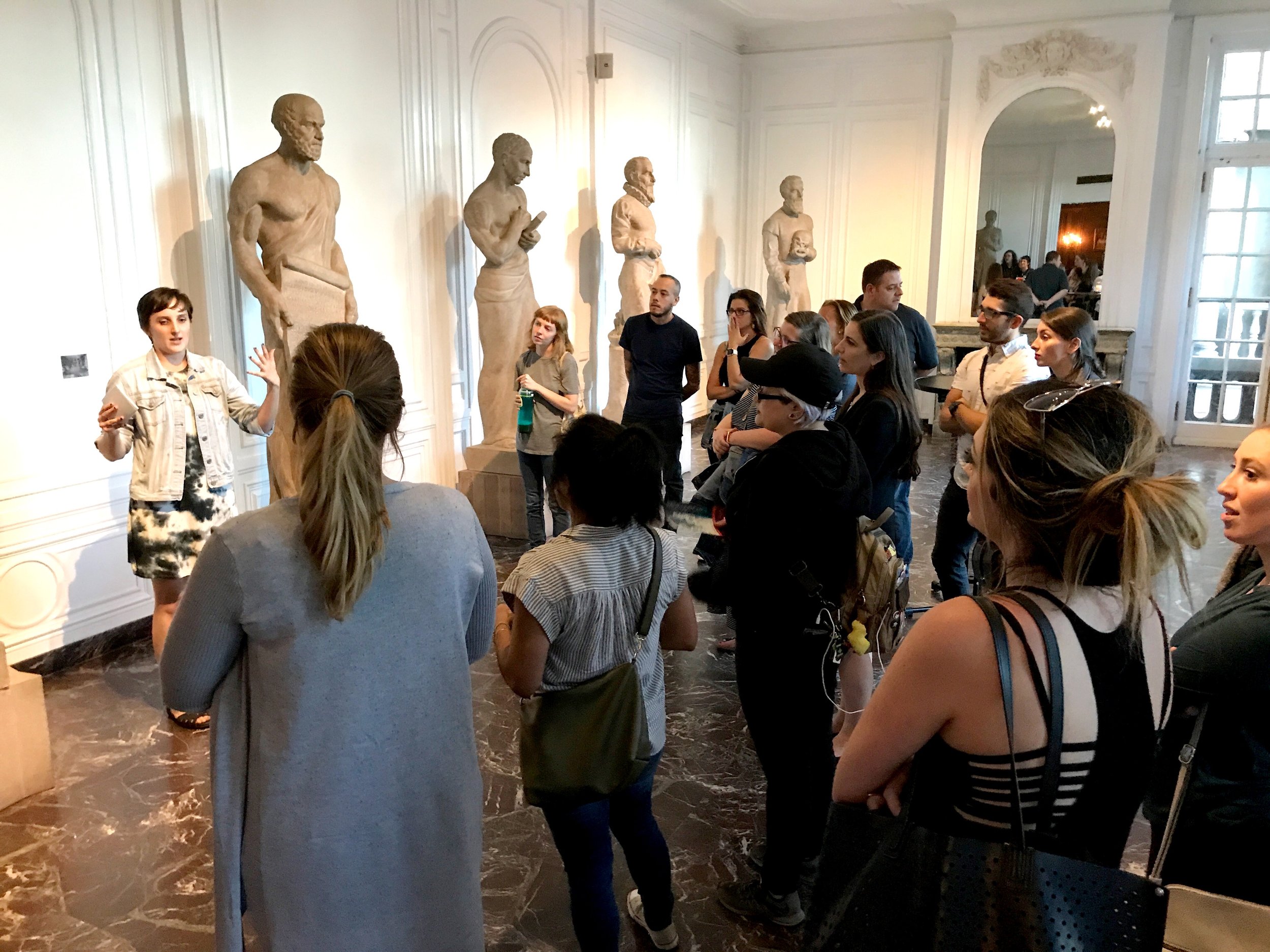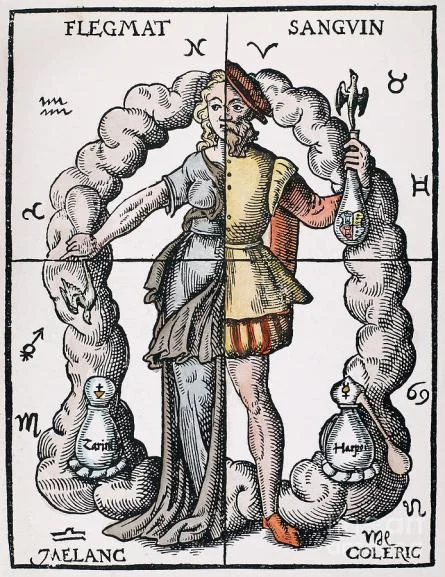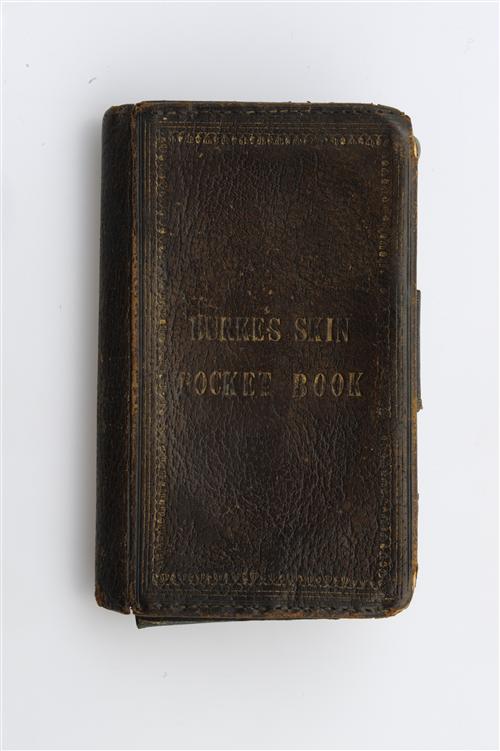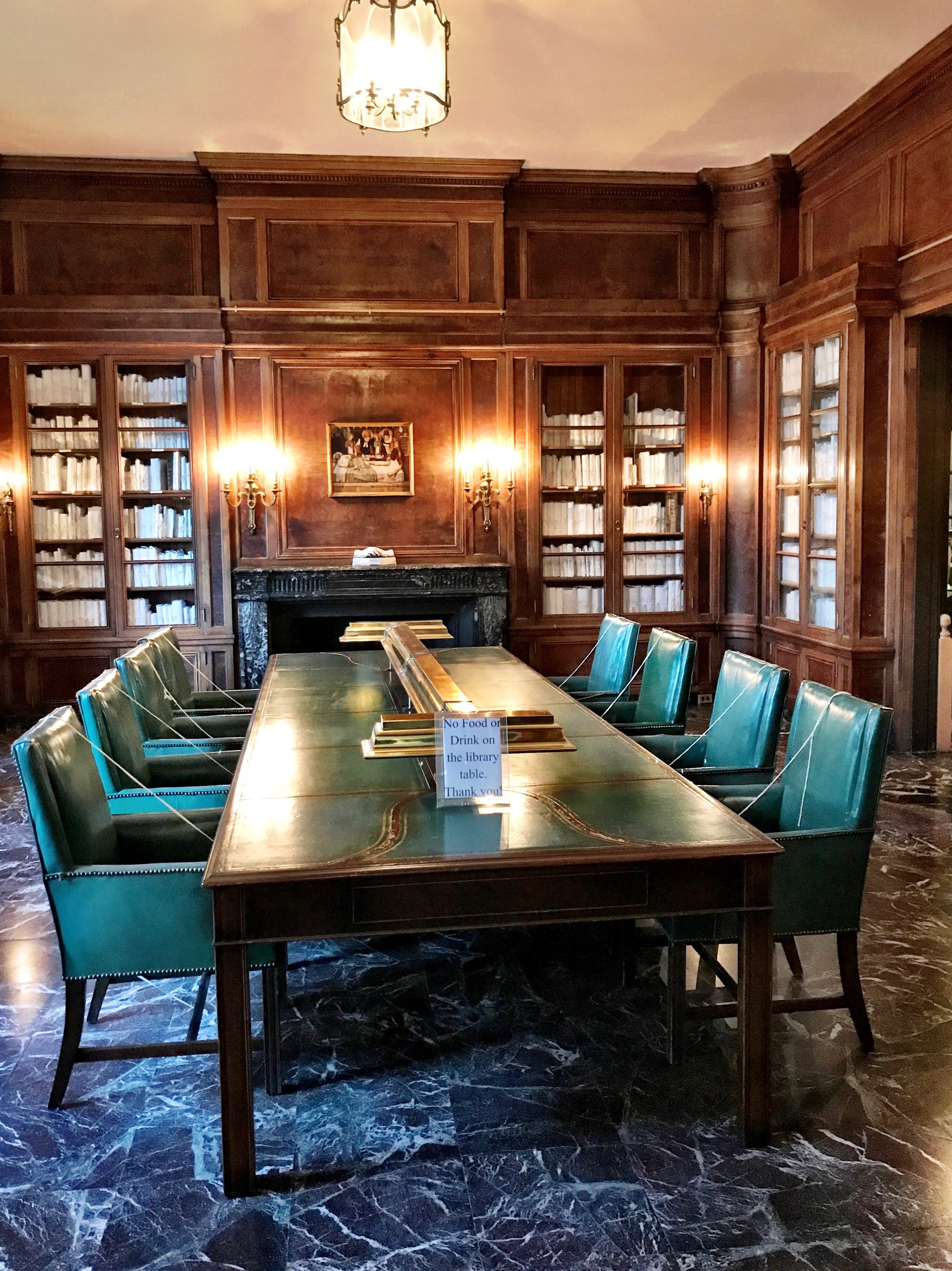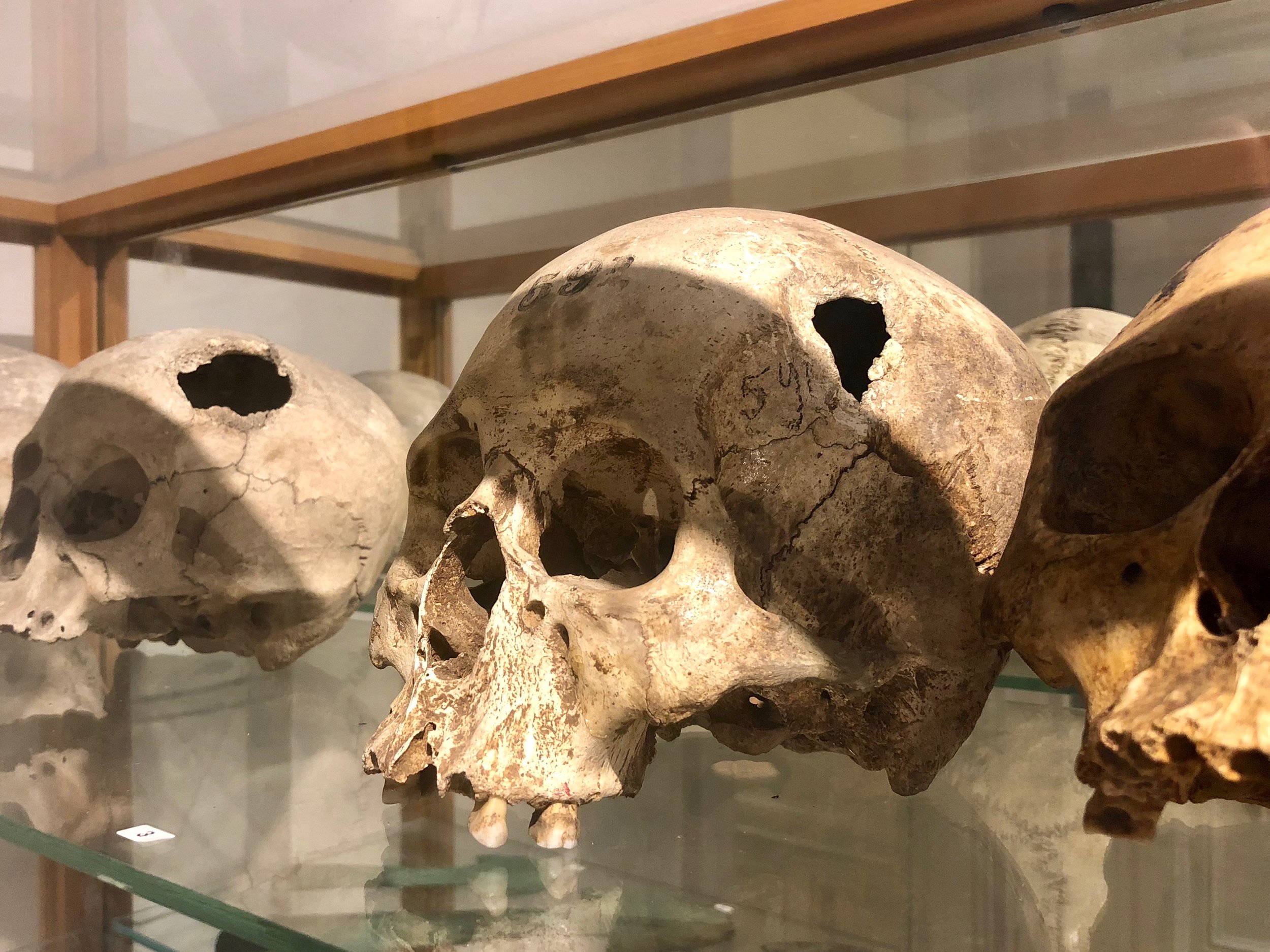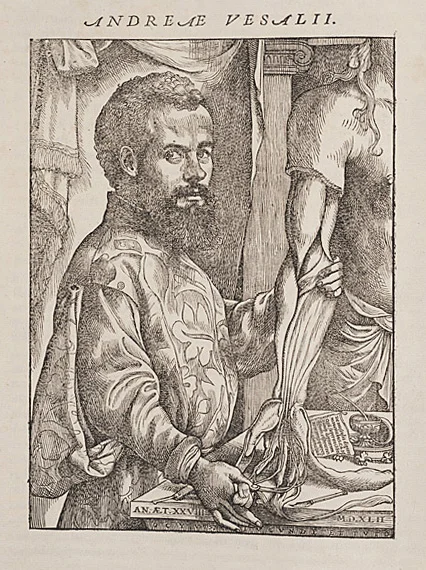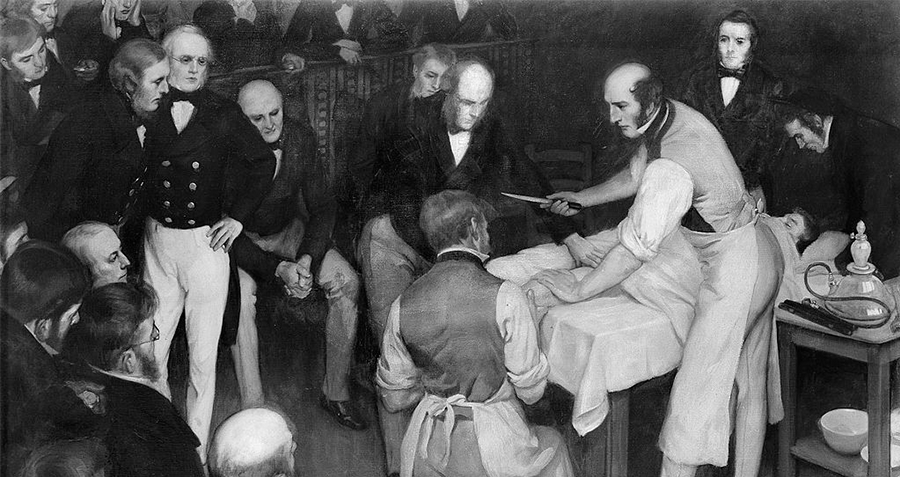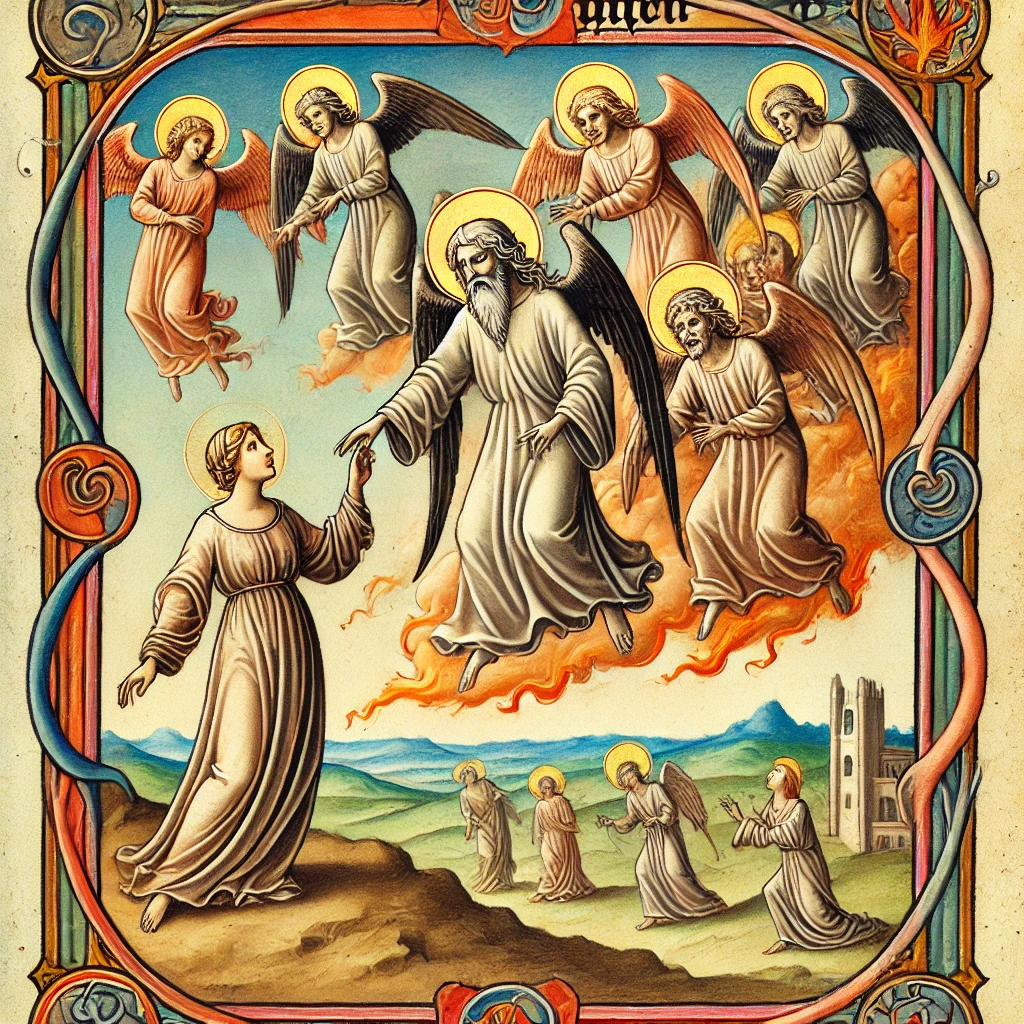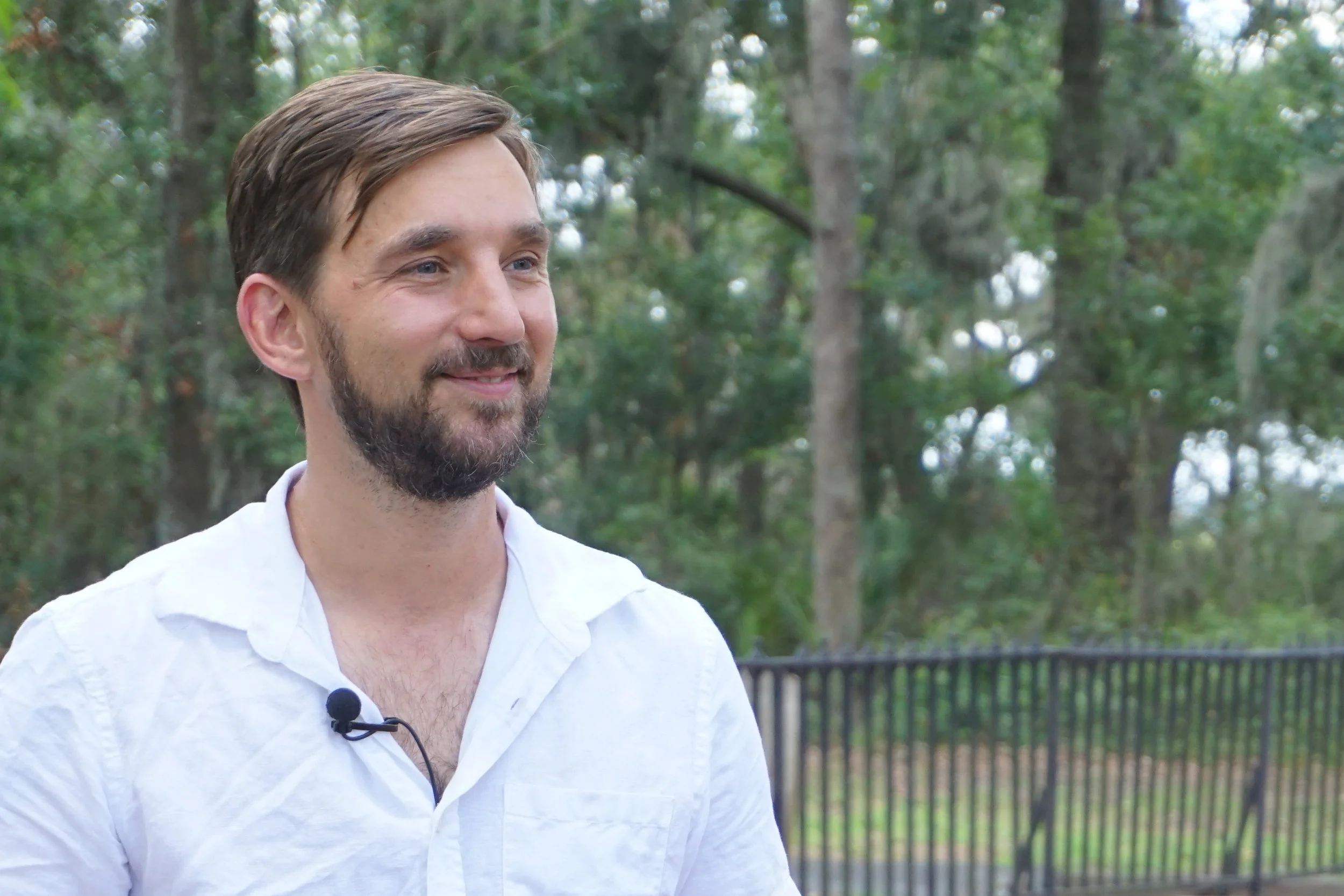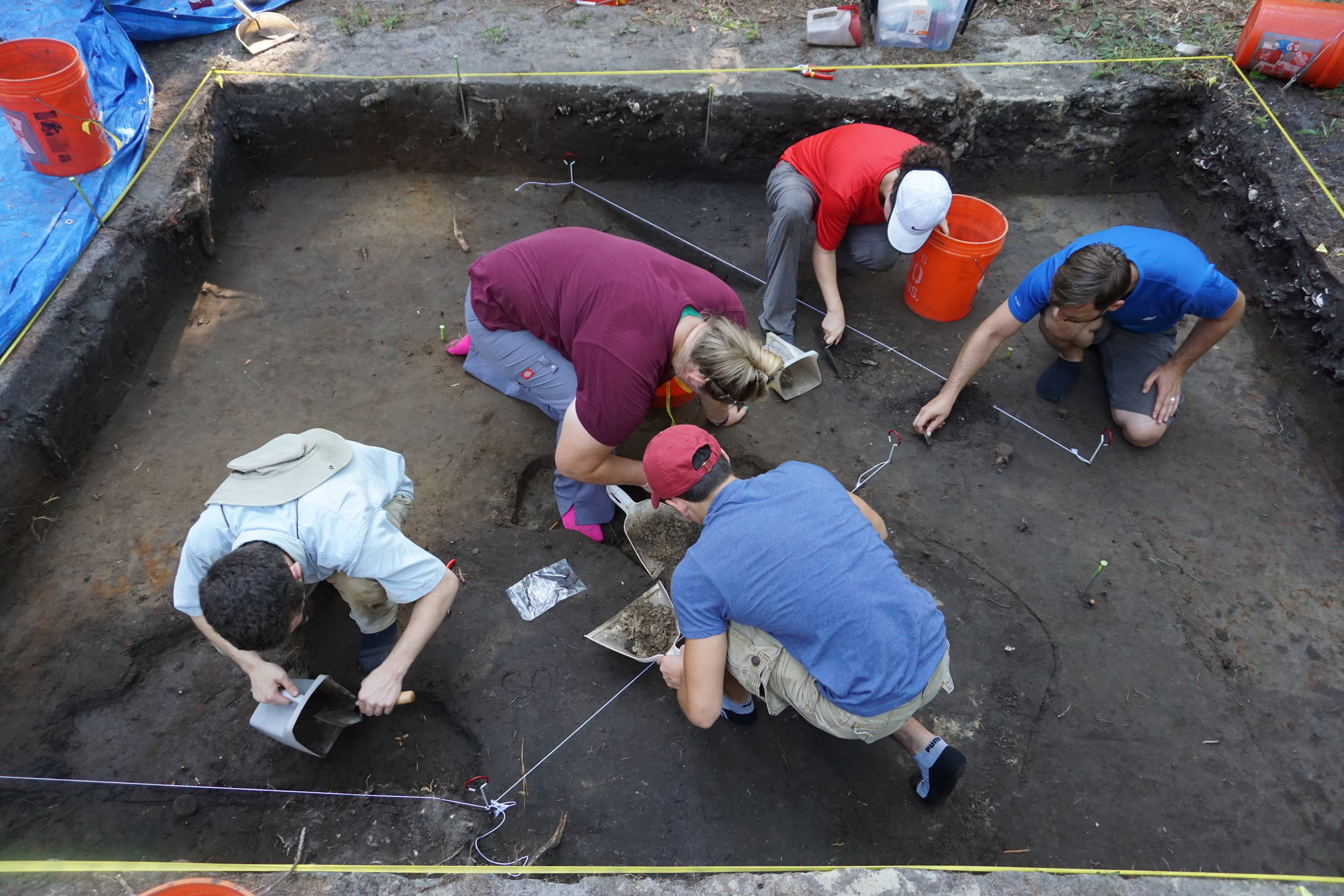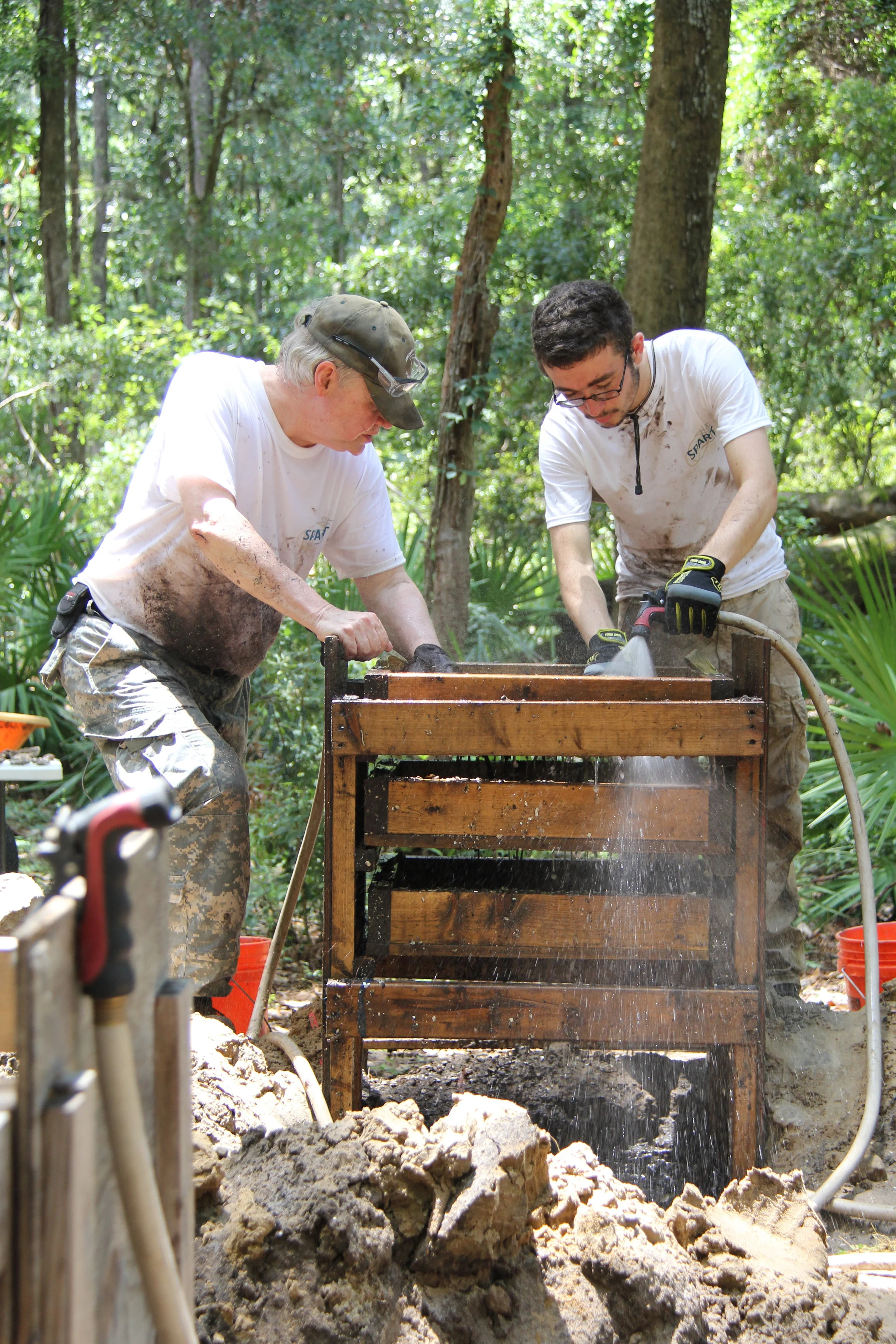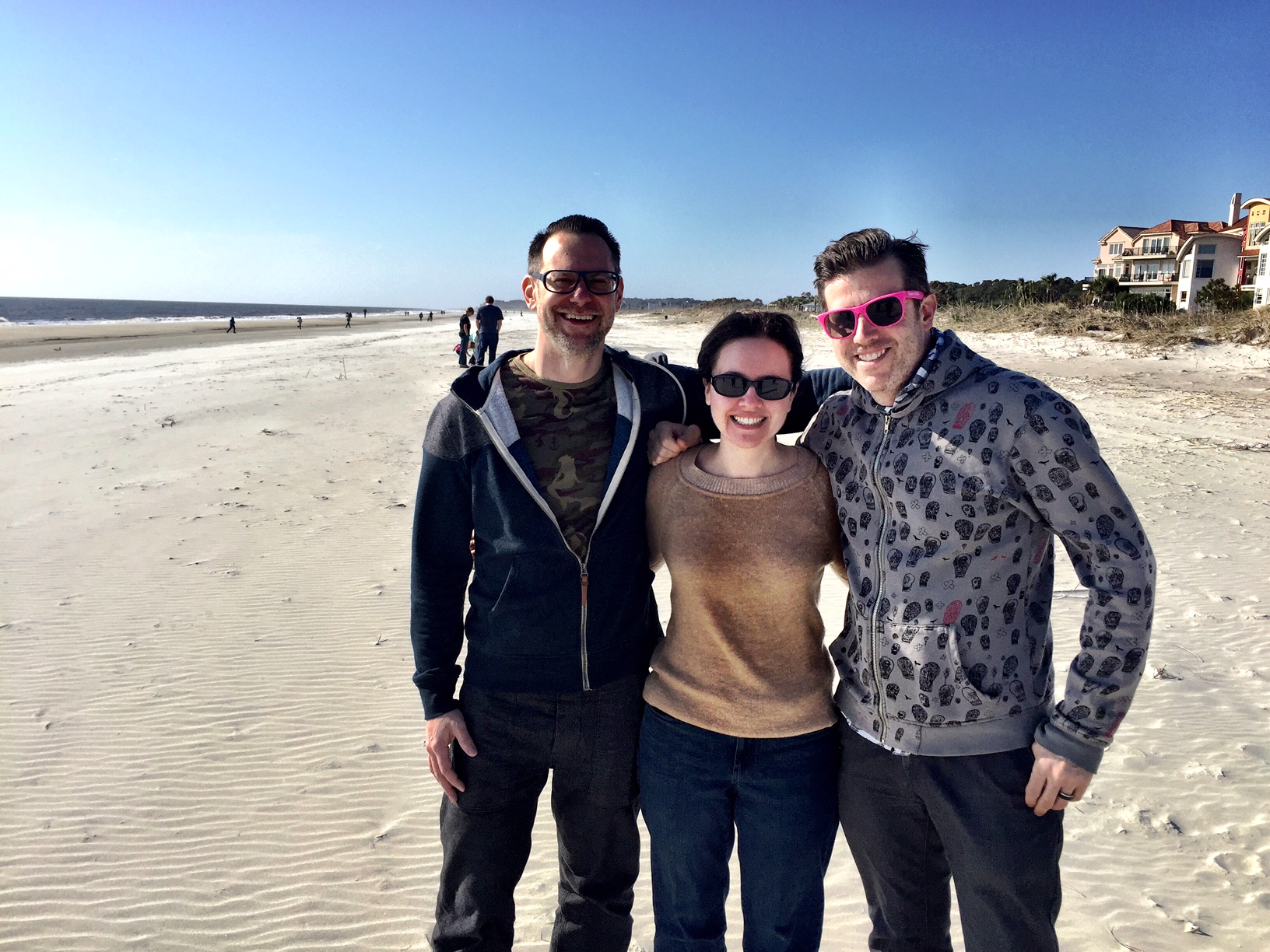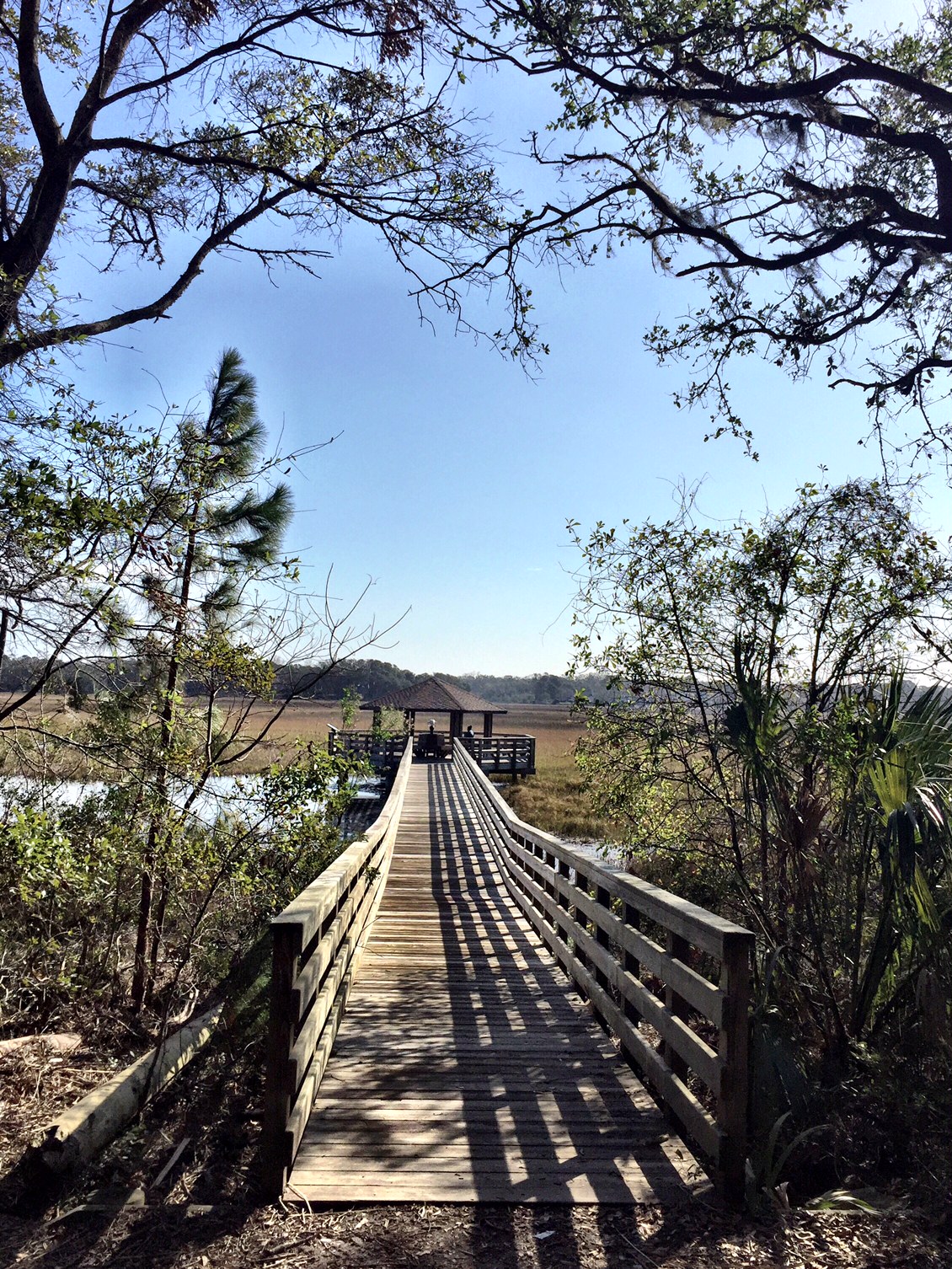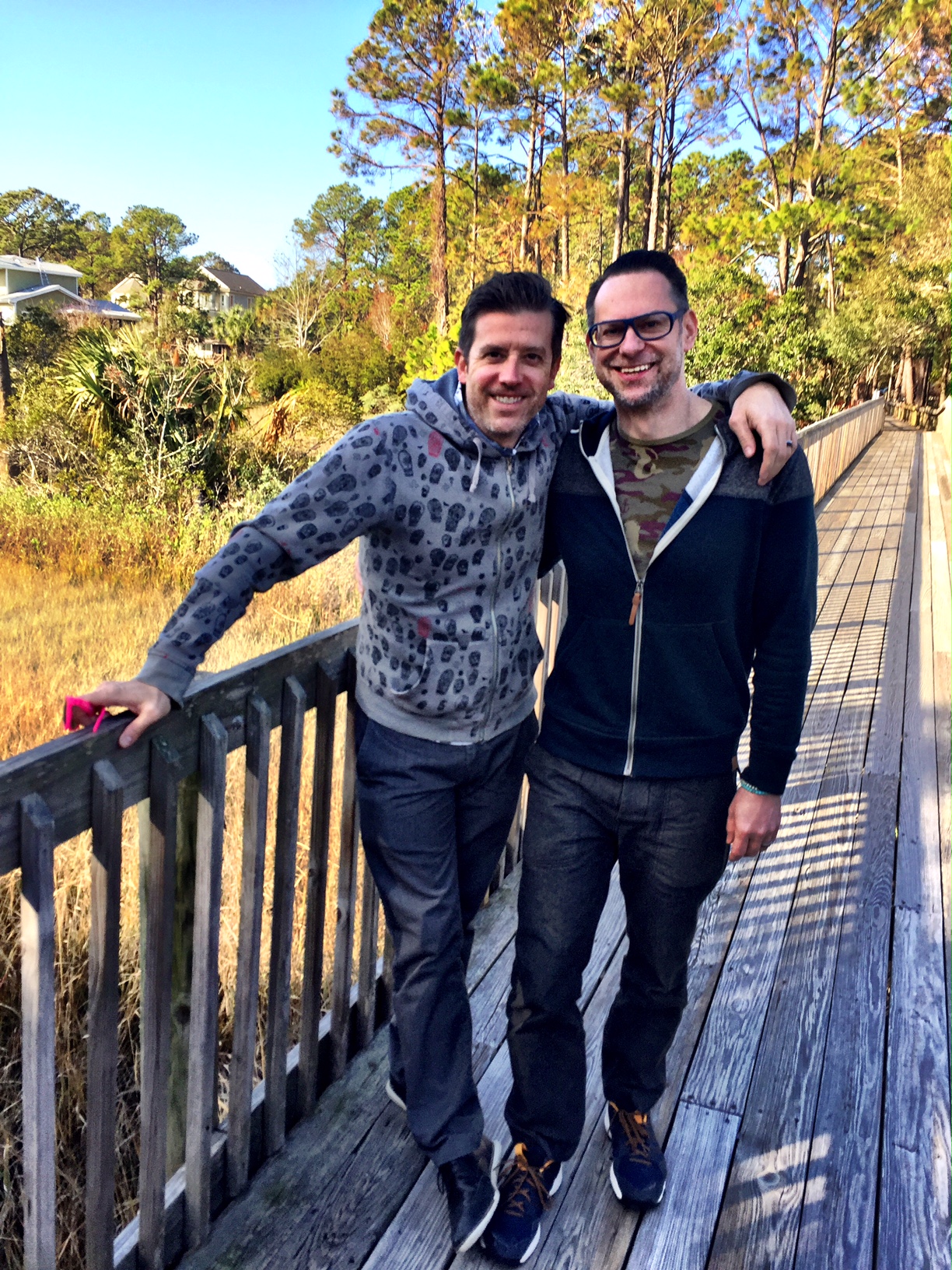What is Baha’i? What’s the history of the Baha’i Temple in Wilmette, Illinois?
The beauty of the Bahai’i Temple makes Wally jump for joy.
Those of us who live in the Chicago area are familiar with the Baha’i Temple — though most know nothing about the religion itself. We’ve seen glimpses of the structure on the North Shore and have been drawn to it, where we discover that it’s a gorgeous building that makes for a pleasant visit to spend a short time wandering its gardens and admiring its intricate stonework.
Which is exactly what we did one weekend with our friend Kate during the COVID-19 pandemic. We weren’t able to go inside the temple, but to be honest that’s not too big a disappointment. The interior isn’t all that impressive — a large, open space that’s unadorned, in stark contrast to the ornate exterior. OK, the interior of the dome is gorgeous. But that’s the extent of the beauty inside, I promise.
“The Earth is but one country, and mankind its citizens.”
An illuminated manuscript of Baha’u’llah’s writings that was presented to the British Museum in 1913
What is the Bahá’í religion?
It’s a relatively new faith, having emerged in the Middle East in the 1840s. A Persian teacher known as Bahá’ulláh preached a religion founded on the principles of peace, equality and the unity of humankind. Sounds nice, doesn’t it?
Bahá’ulláh, the founder of the Baha’i faith, might look stern — but he was really all about peace, love and understanding.
To Baha’is, the soul is eternal and should be illuminated by focusing on kindness, generosity, integrity, truthfulness, humility and selflessness. That’s exactly what this world needs more of, if you ask me.
At a Parliament of the World’s Religions meeting in Chicago in 1893, the United States was introduced to Baha’i. (By the way, it’s pronounced “Buh-high.”) Despite being proclaimed as one of the world’s fastest growing religions, it never caught on big time, and I’d wager that most Americans aren’t familiar with the faith.
But by 1900, there were about 1,000 Baha’is living in the U.S. and Canada. Worldwide, the faith’s adherents now number around 5 million.
Duke and Wally spent a pleasant day with their friend Kate, circling (and admiring) the Baha’i Temple.
Do they have a prophet or savior like Mohammed or Jesus?
Like Muslims, the Baha’i believe that Mohammed, as well as Jesus (along with Abraham, Moses, Buddha, Krishna and Zoroaster, for that matter) was a prophet — just not God’s final prophet. Divine revelation, to them, is not final but ongoing; there will be other prophets in the future. Maybe the next one will be female.
The Baha’i faith sees all people as equal — a view that doesn’t fit with conservative Islam — and has led to persecution since its inception.
How have Baha’i been treated over the years?
It’s sad that a religion that preaches acceptance has suffered so much oppression and violence. Perhaps it’s telling that no temple exists in Iran, the birthplace of the faith. The Baha’i messages of religious tolerance, gender equality, universal education, and elimination of all prejudice and racism don’t jibe well with many conservative religious entities, and the faith is viewed as a heretical branch of Islam. As such, countries including Yemen, Egypt and Afghanistan have persecuted and imprisoned Baha’is on the sole grounds of their beliefs. And Iran has a history of torturing and killing Baha’is, closing their schools, banning their literature, and denying their rights and marriages.
Worship for Baha’is is very personal and freeform, devoid of rituals and clergy.
What is worship like for Baha’i?
The freeform, personal worship certainly won’t appeal to everyone, especially those who find comfort in religious rituals. My ex became interested in Baha’i, but the lack of any sort of pomp and circumstance never appealed to me. I have always been more drawn to Wicca, which has a similar acceptance of all faiths, seeing them as symbols, but has the flair of magic spells.
In keeping with the Baha’i philosophy of egalitarianism, everyone is welcome at their temples, and there isn’t any clergy. Ceremonies happen on only a few holy days each year. Typical worship consists of sitting there quietly, praying or meditating on your own.
It’s also encouraged to get involved in social projects in your community.
The COVID pandemic meant most people had to stay closer to home, so Wally and Duke headed up to give the Baha’i Temple another visit.
What is the Chicago Baha’i Temple’s history?
It began with the purchase of a couple of plots of land along Lake Michigan in 1907, north of Chicago in what is now the town of Wilmette. Because it was funded by individual contributions, the project was delayed, much like Gaudí’s La Sagrada Família cathedral in Barcelona, Spain (which is still being built, by the way). The Chicago Baha’i Temple was further held up by the two World Wars and the Great Depression. The foundation stone was laid in 1920 and construction ended with the temple’s formal dedication in 1953.
The temple was built from 1920 to 1953 and is composed of a variety of architectural styles.
Who designed the Chicago Baha’i Temple?
Louis Bourgeois, a French Canadian who had been a Baha’i for over a decade at the time, got the commission. He wanted the building’s design to reflect the beliefs of the faith: the oneness of humanity and the unity of all religions. To really run with this symbolism, he designed a conglomerate of various architectural styles: Neoclassical symmetry, Gothic ribbing, a Renaissance dome, Romanesque clerestory and Islamic arabesques on pillars that hint at minarets. And while that sounds like an unpleasing Frankensteinian mishmash, it somehow all comes together gracefully.
The carvings on the nine pillars feature symbols of the world’s biggest religions: the Christian cross, the Jewish Star of David, the Islamic star and crescent moon — even the swastika of Hinduism, Buddhism and Jainism.
That swastika causes a lot of controversy — but that’s just because people don’t understand that Buddhists and Hindus have used that symbol long before the Nazis co-opted it.
Bourgeois’ vision was to create “a gathering place for all humanity.” When describing his design, the architect said, “There are combinations of mathematical lines, symbolizing those of the universe, and in their intricate merging of circle into circle, and circle within circle, we visualize the merging of all religions into one.”
Ornate scrollwork depicting symbols from major world religions covers the building’s façade.
What’s with the repetition of the number nine?
To a Baha’i, nine is the most sacred number. As the highest single digit, it’s a potent symbol of comprehensiveness as well as unity. In addition to the nine columns, there are nine entrances, nine verses above the doors and alcoves and nine fountains.
Each column is topped by a nine-pointed star, the symbol of Baha’i.
The nine columns around the exterior are each topped with a nine-pointed star, the symbol of the Baha’i faith.
Small pools and fountains surround the Baha’i Temple.
How many Baha’i temples are there?
The original idea was to have one house of worship on each inhabited continent (sorry about your luck, Antarctica), and the one in Wilmette, known as the Mother Temple of the West, remains the only one in North America. It’s also the oldest Baha’i temple in the world. (The first temple was built in Ashkhabad, modern-day Turkmenistan, in 1908 but was commandeered by the Soviets and later badly damaged by an earthquake before being demolished in 1963.)
The temple outside of Chicago is the only one on the continent and is supposed to serve all of North America.
Here’s a list of Baha’i temples around the world:
Other national or local Baha’i houses of worship are planned for the Democratic Republic of Congo, Papua New Guinea, Cambodia, India, Kenya, Colombia and Vanuatu.
If you’re in the Chicago area, consider a trip north of the city to visit the Baha’i Temple.
What about the gardens?
The gardens are an essential design element at all the temples. There’s one in front of each of the nine entrances to the temple, featuring rectangular as well as rounded elements, revealing influences both Western and Eastern.
Wandering through the gardens with our friend Kate, we kept circling the temple, admiring its beauty. The circumambulation can be meditative.
Who’d have thought that the delicate beauty of the Baha’i Temple was achieved using concrete?!
What is the Chicago temple made of?
Would you believe that various materials were suggested, including limestone, granite, terracotta and even aluminum, before they decided upon concrete?
This didn’t go over so well, as people feared the material lacked beauty. But a fifth-generation stone carver named John Earley devised a technique inspired by Italian mosaics. He exposed the larger pebbles in the aggregate of the mixture, which gave the concrete an unusual warmth. And when you see the final product nowadays, there’s no denying its lacelike beauty that seems to glow, earning its nickname as the Temple of Light and Unity.
Sadly, neither Bourgeois nor Earley lived to see the temple’s completion. –Wally
Kate wasn’t the biggest fan of this shot. “It looks like you’re in front of some office building,” she said. Wally looked at the pic and replied, “That’s some office building!”
Bahá'í House of Worship
100 Lindon Ave.
Wilmette, IL 60091


